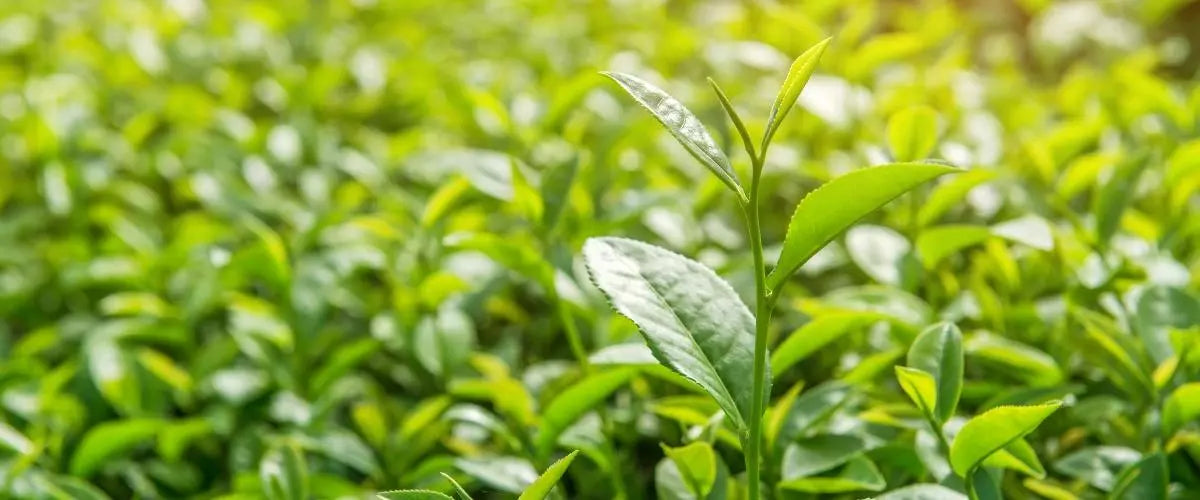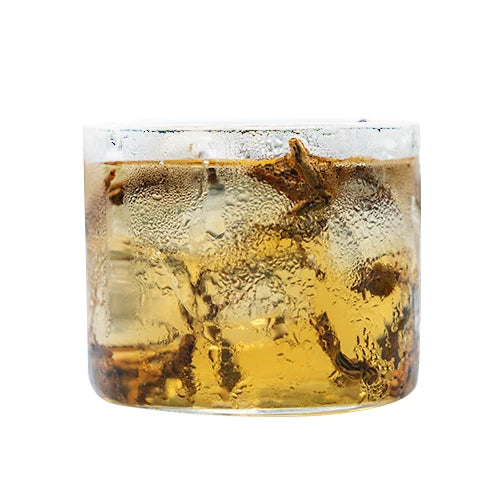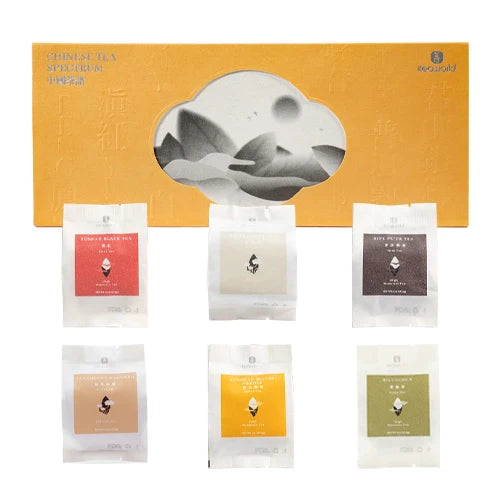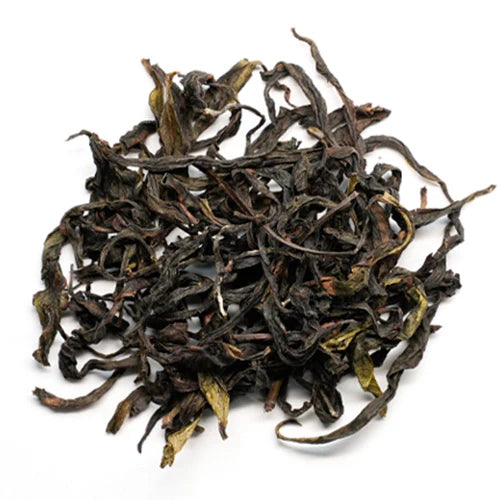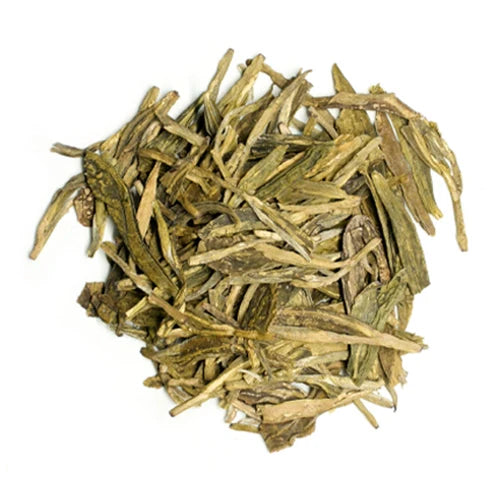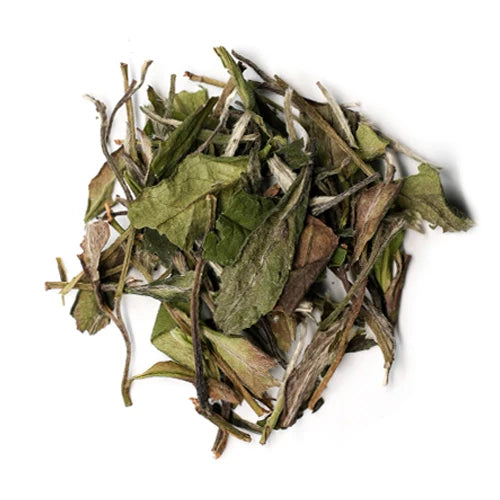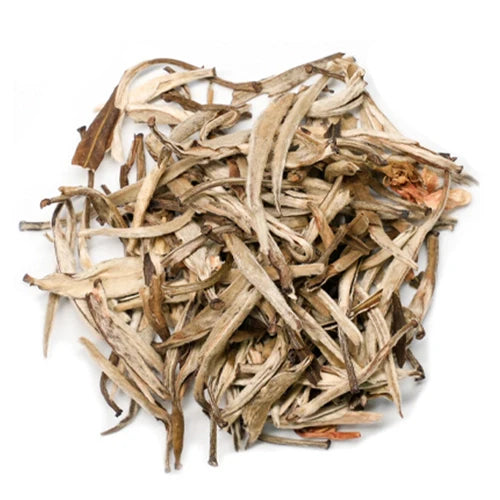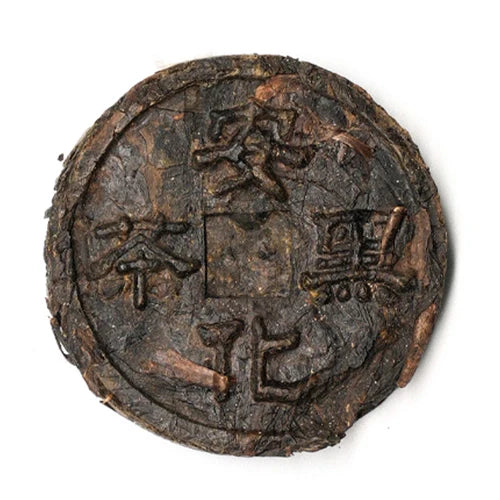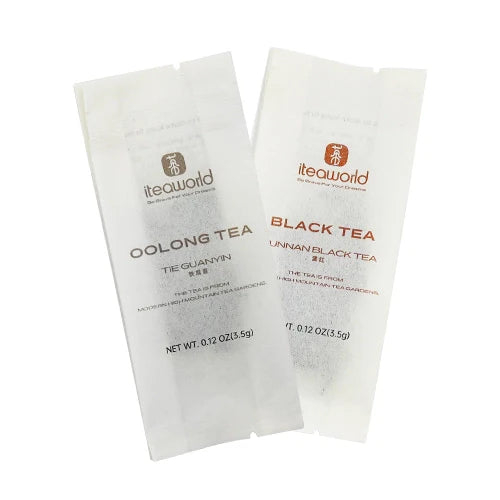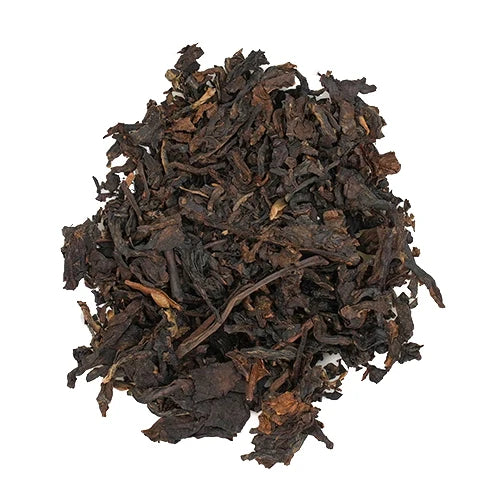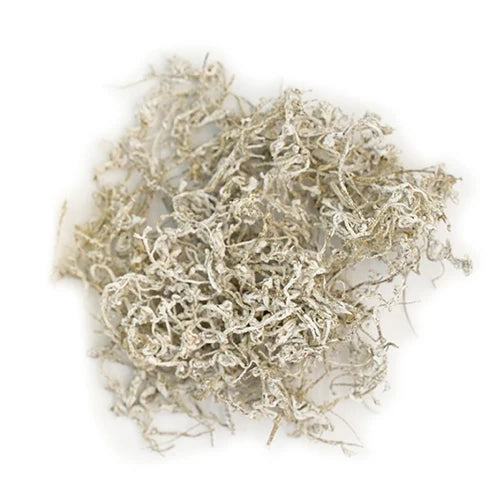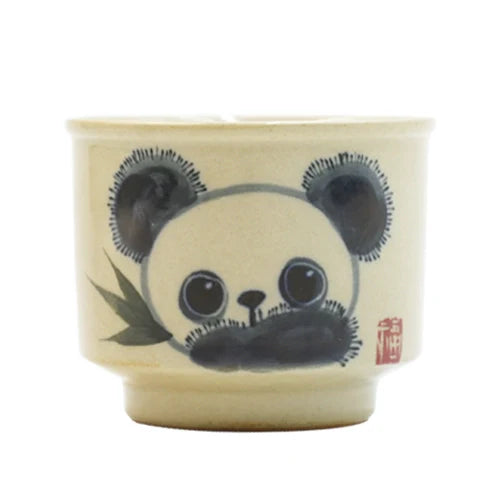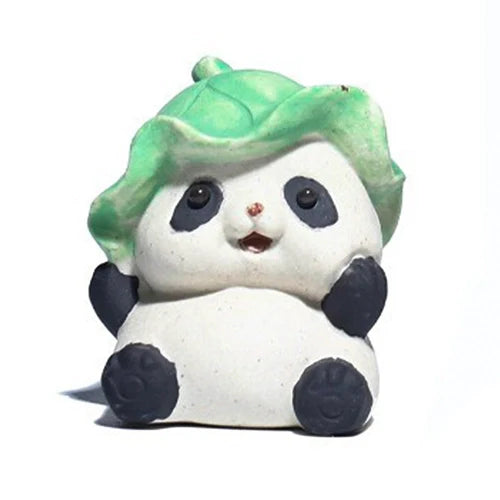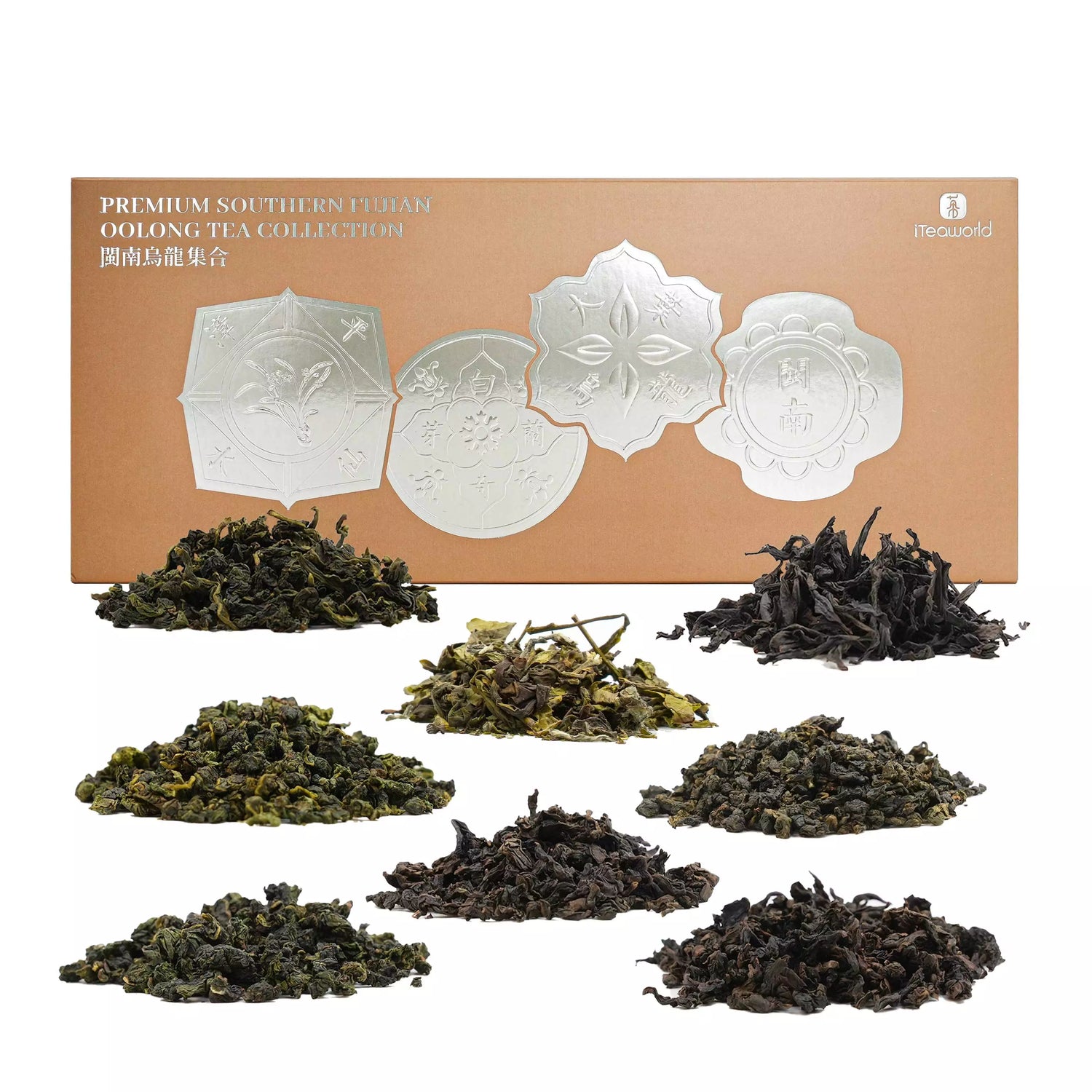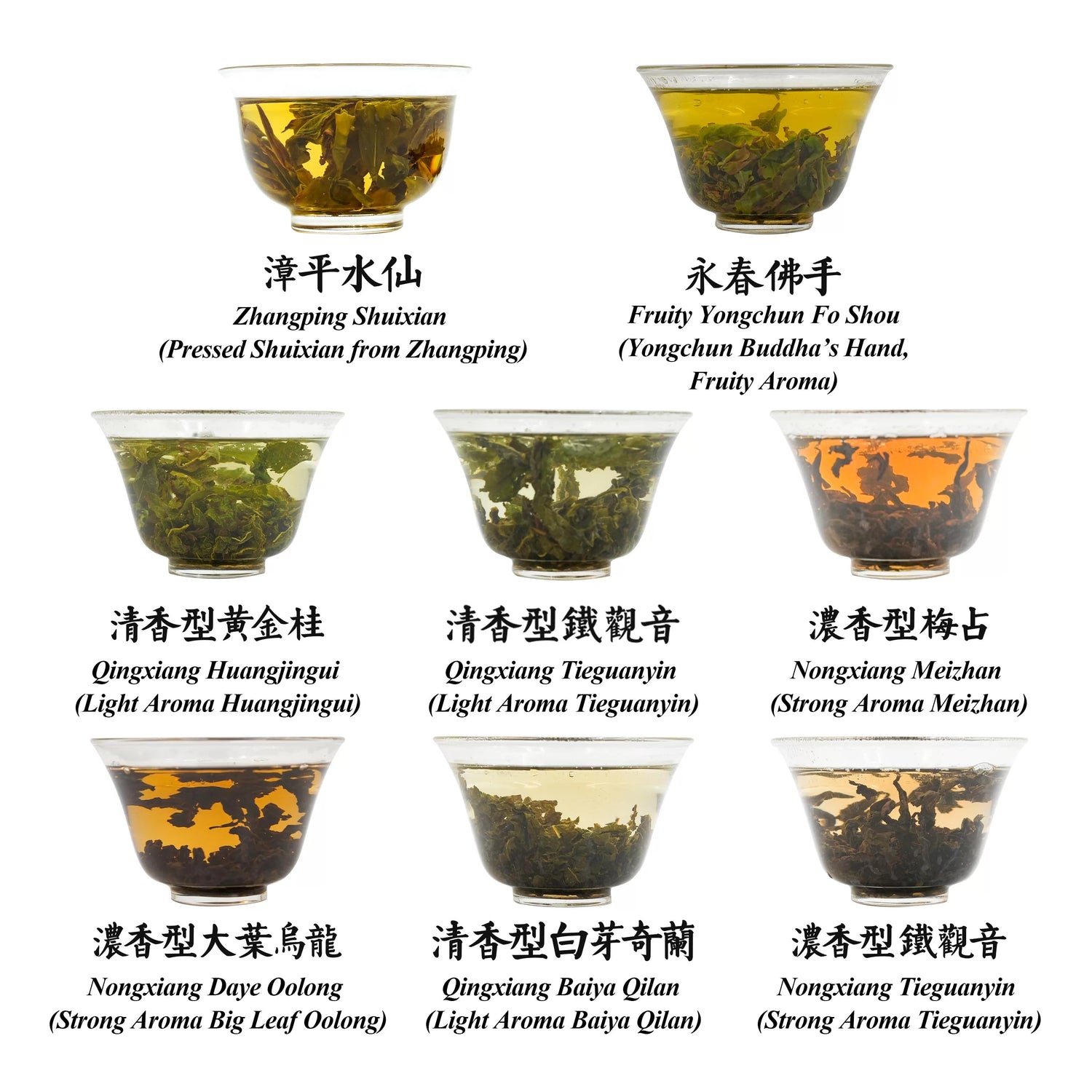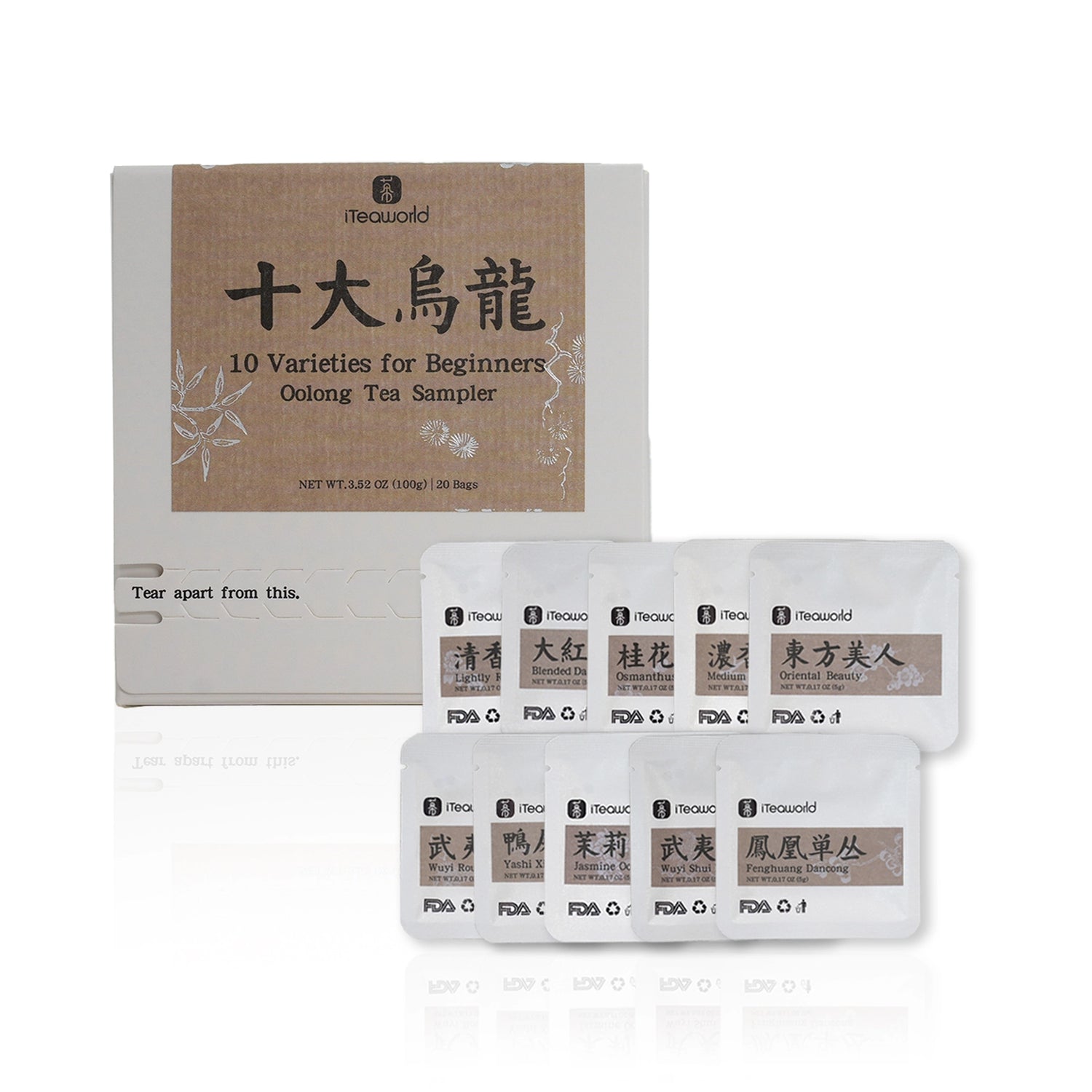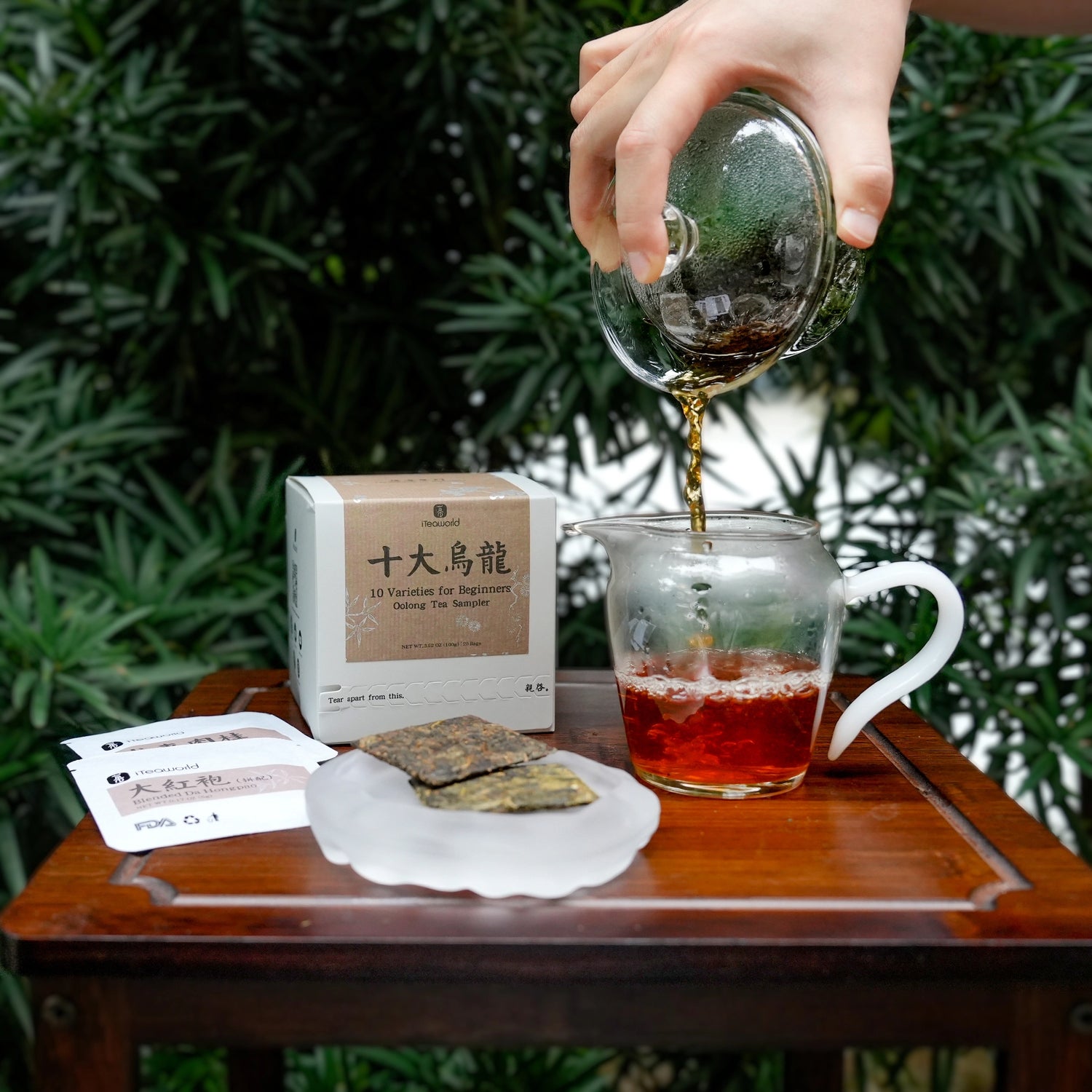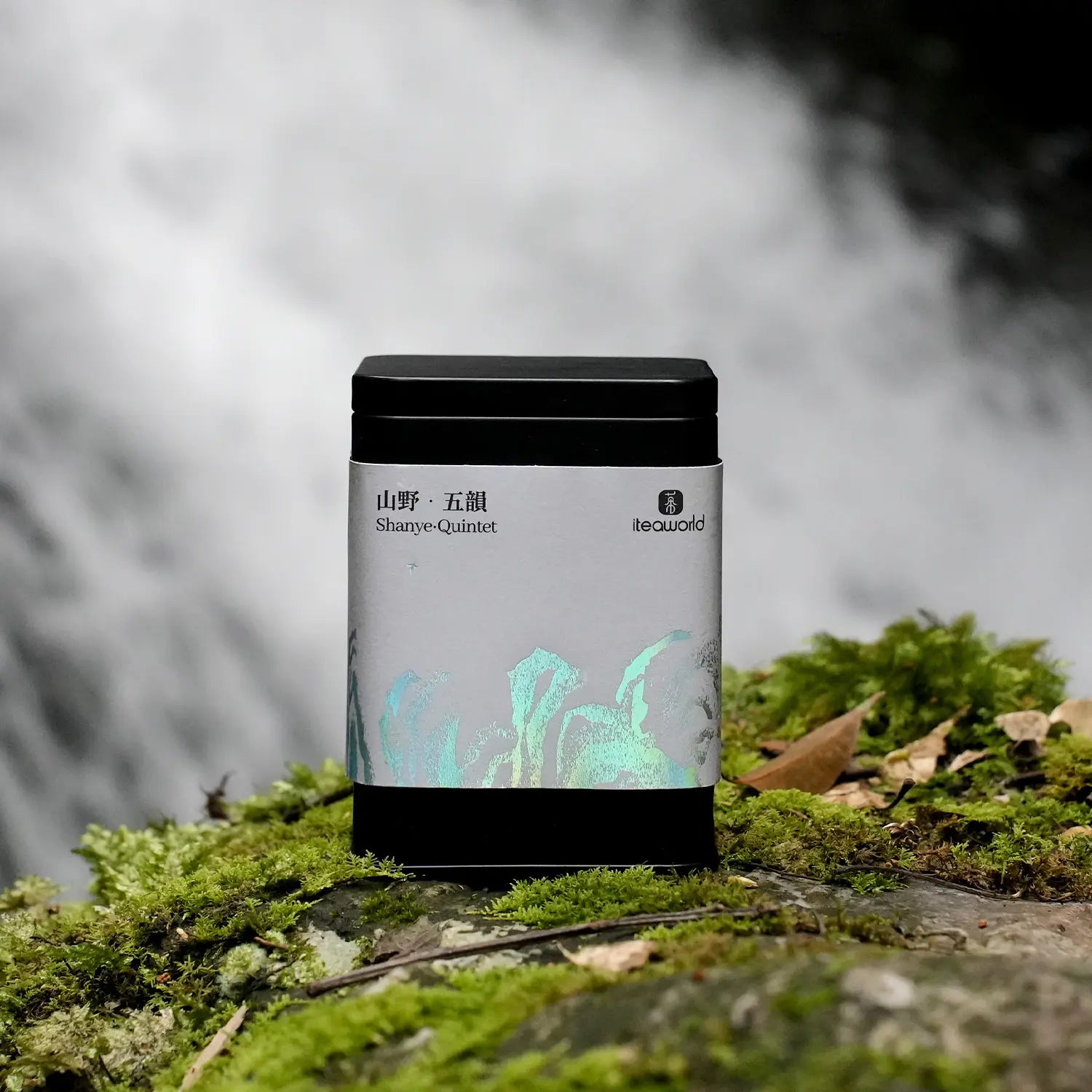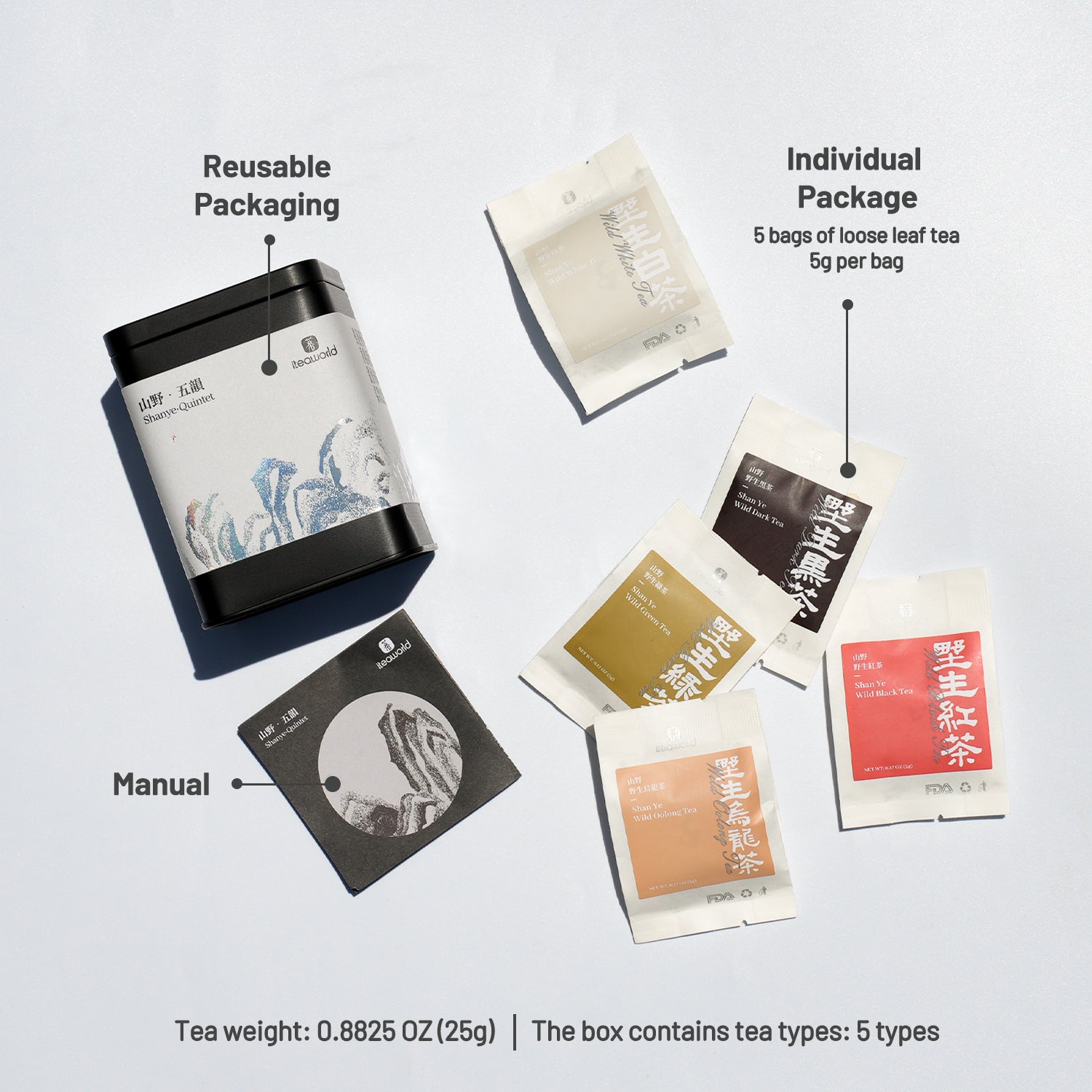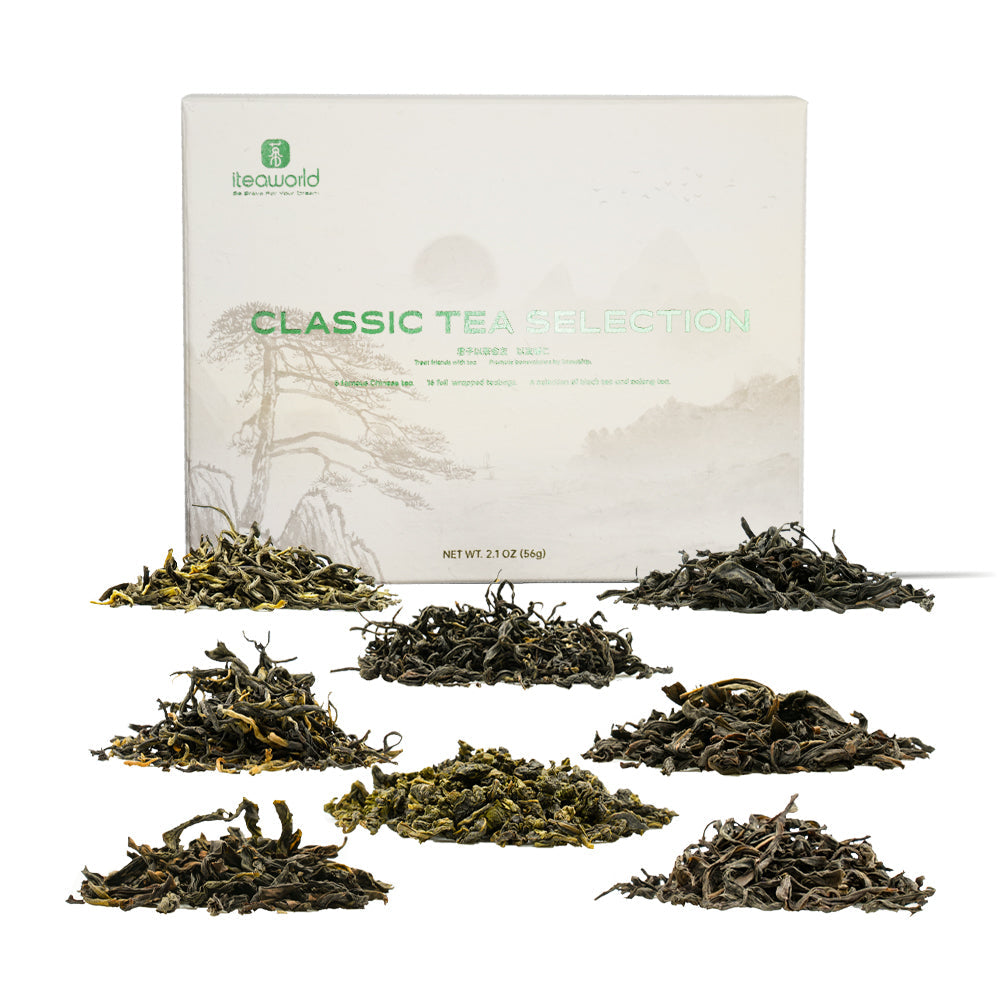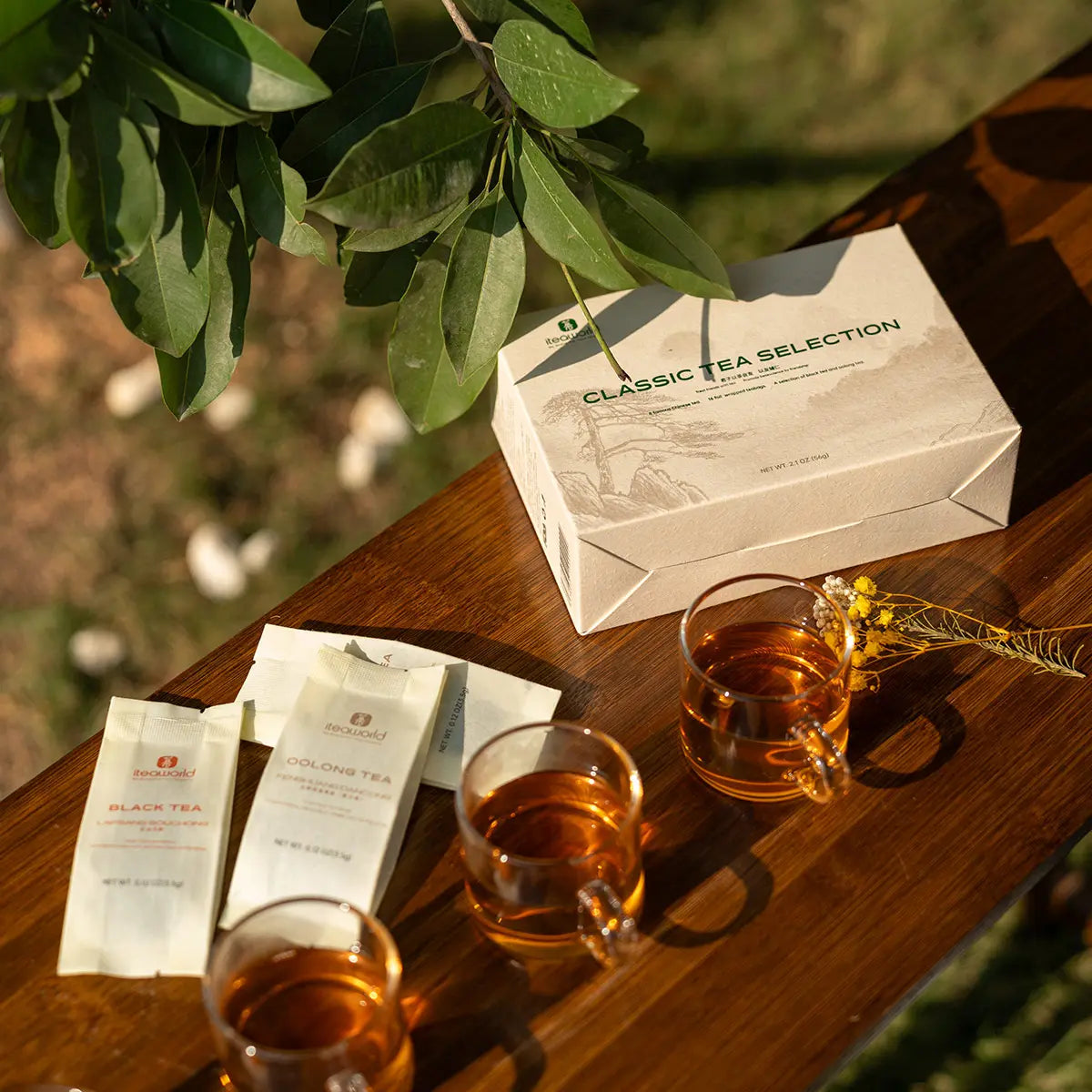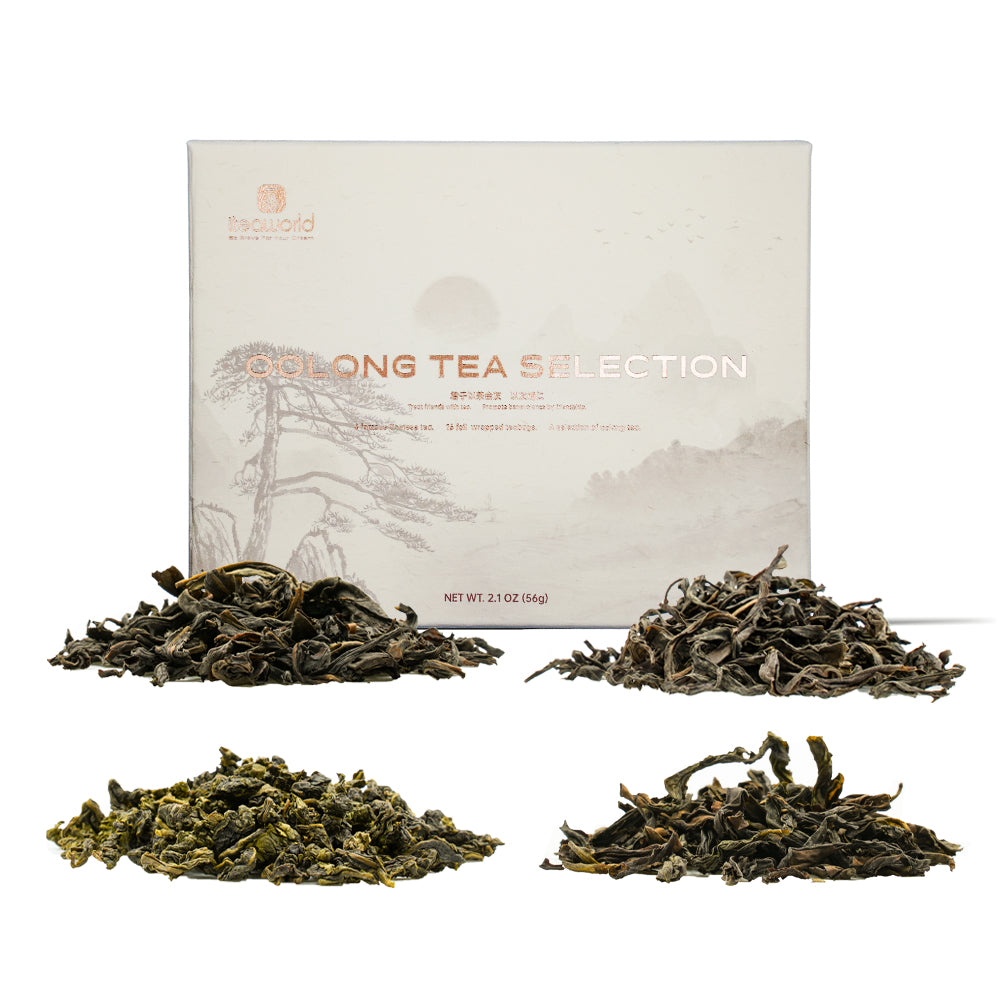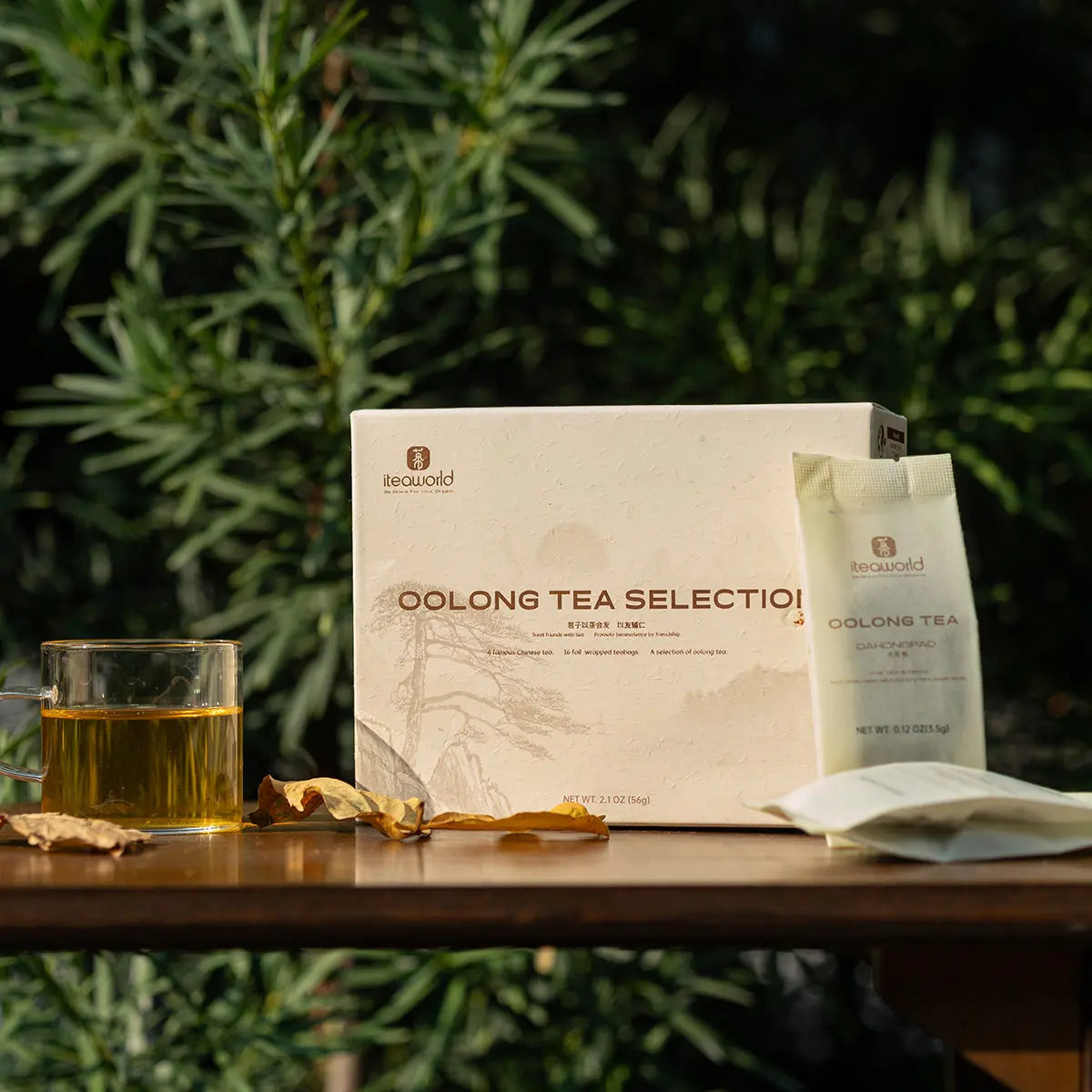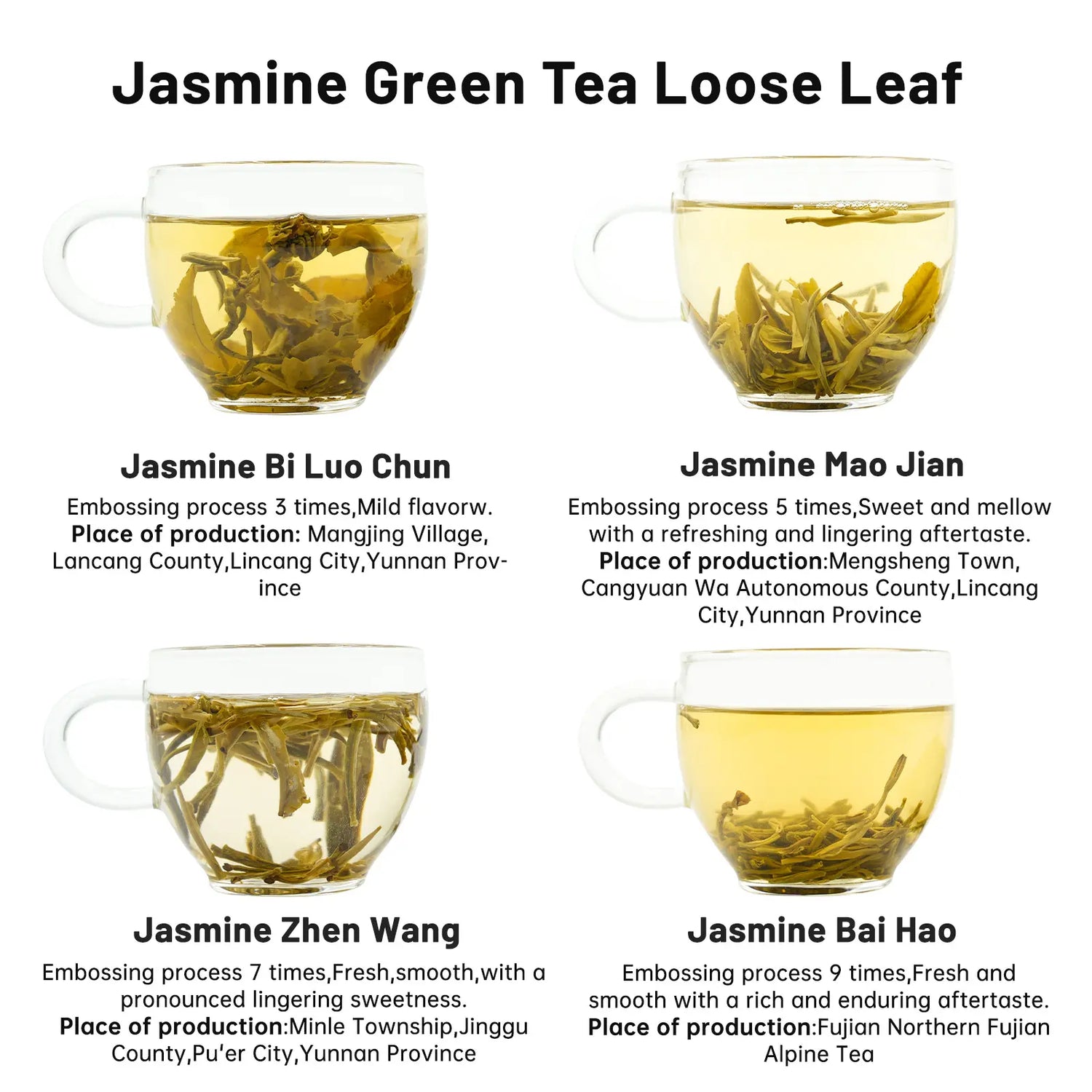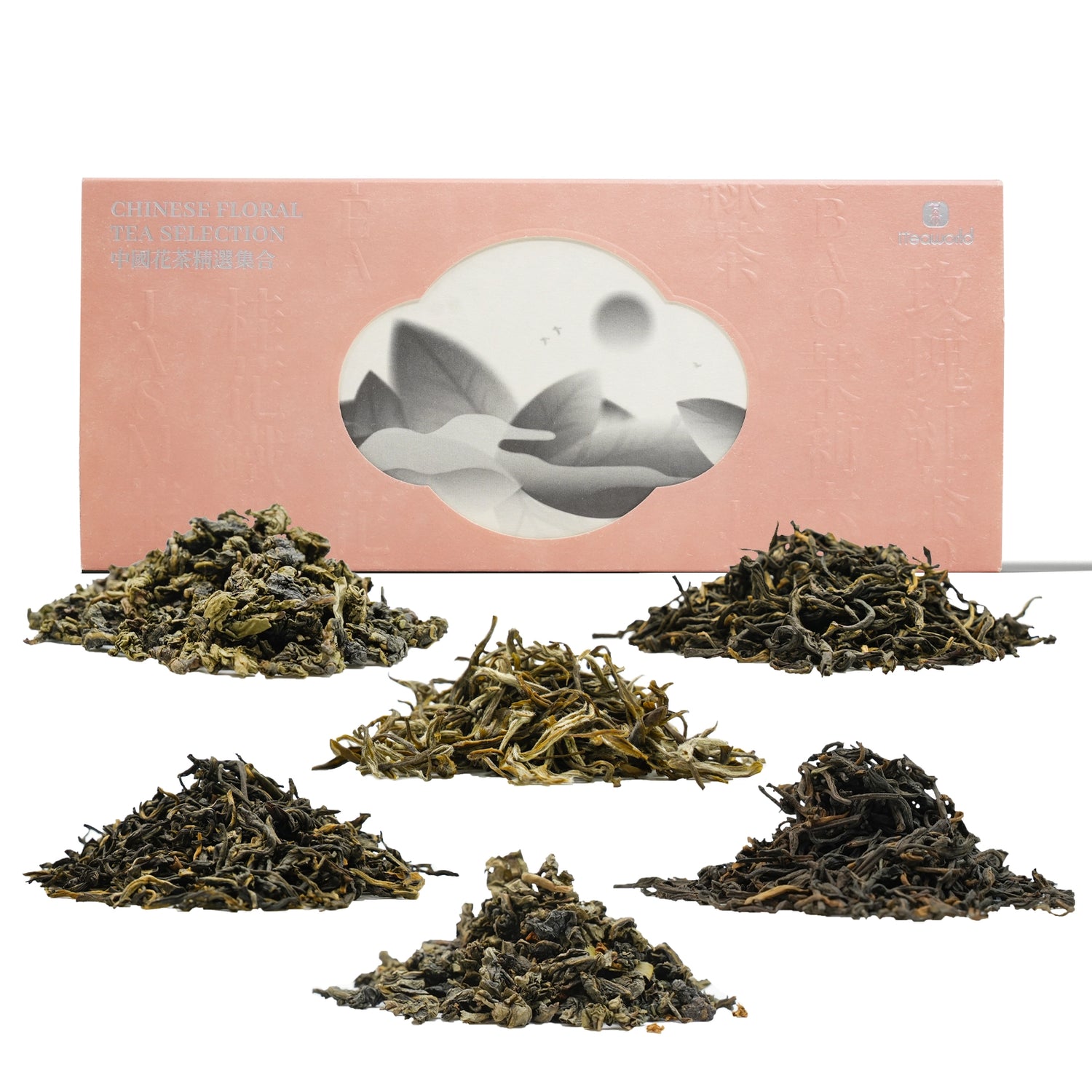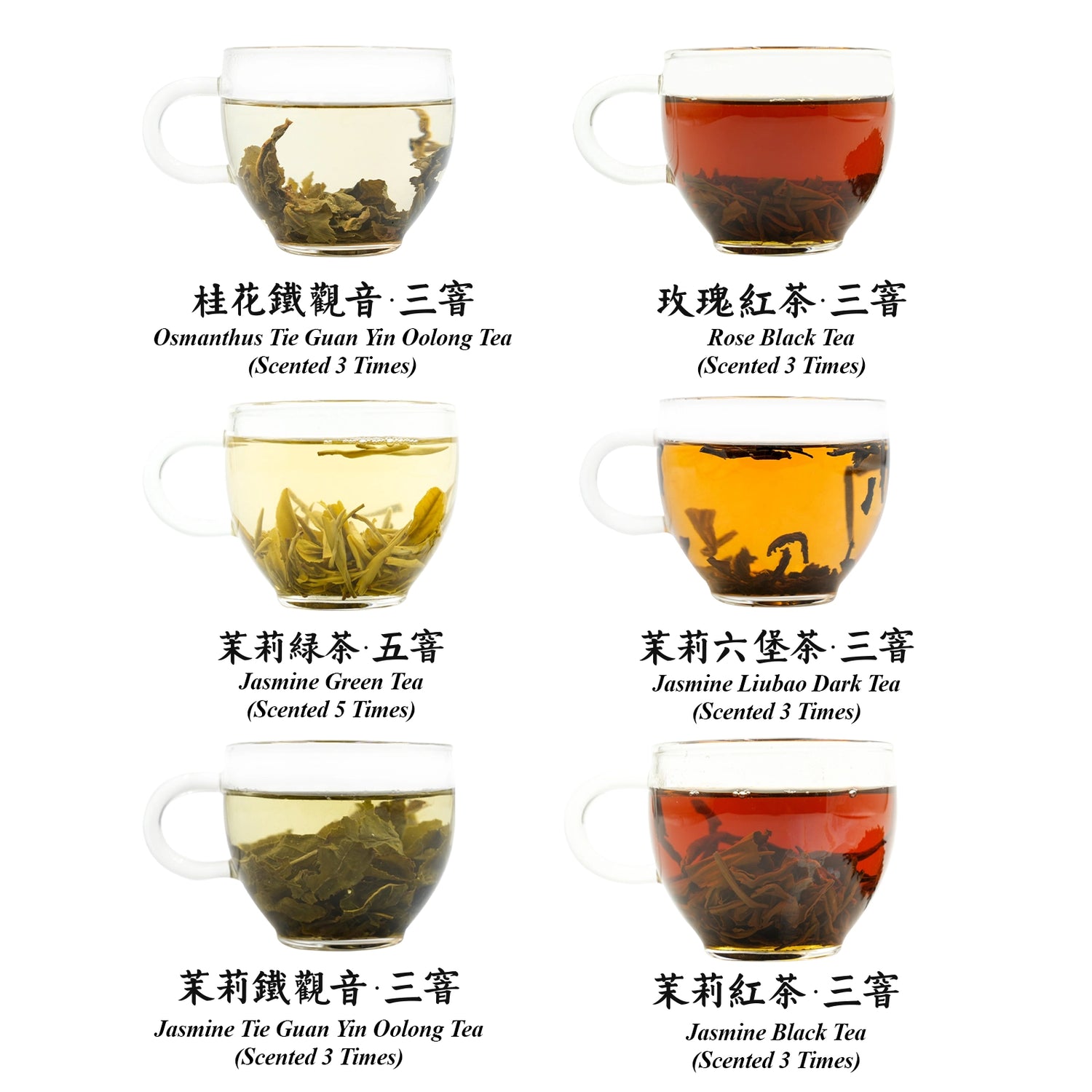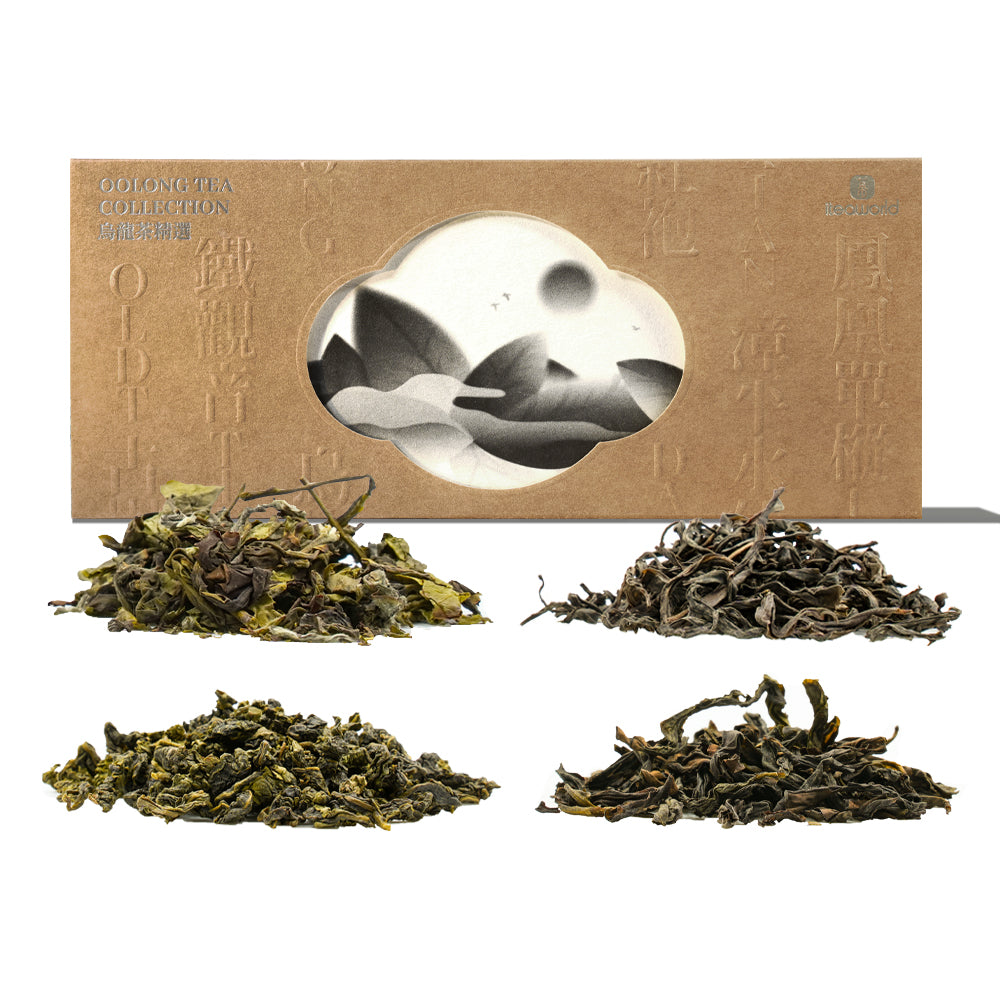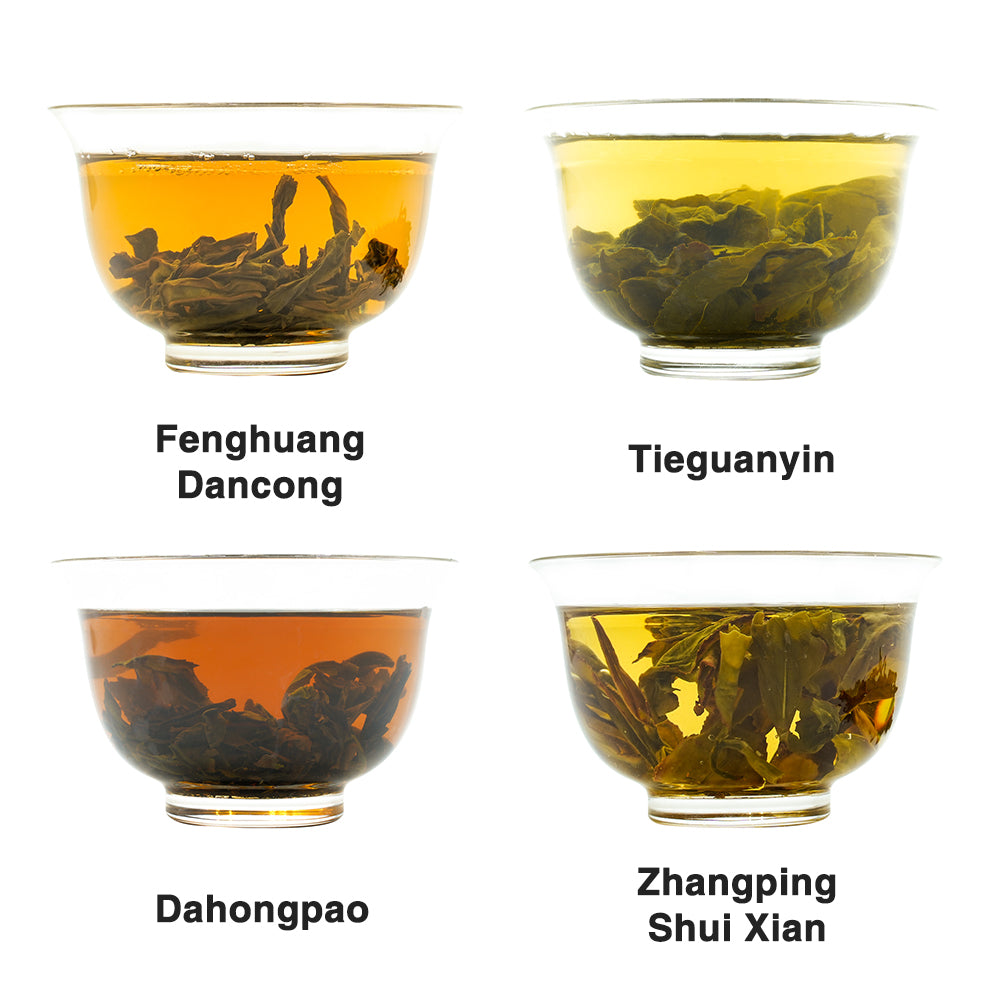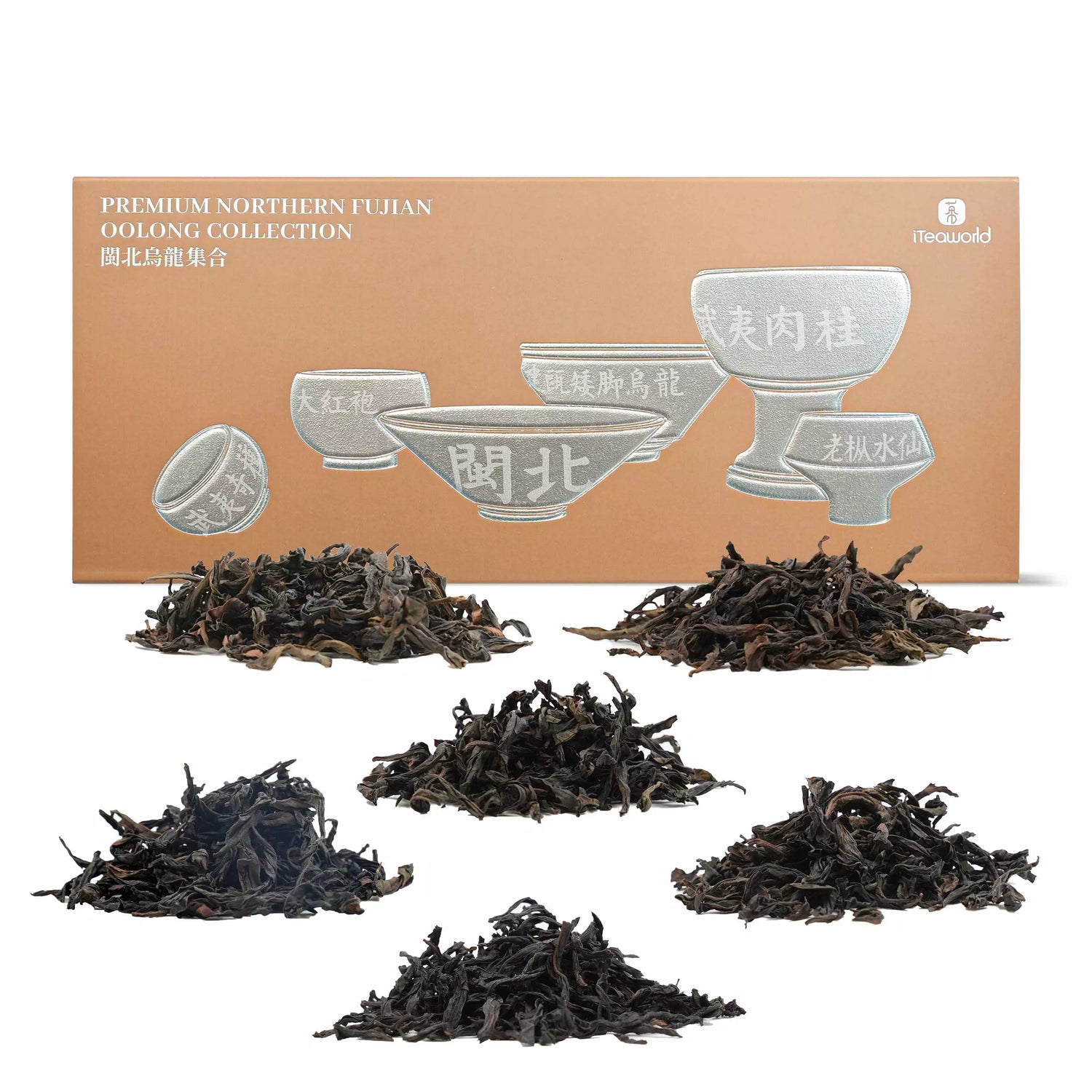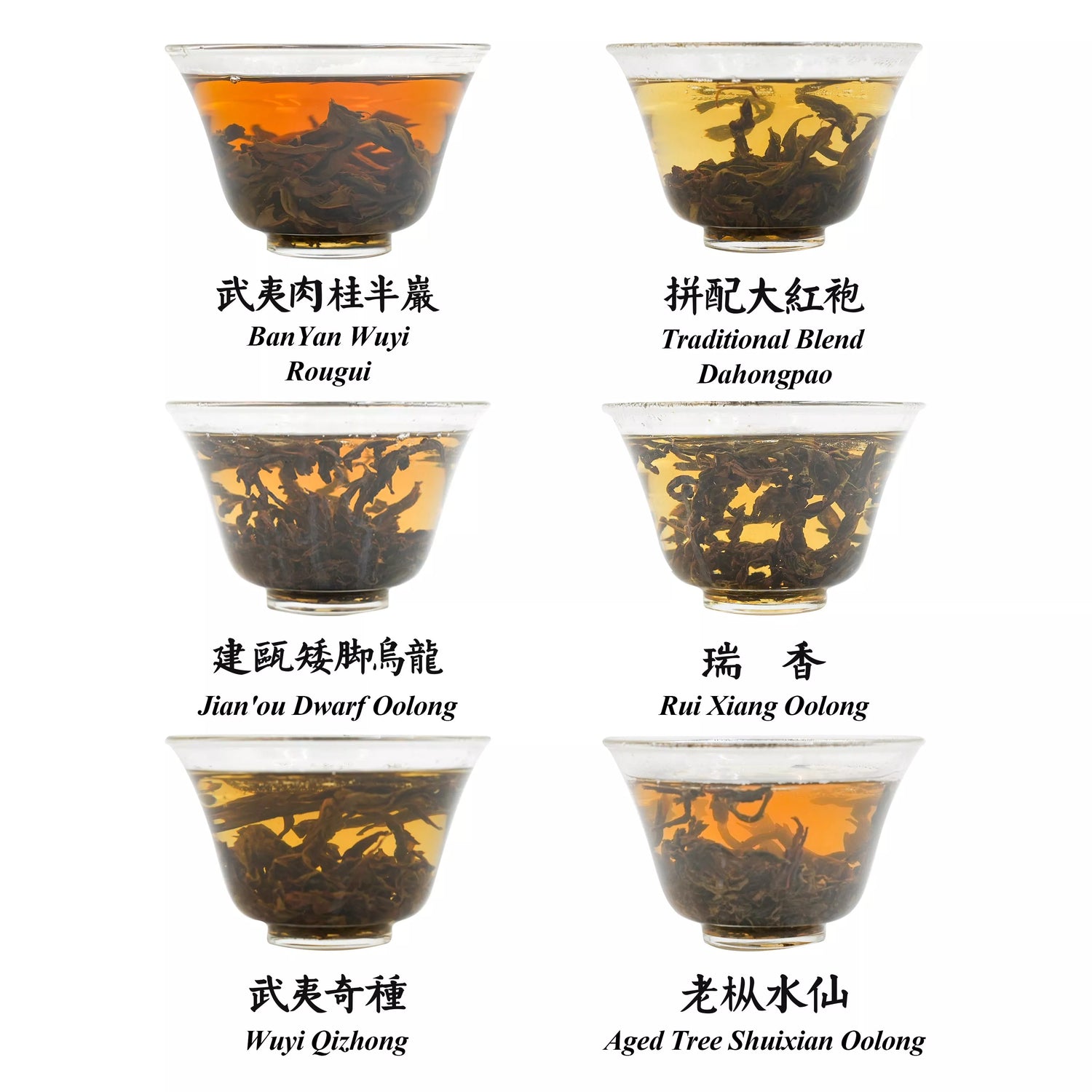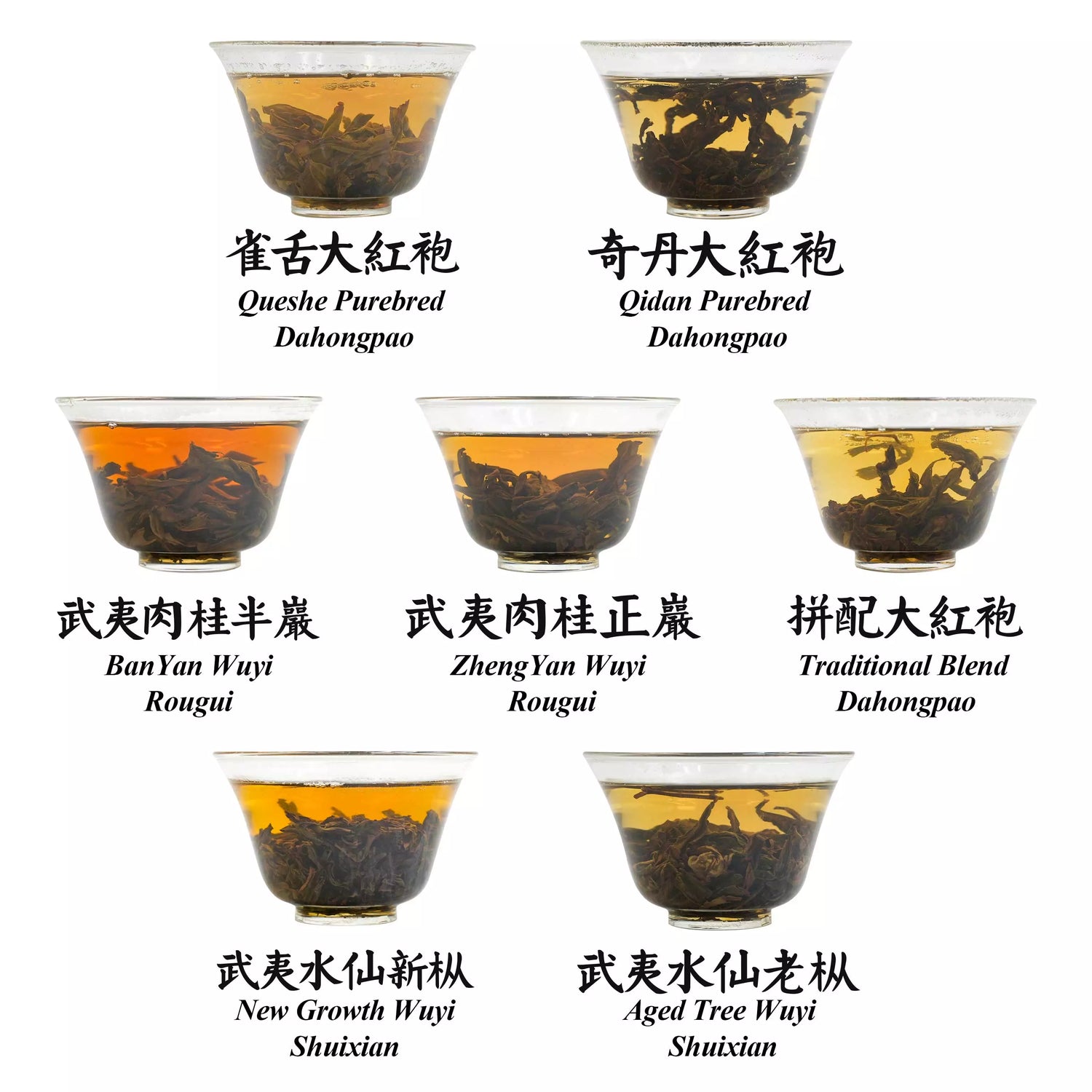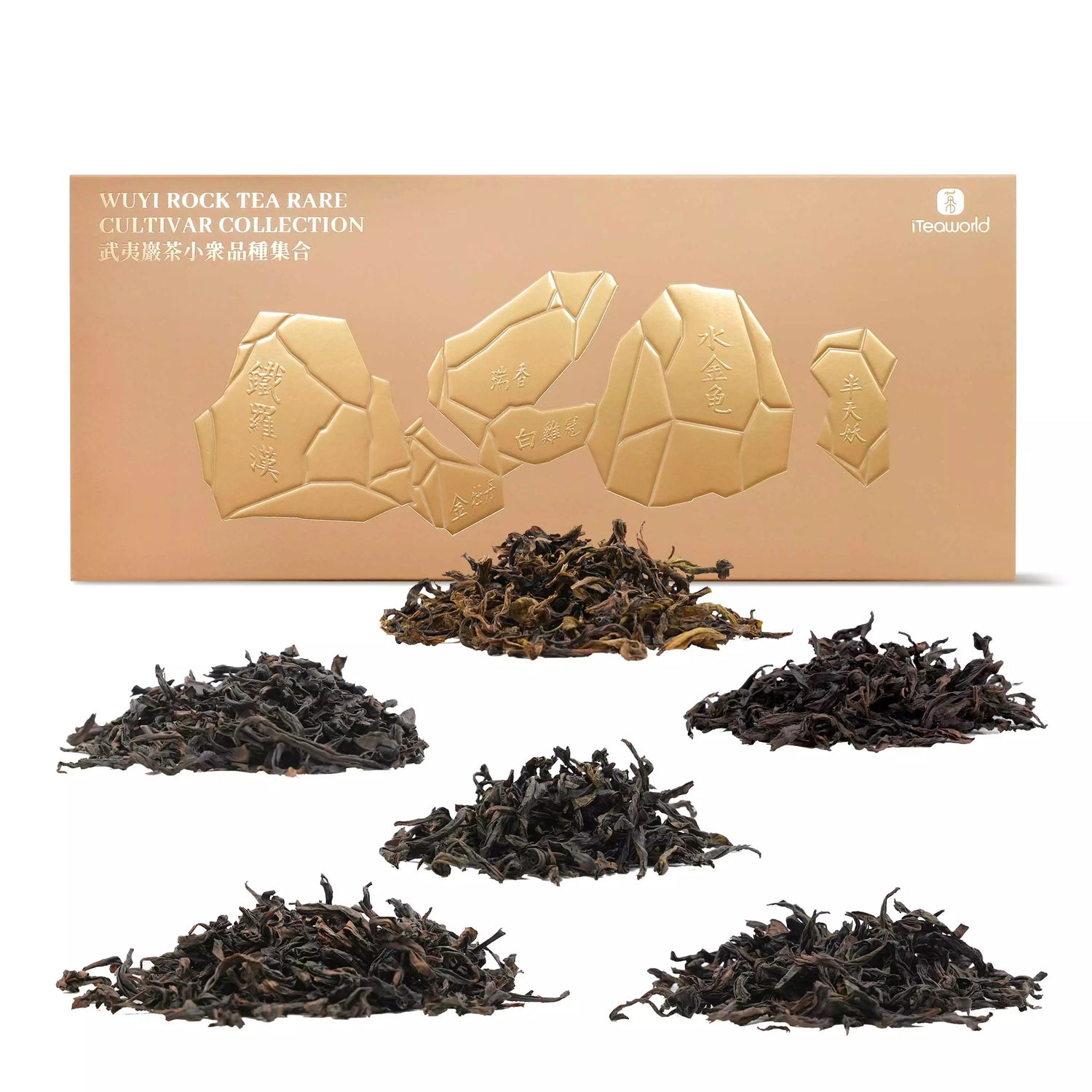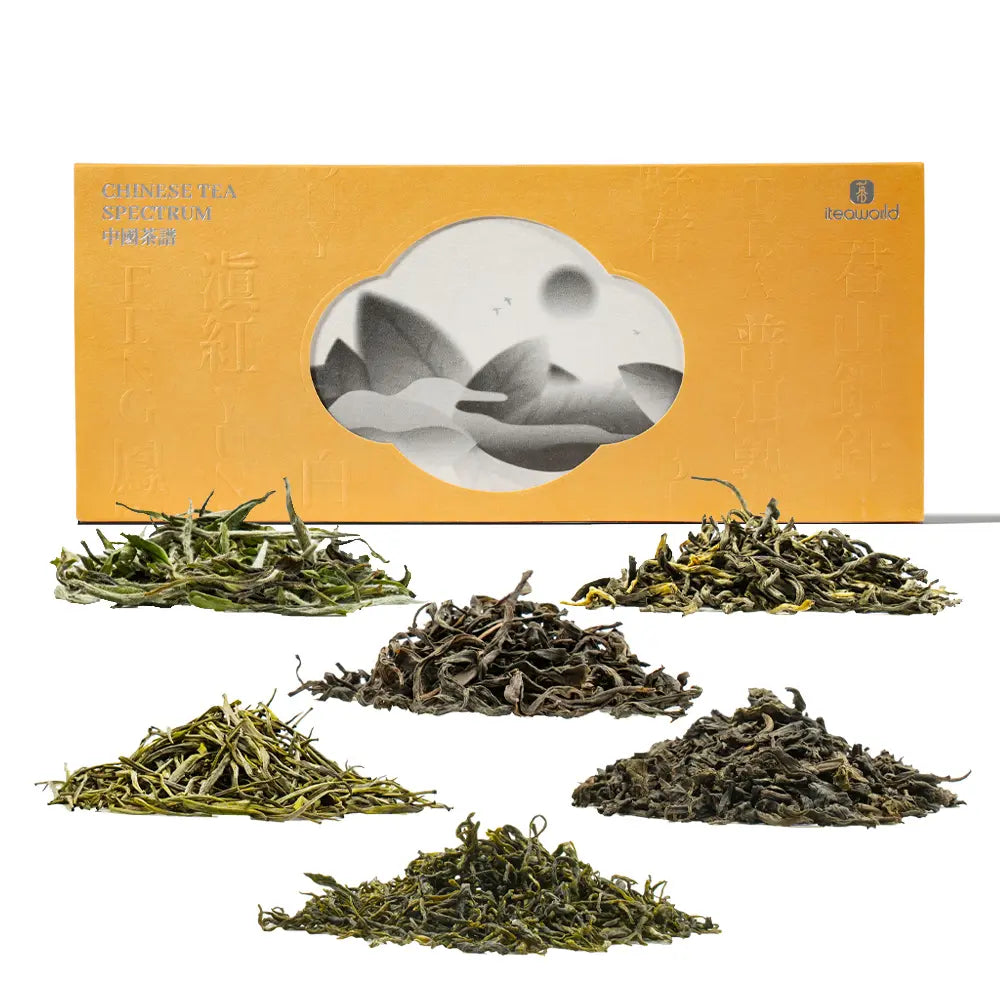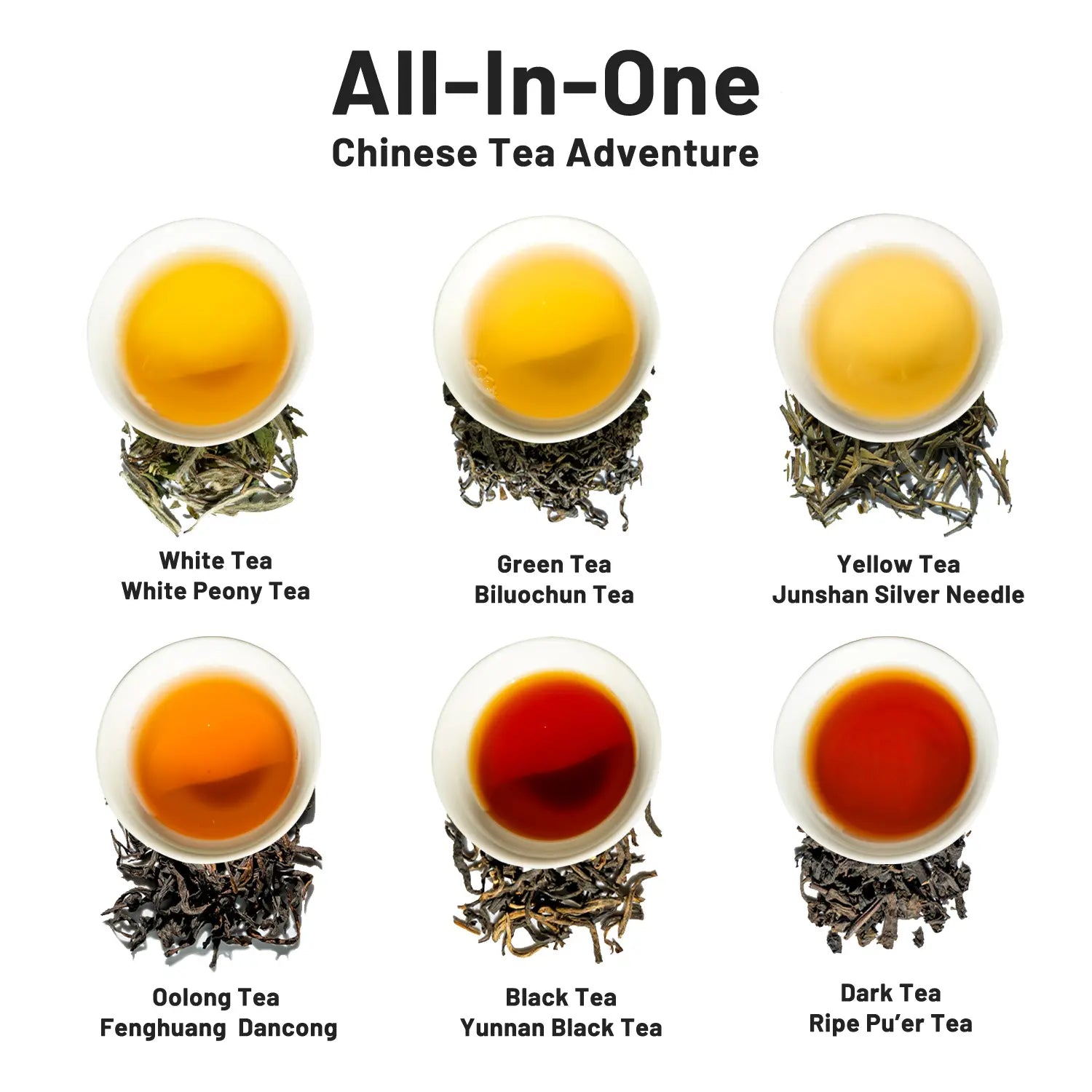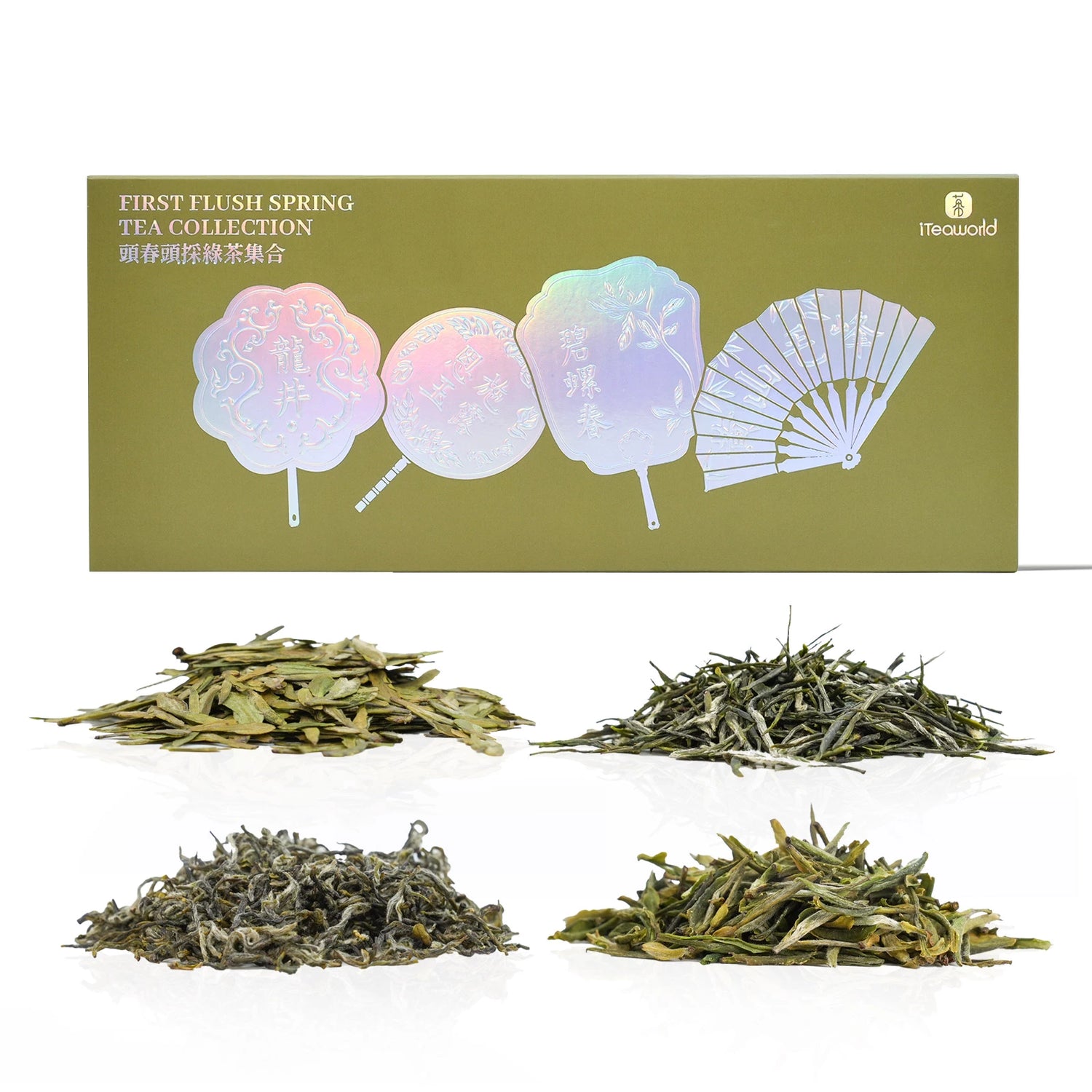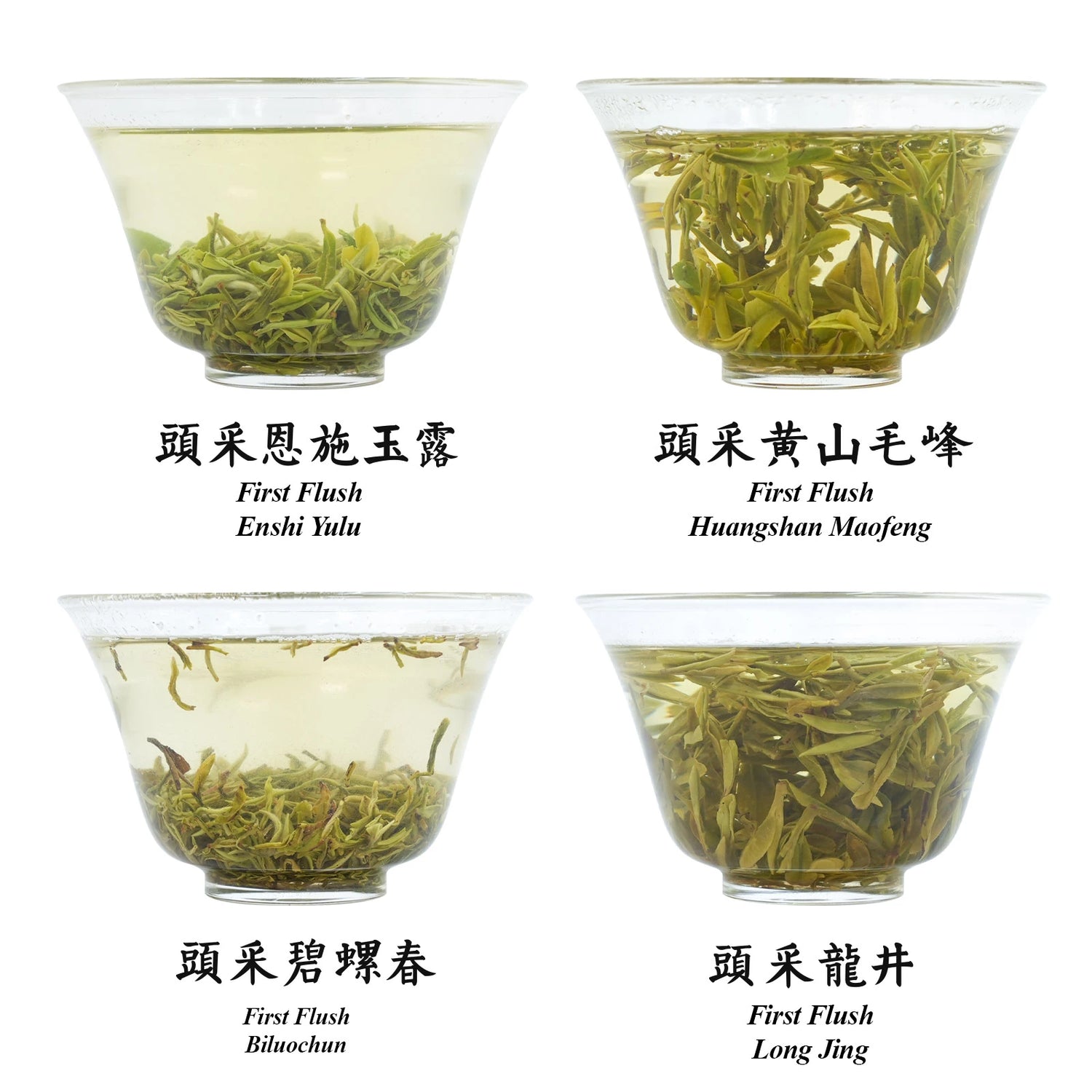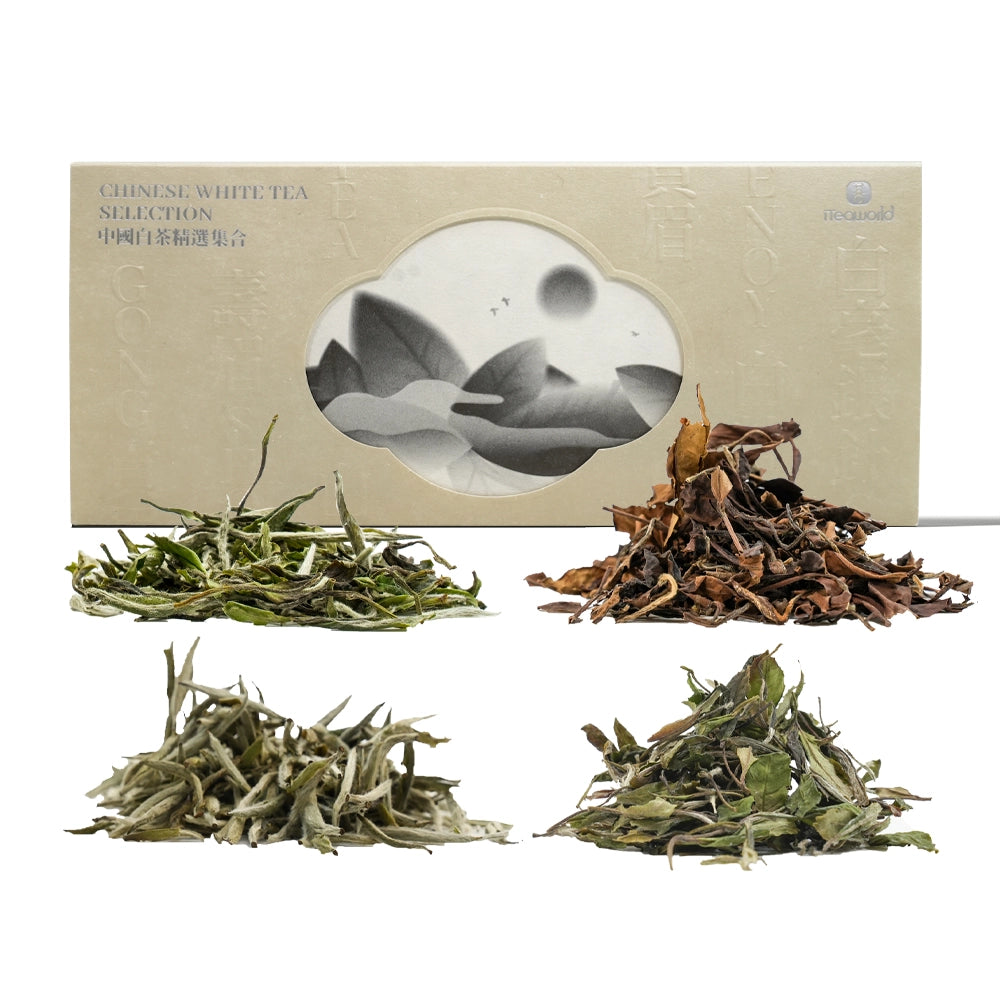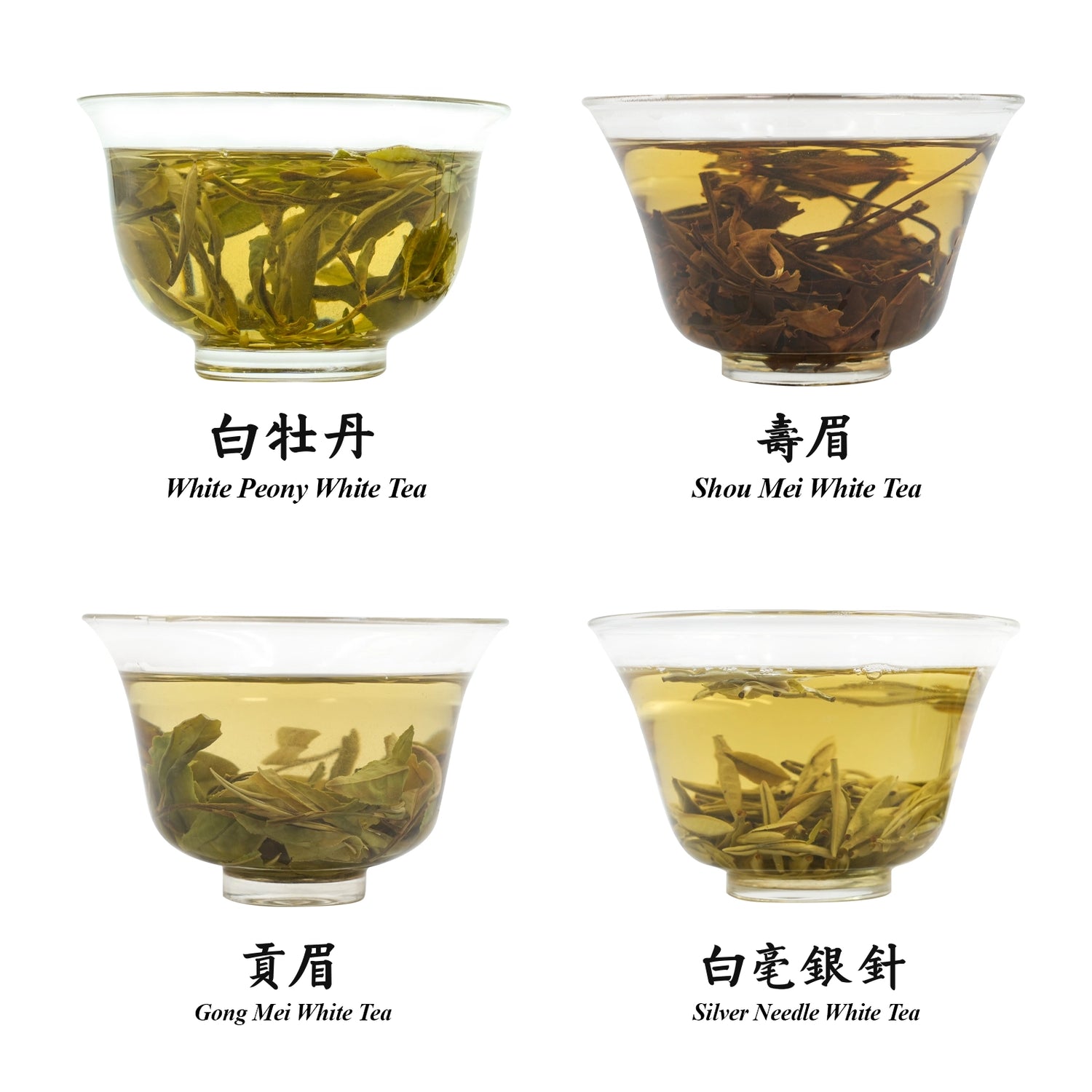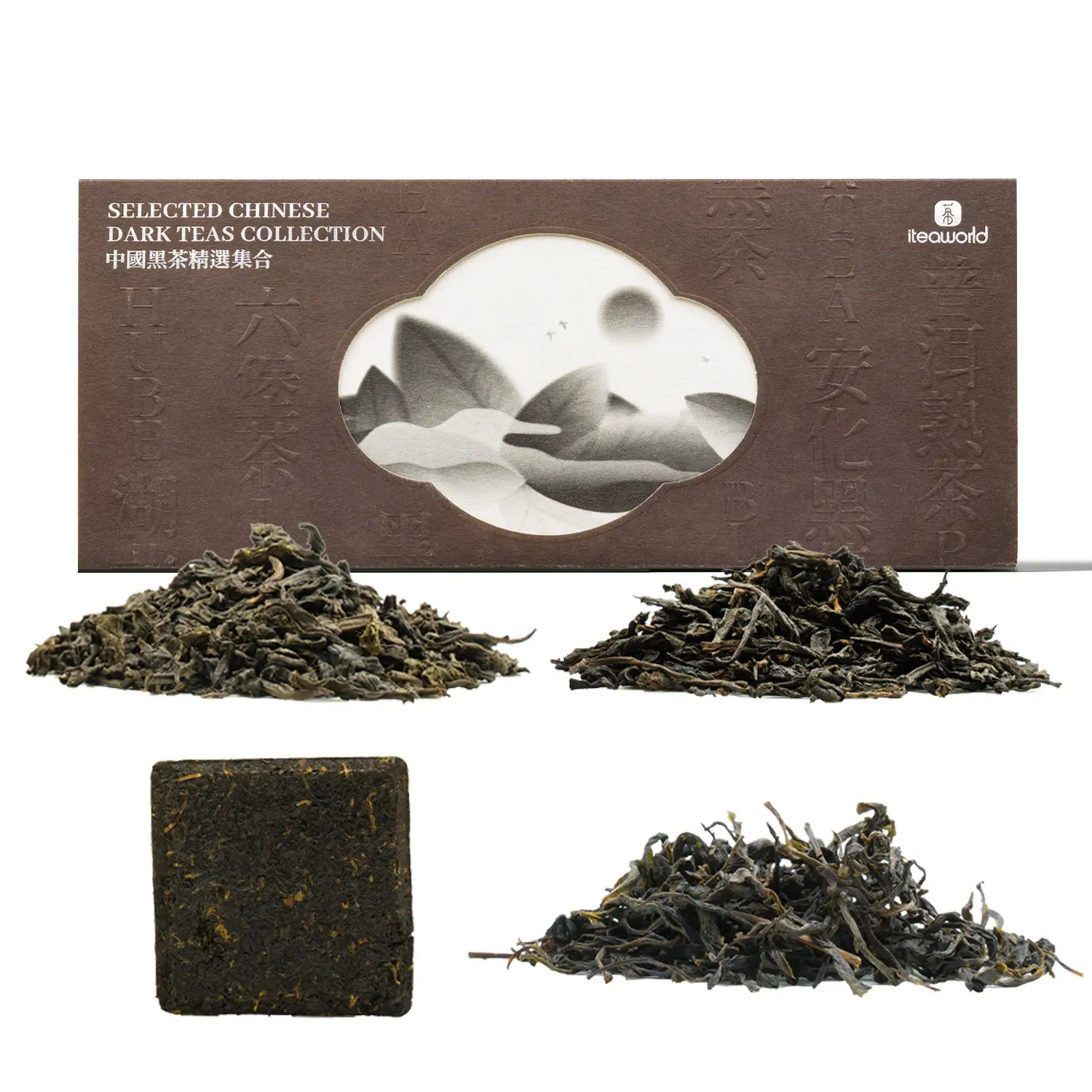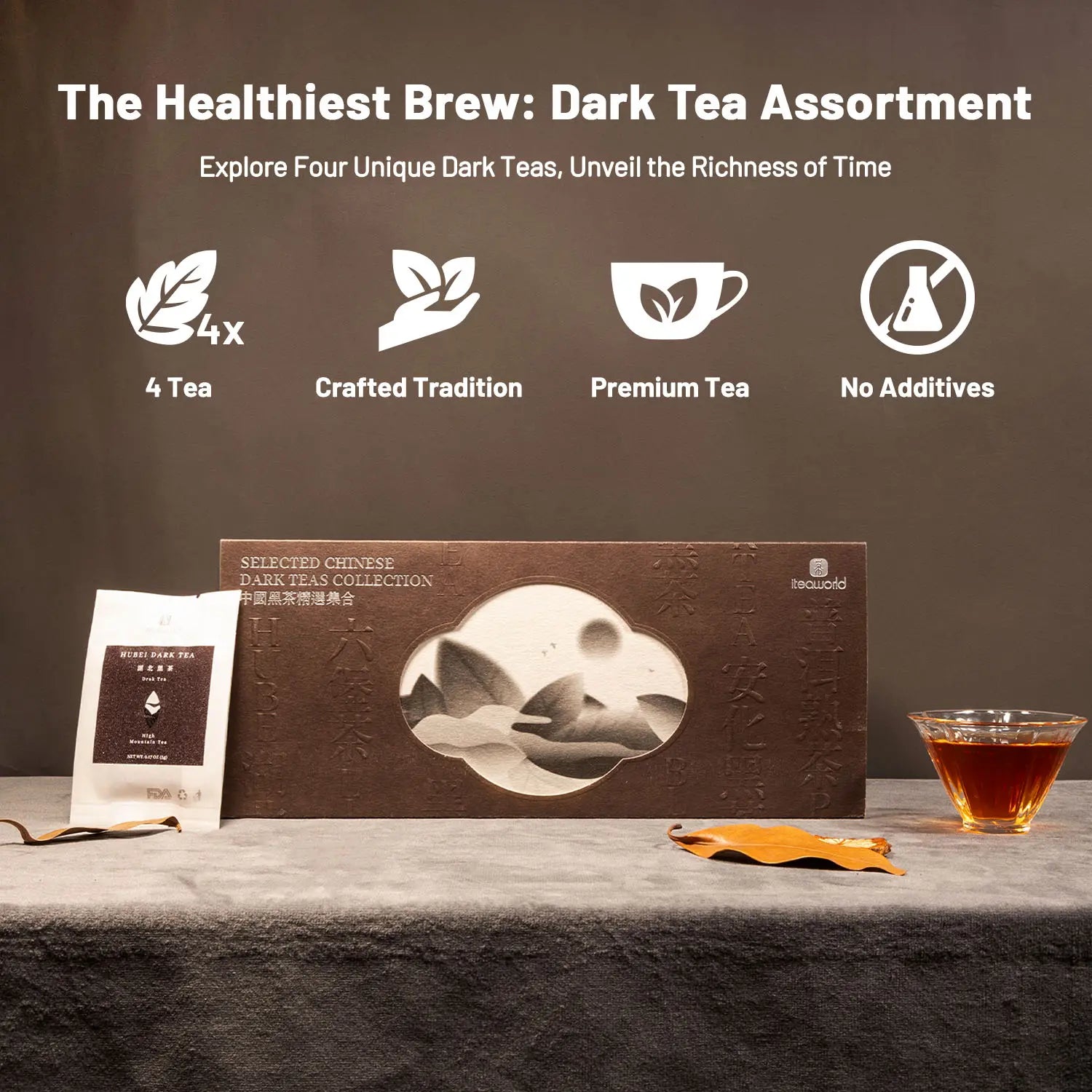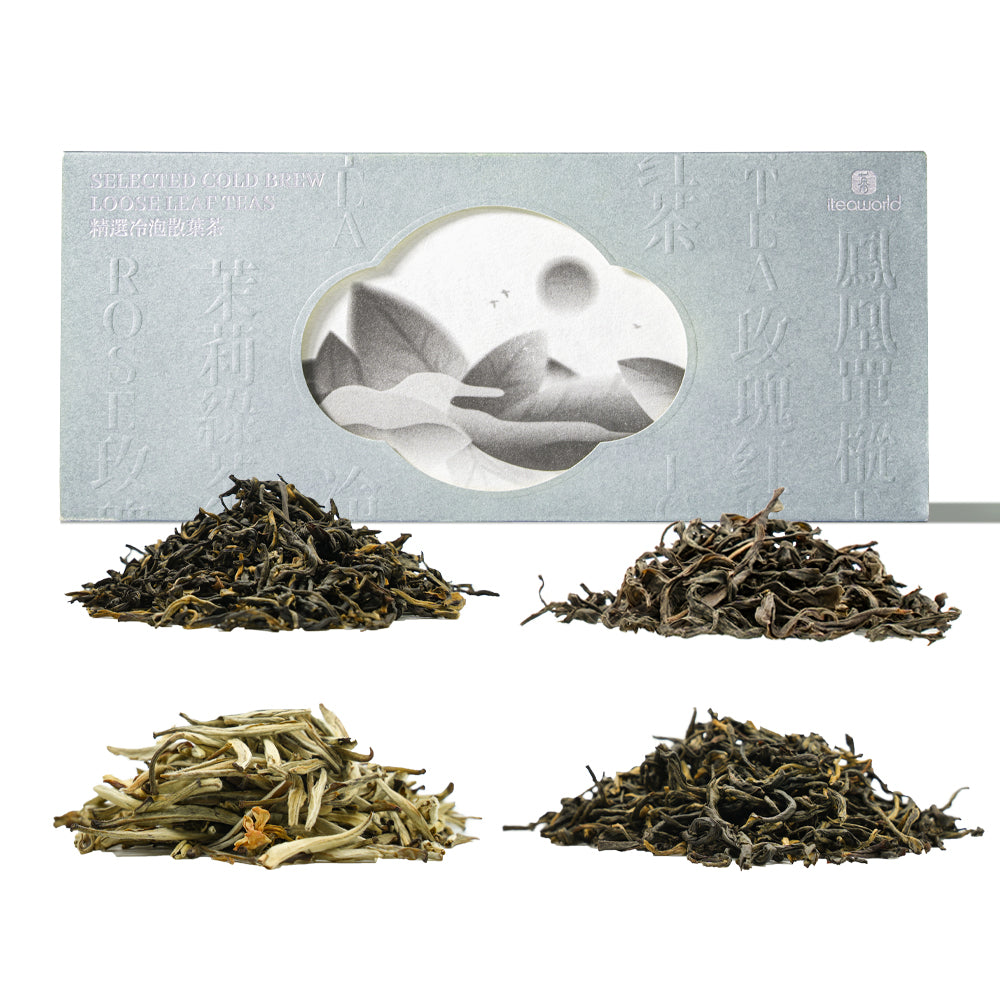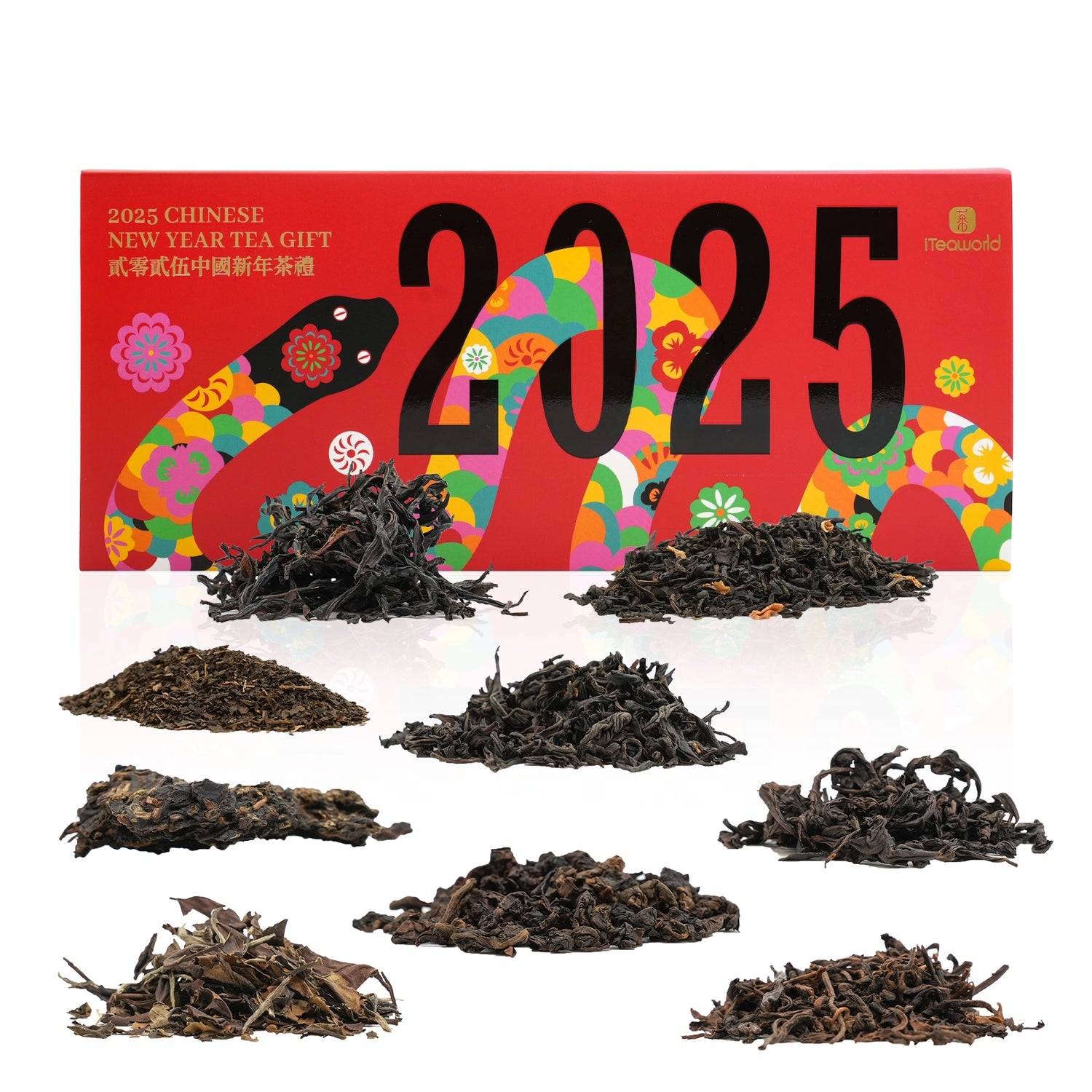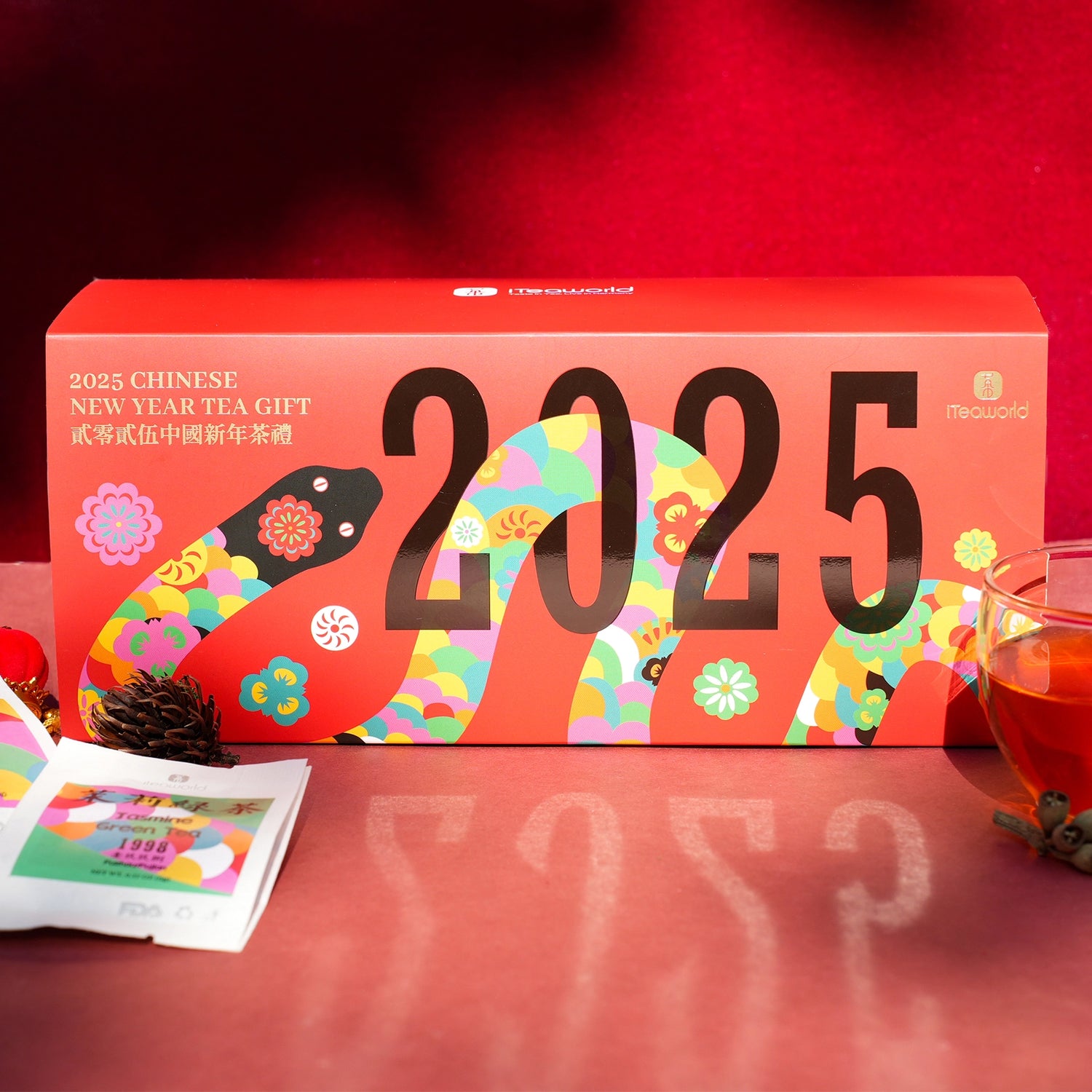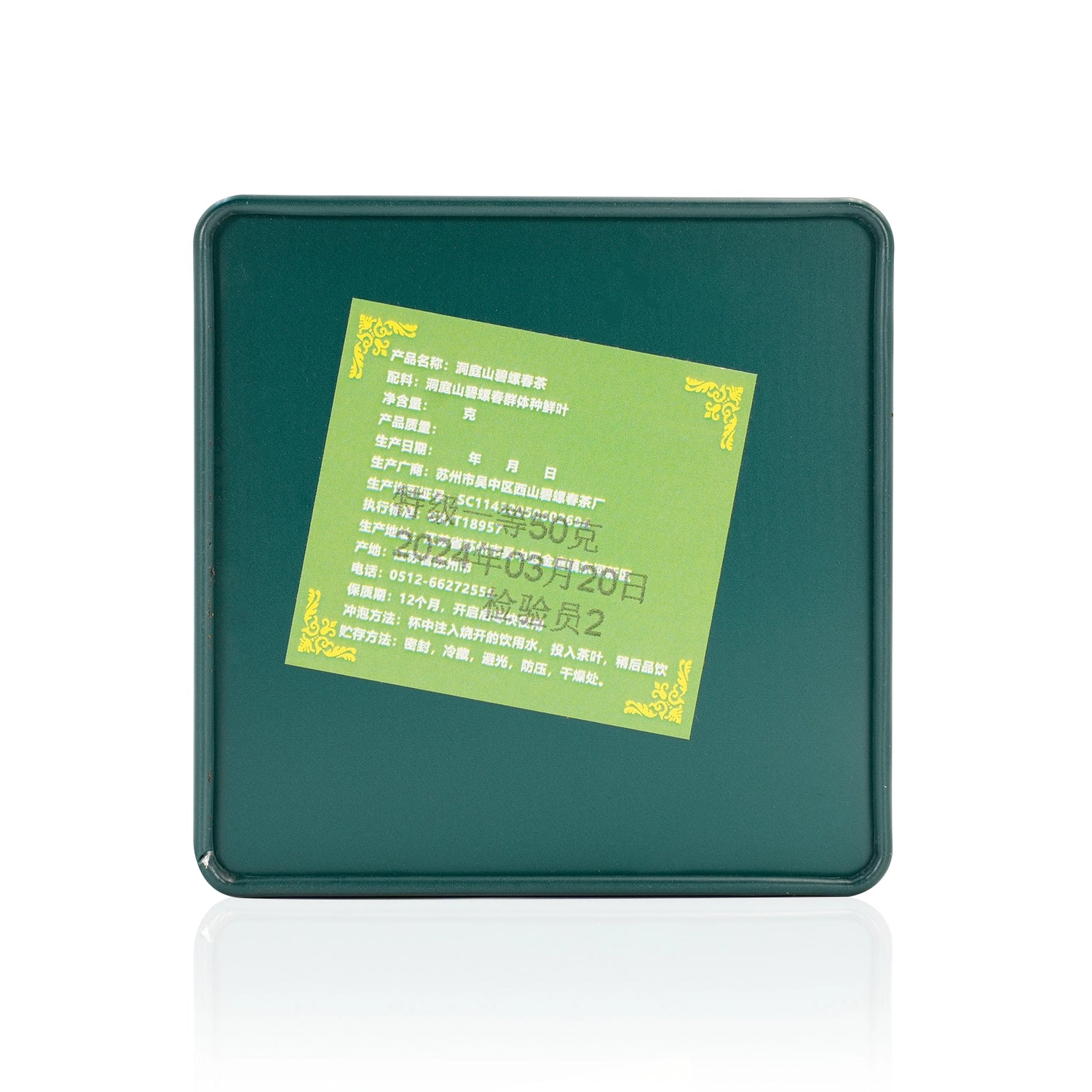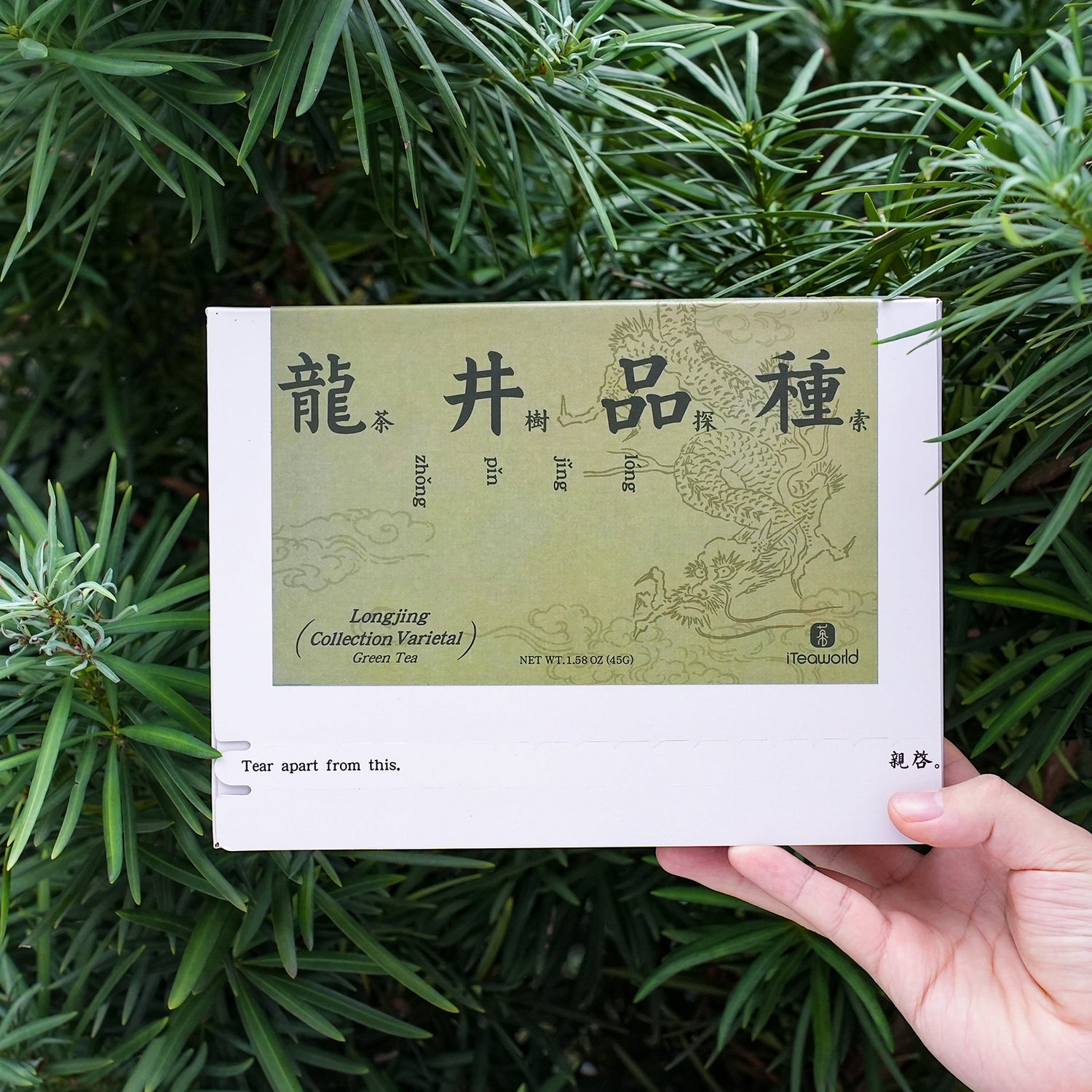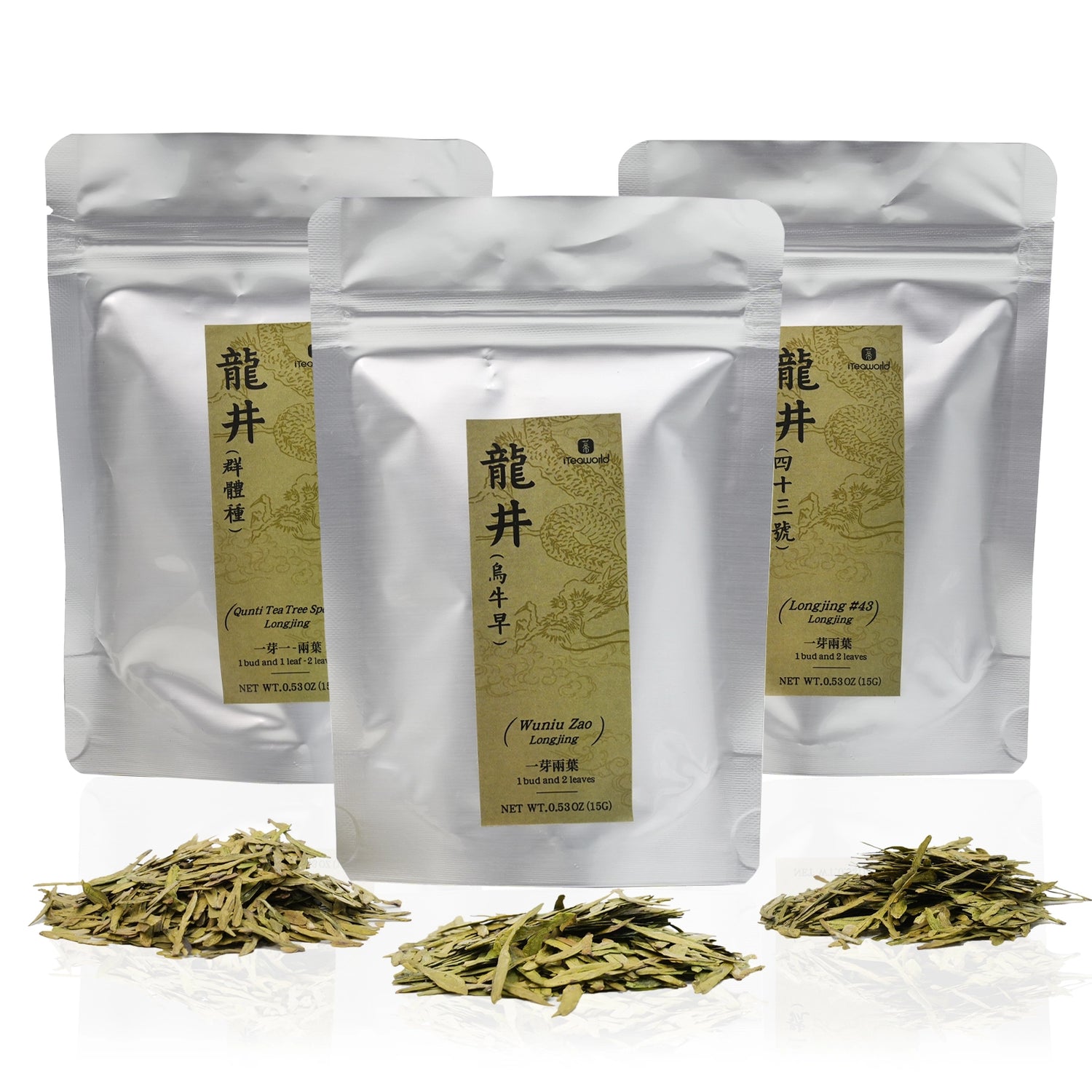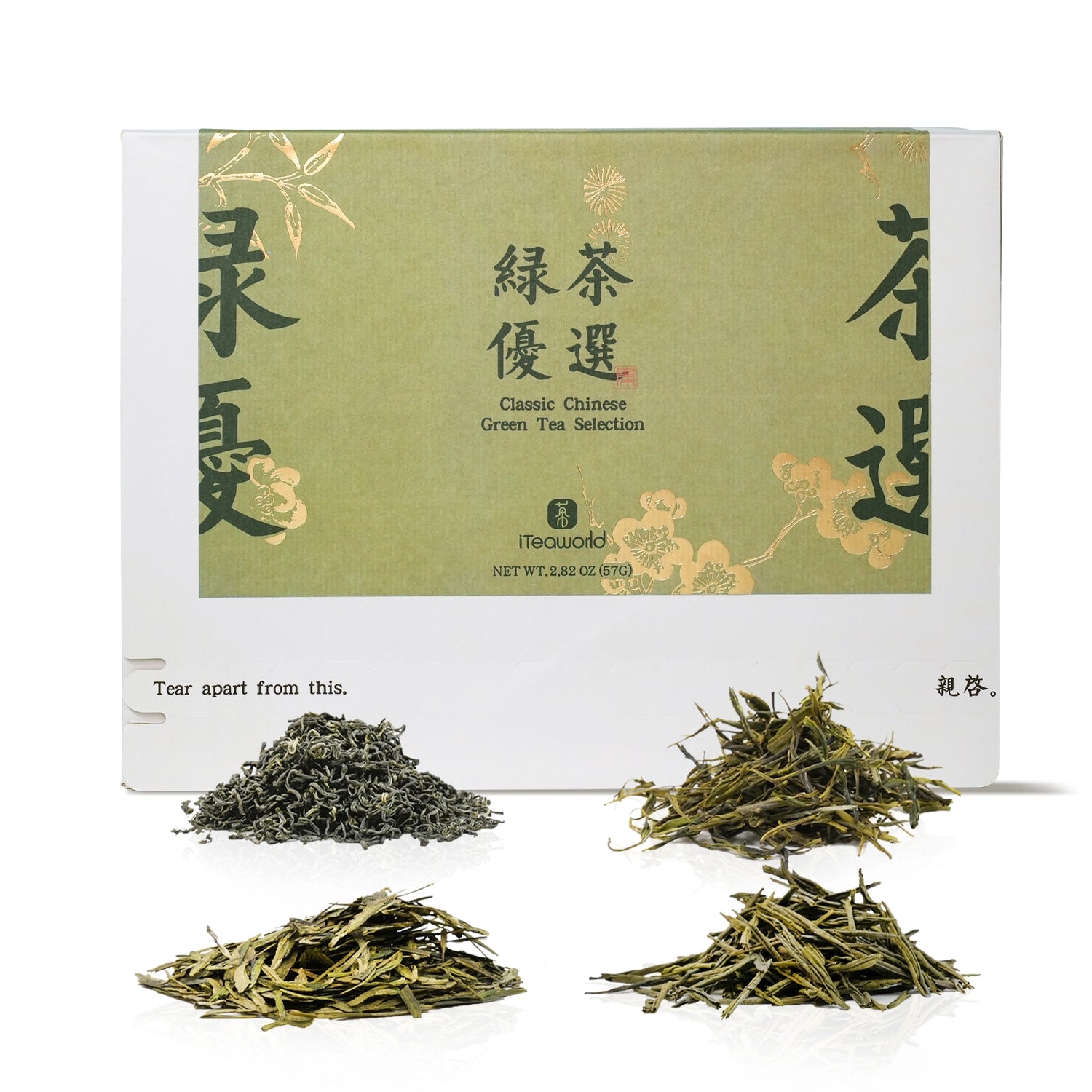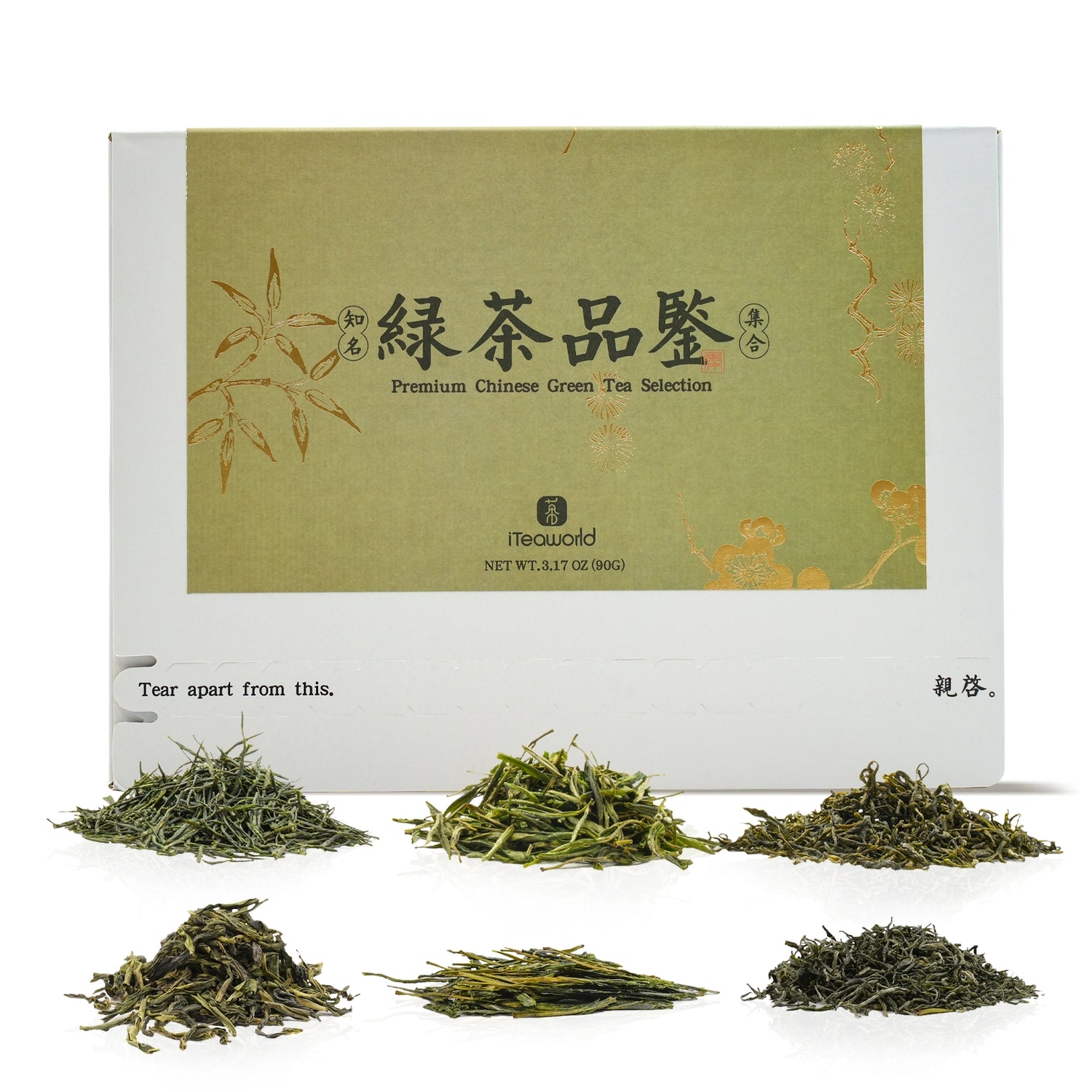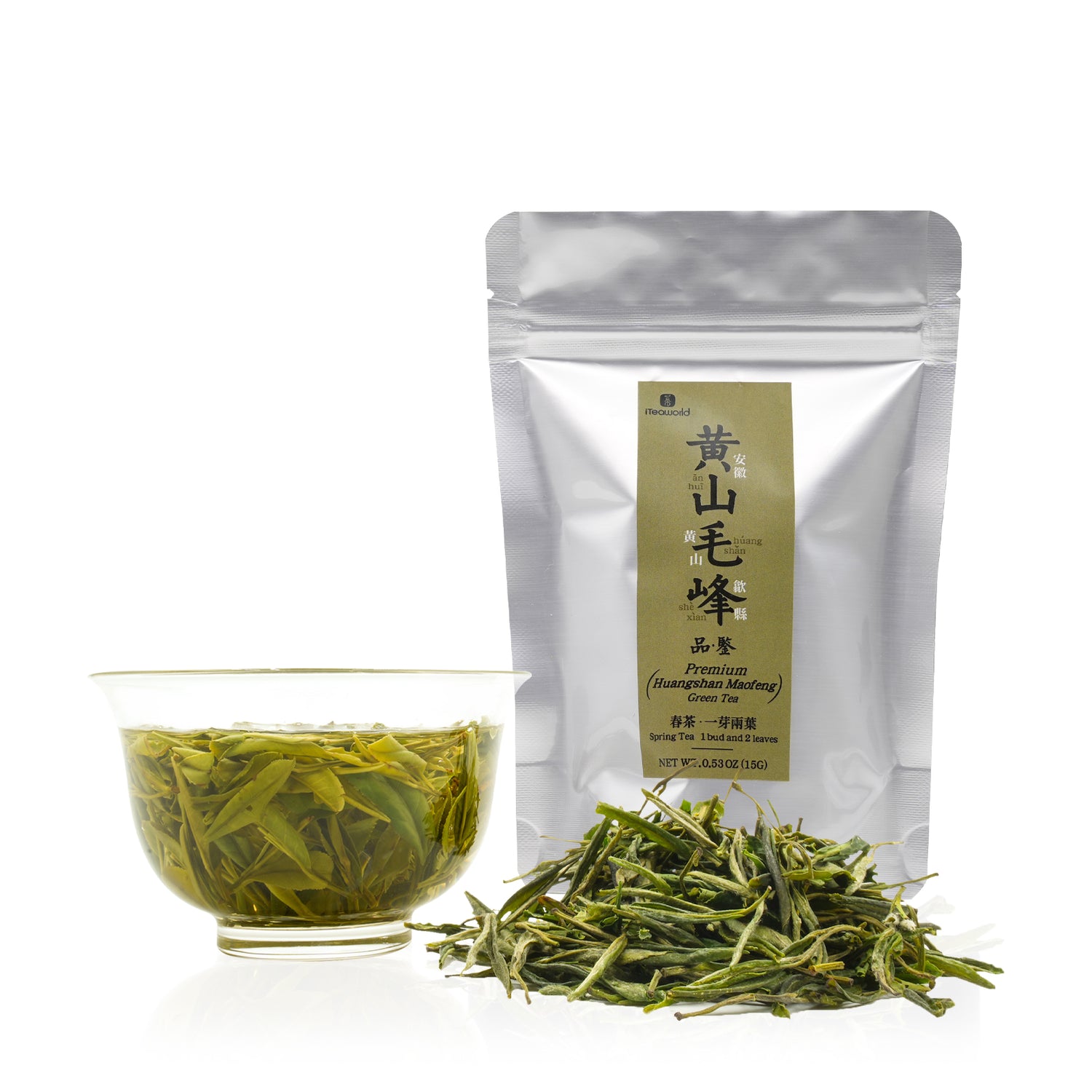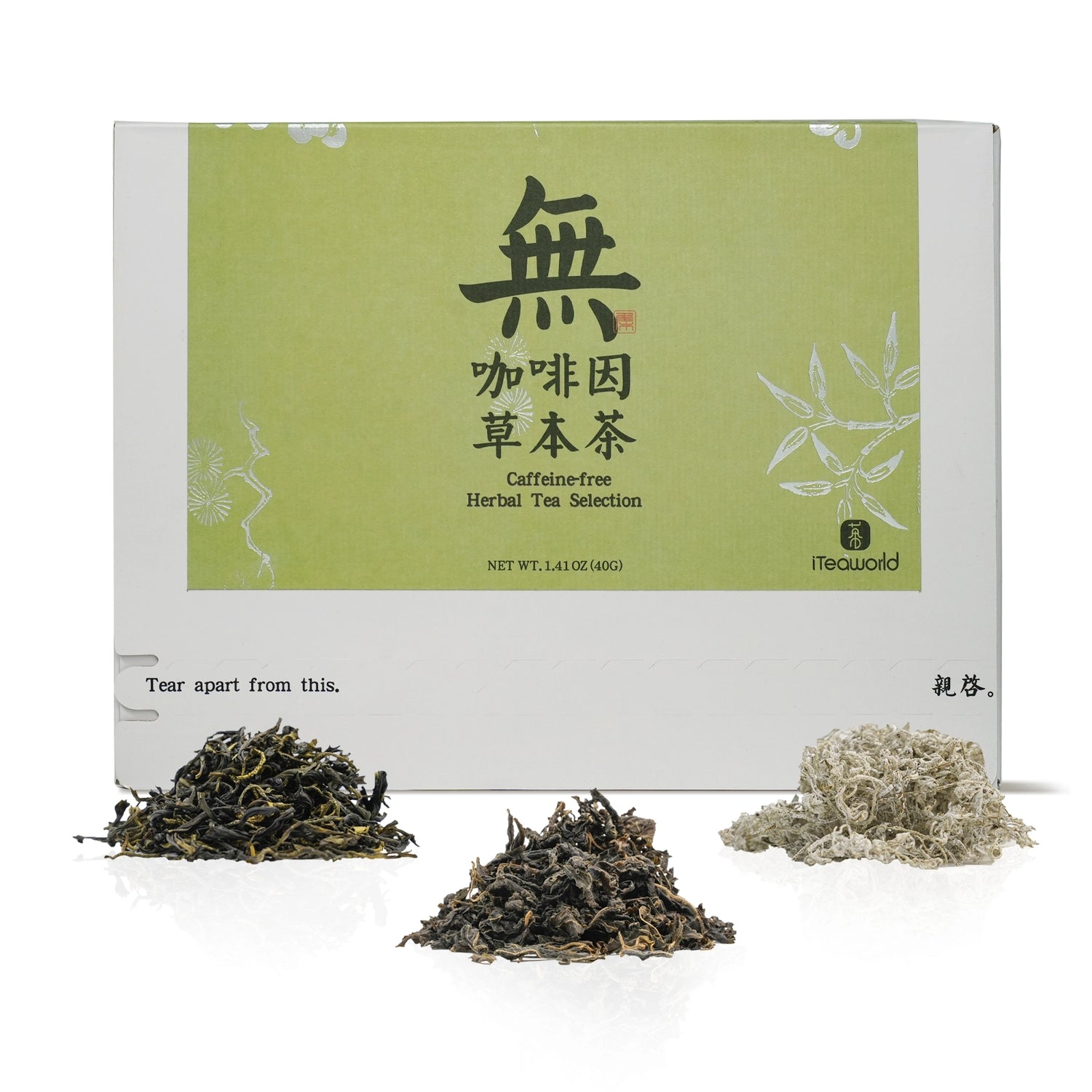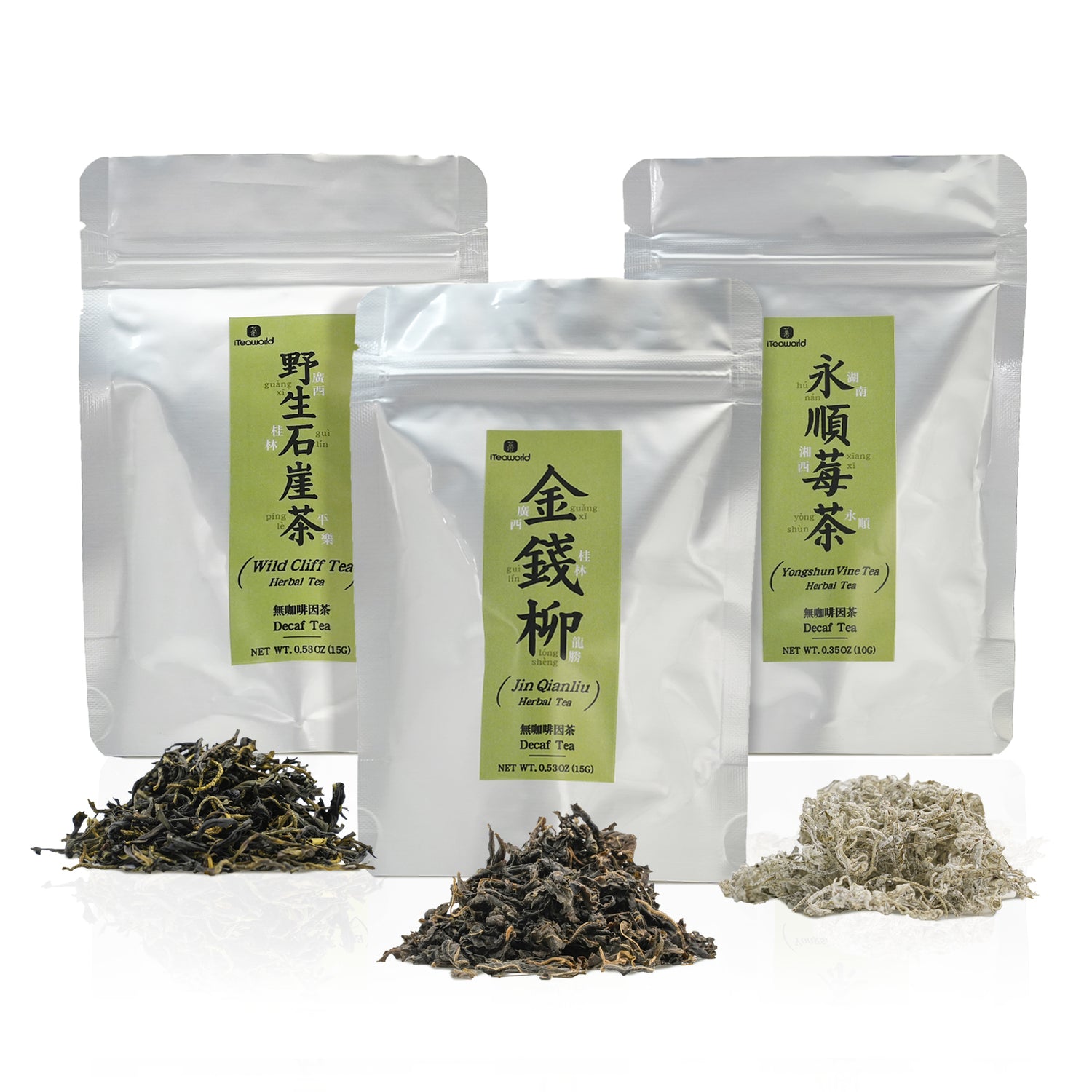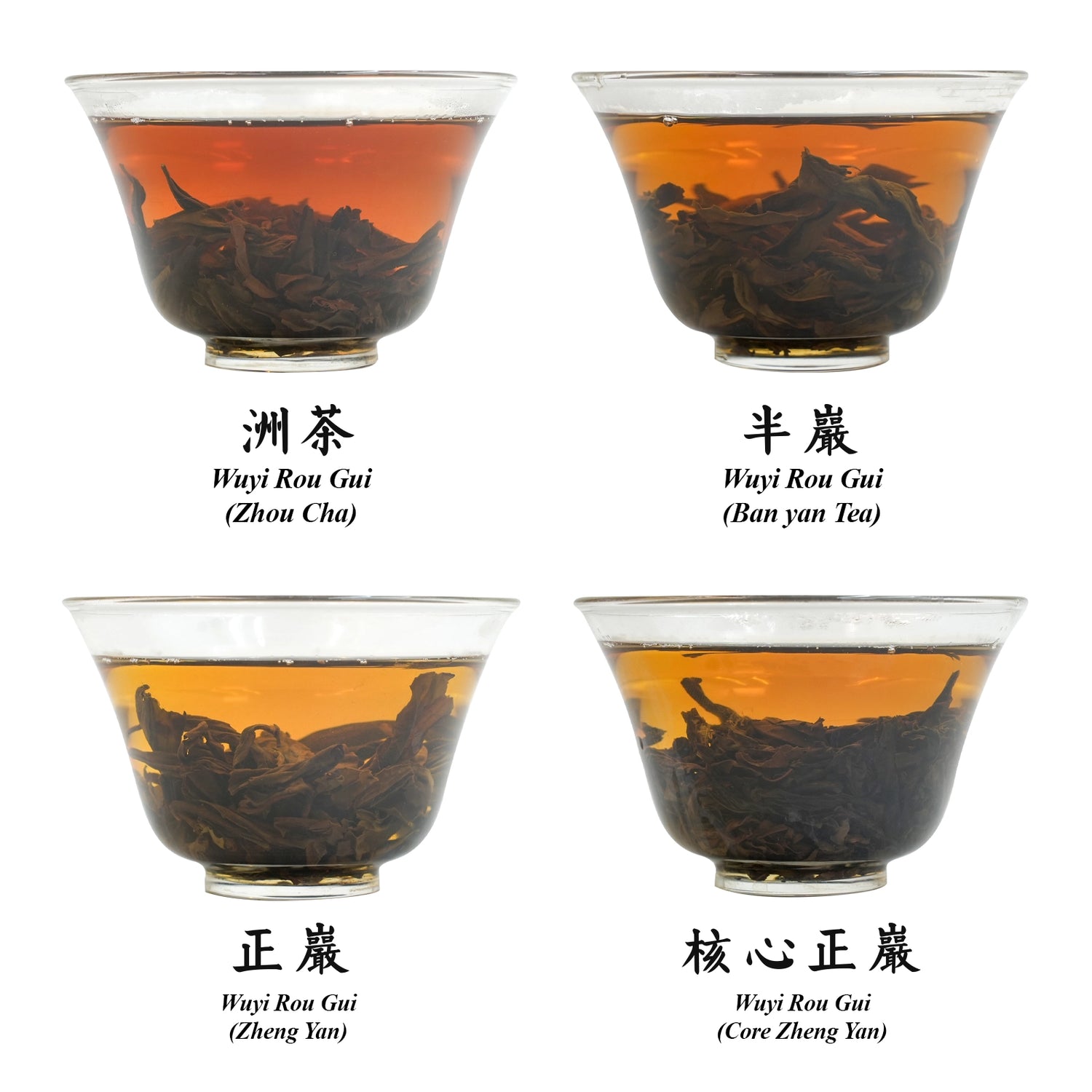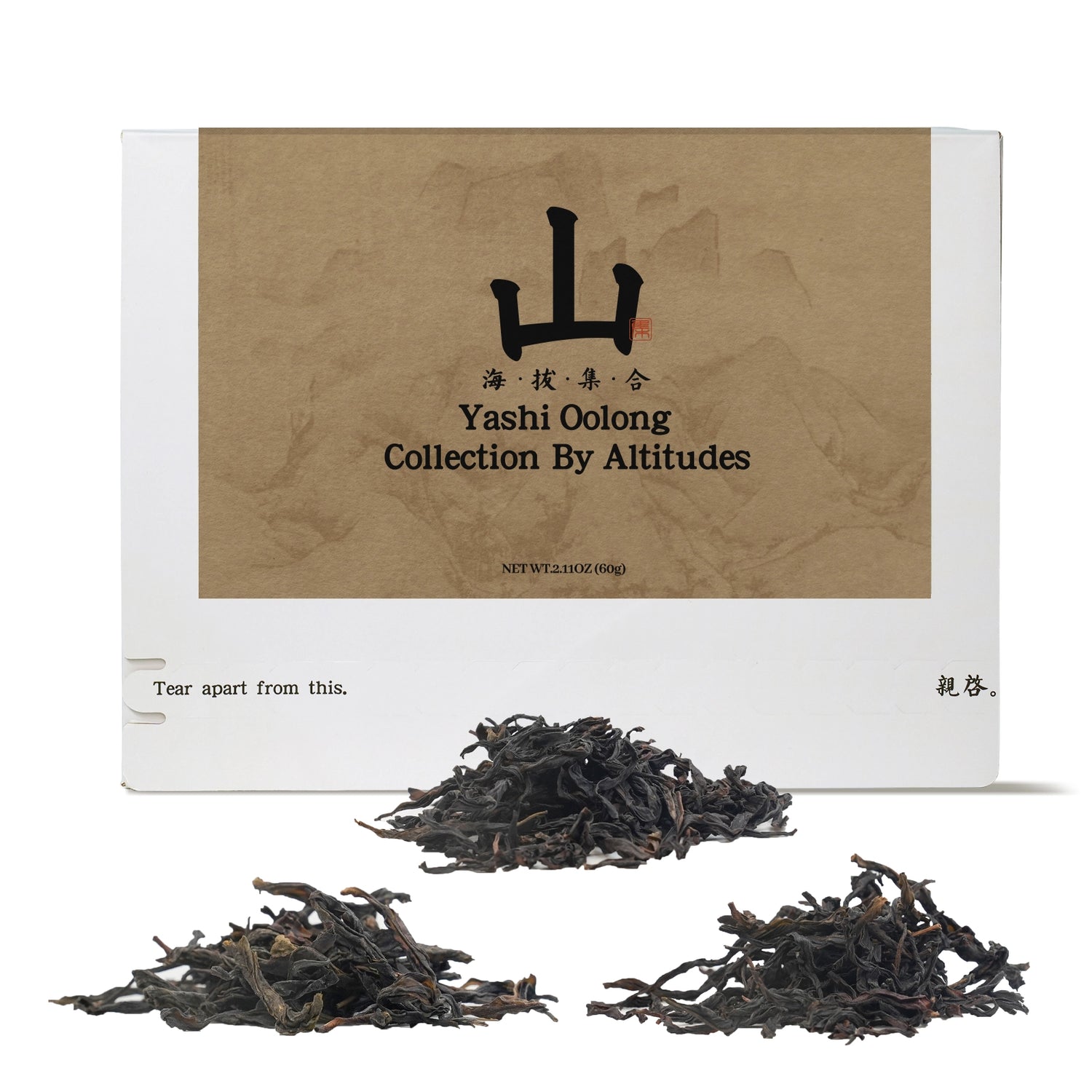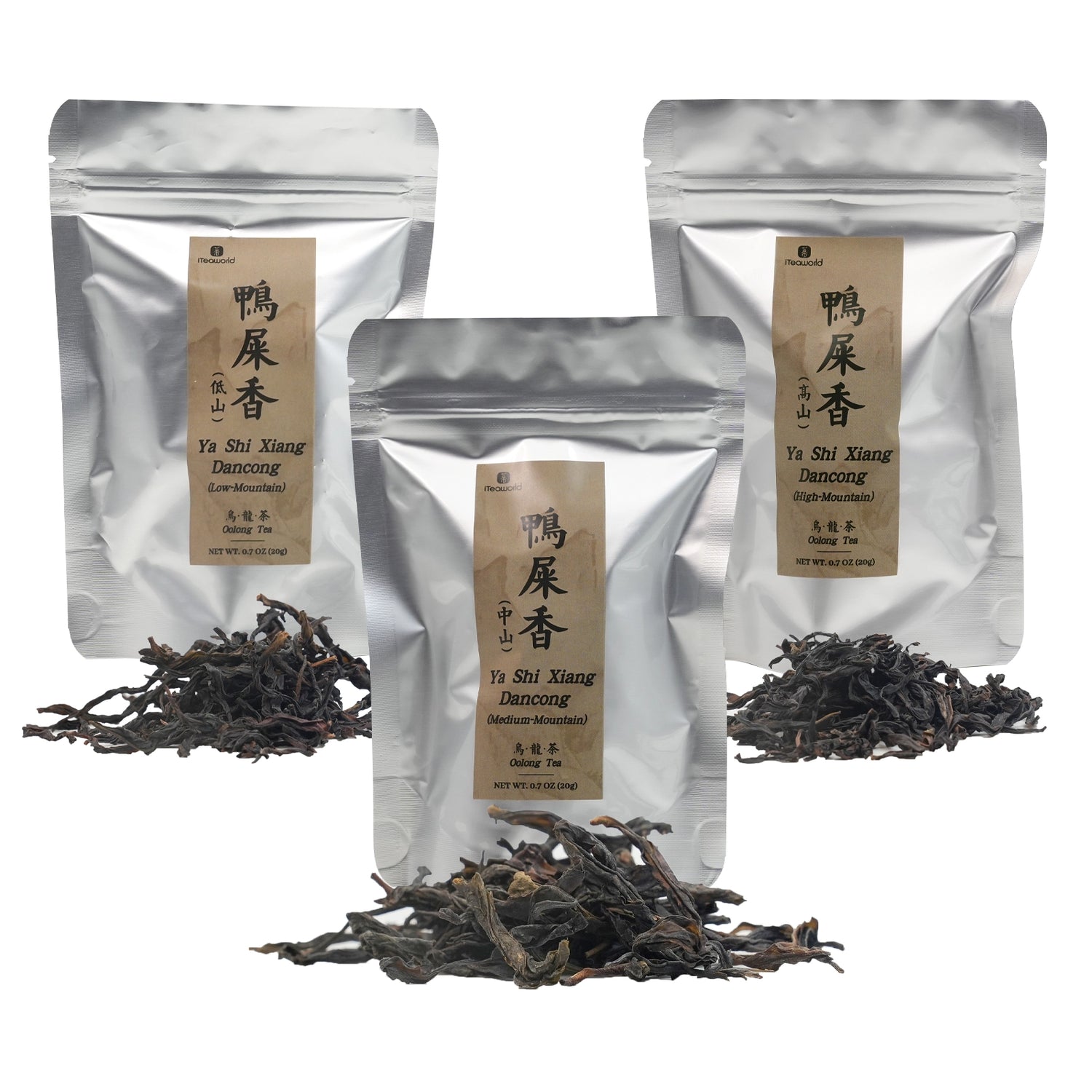Sort by:
35 products
35 products
Explore the rich legacy of Southern Fujian oolong teas — home to the iconic Tie Guan Yin and Zhangping Shui Xian, both recognized as part of China’s Intangible Cultural Heritage. Since the 17th century, this region has pioneered the art of high-aroma oolongs, known for their floral, fruity, and gently roasted notes. Crafted with time-honored techniques like light oxidation, layered roasting, and meticulous leaf shaping, these teas capture the essence of Minnan tradition. Whether you're a seasoned tea drinker or just beginning your journey, this curated collection offers a true taste of oolong history.
The best oolong tea collection for beginners — featuring 10 of the most iconic and popular Chinese oolong teas, with 2 mini tea cakes of each variety (20 pieces total).
Each tea is crafted from carefully selected loose leaves and pressed into convenient 5g mini cakes — just drop into hot water, no teaware needed.
This curated set showcases a broad spectrum of natural oolong flavors, from the fresh floral notes of Tie Guan Yin to the deep roasted richness of Da Hong Pao.
Absolutely no added sugar, artificial flavors, or colors — just 100% natural tea.
It’s the perfect way to explore authentic Chinese oolong tea and discover your personal favorites — a low-risk, high-value journey into real tea without the overwhelm.
Please note: Because the mini cakes are made from full loose leaves that are softened and compressed, some small leaf fragments may appear when steeped—this is completely normal and part of the natural tea experience.
Net weight: 80g total, 5g per pack. More tea, same price.
Each pack is perfect for both Gongfu-style and Western-style brewing—just the right amount for one brew.
Uncover the treasures of Chinese tea culture with our Classic Tea Sampler, showcasing eight iconic Chinese teas - four oolongs and four blacks. The collection promises a captivating sensory experience, allowing you to explore the complexities of aroma, fermentation levels, and the origins of the different tea gardens - all conveniently packaged in one box. Immerse yourself in a world of aromas, from the clarity of clear, the elegance of floral notes, and the sweetness of honey, to the rich, fruity flavors of oolong tea. For black teas, you can enjoy floral, honey, sweet, and smoky flavors. Our carefully selected teas include low, medium, and high oxidation levels from modern high-mountains tea gardens, abandoned tea gardens, old tree tea gardens, and wild tea trees.
The Oolong Tea Sampler comprises four renowned loose-leaf Oolong teas from China: Tie Guan Yin, Minnan Narcissus, Da Hong Pao, and Feng Huang Dan Cong. It provides a comprehensive opportunity to appreciate the disparities among Oolong teas, from their refreshing, floral, honeyed, to fruity aromas. Moreover, you'll delve into the variations in taste brought about by differences in fermentation levels and roasting intensities. Additionally, you'll explore the unique flavors derived from both modern high-mountain tea gardens and ancient tree plantations. This sampler simplifies the process of identifying your preferred Oolong tea variety.
Net weight: 80g total, 5g per pack. More tea, same price.
Each pack is perfect for both Gongfu-style and Western-style brewing—just the right amount for one brew.
Introduction
Jasmine tea is made by blending finished base teas with fresh jasmine blossoms, allowing the dry tea leaves to absorb the floral aroma. The resulting tea is known as jasmine tea.
Our Jasmine Green Tea Sampler features four types of Chinese green teas as the base, each scented with jasmine flowers through different numbers of scenting sessions—3, 5, 7, and 9 times. These teas represent a variety of classic green tea shapes in China:
- Curled (Biluochun)
- Tightly rolled with visible silvery buds (Mao jian)
- Needle-shaped (Zhen wang)
- Covered in fine white hairs (Bai hao)
Each variety offers a unique green tea taste. With increasing scenting sessions, the jasmine aroma becomes progressively more intense, allowing you to experience the true artistry of traditional Chinese flower-scented tea.
Who It's For
From the moment you open the package, the elegant scent of jasmine welcomes you—calming and refreshing, as if you're stepping into a serene garden. The flavor profile ranges from light and delicate to rich and full-bodied, offering delightful variation.
Jasmine green tea is ideal for those who enjoy floral aromas and refreshing green tea. It helps relax the mind, improve alertness, and support metabolism. Perfect for moments when you crave a fragrant, revitalizing beverage. Thanks to its floral scent, it's also great for cleansing the palate after meals.
This curated collection of Chinese scented teas celebrates the traditional craft of floral tea making, where premium teas are layered with fresh flowers like jasmine, rose, and osmanthus to infuse their essence. Through meticulous multi-round scenting (3-5 times), each tea offers a pure, natural floral aroma without a single petal in sight. Perfect for floral tea lovers or anyone curious about authentic Chinese scented teas, it includes six varieties: Jasmine Green Tea, Rose Black Tea, Jasmine Black Tea, Osmanthus Oolong, Jasmine Oolong Tea
and Jasmine Dark Tea. Ideal for gifting or indulging, this set combines rich heritage, delicate flavors, and the artistry of a UNESCO-recognized tradition. Not suited for those who prefer plain teas or are sensitive to floral fragrances.
Chinese Scented Tea Craftsmanship
"Scenting" is a traditional process where tea leaves are layered with fresh flowers, allowing the tea to absorb the floral aroma before the flowers are removed. This process is repeated multiple times to create the rich fragrance of high-quality scented teas. The best scented teas have no visible petals but retain the pure floral essence. By meticulously layering flowers and tea, ensuring proper aeration, and maintaining strict control over the scenting time and roasting process, the tea reaches peak flavor and aroma.
Depending on the number of scenting cycles—3, 6, or even 9 times—the tea's quality and complexity increase, with some processes taking up to a month. This craftsmanship, involving over 60 days and 200 steps, was recognized as an Intangible Cultural Heritage in 2022 for Jasmine Green Tea. While jasmine green tea is the original scented tea, modern innovation has expanded the range to include many beloved varieties.
This curated set features six of China’s most popular traditional scented teas, each crafted to perfection with vibrant floral aromas but no petals in sight:
- Rose Dianhong Black Tea (3 times scented): 3 packs x 5g
- Jasmine Dianhong Black Tea (3 times scented): 3 packs x 5g
- Osmanthus Aged Tieguanyin Oolong Tea (3 times scented): 4 packs x 5g
- Jasmine Fresh Tieguanyin Oolong Tea (3 times scented): 4 packs x 5g
- Jasmine Green Tea (5 times scented): 3 packs x 5g
- Jasmine Liu Bao Black Tea (3 times scented): 3 packs x 5g
Origins:
- Jasmine Green Tea: Hengxian County, Guangxi
- Jasmine Black Tea: Fengshan Town, Fengqing, Yunnan
- Rose Black Tea: Fengshan Town, Fengqing, Yunnan
- Jasmine Tieguanyin Oolong: Huqiu Town, Anxi, Fujian
- Osmanthus Tieguanyin Oolong: Huqiu Town, Anxi, Fujian
- Jasmine Liu Bao Tea: Hengxian County, Guangxi
Explore the World of Chinese Oolong Tea with Four Iconic Varieties
Discover the rich diversity of Chinese Oolong tea with this curated sampler featuring Da Hong Pao, Tie Guan Yin, Phoenix Dan Cong, and Zhangping Shui Xian. From lightly oxidized teas to deeply roasted rock teas, this set is a perfect introduction for tea lovers who want to explore the full spectrum of oolong flavors.
- Da Hong Pao: Bold and toasty, from Wuyi Mountains
- Tie Guan Yin: Light, floral, and elegant — a classic minnan oolong tea
- Fenghuang Dan Cong: Naturally fruity with rich orchid aroma
- Zhangping Shui Xian: Rare pressed oolong with subtle garden notes
Whether you're new to oolong or seeking variety, this set offers a sensory journey across China’s top tea regions, all in one elegant collection.


Guangdong Oolong Tea Collection: 6 Historical Flavors for Tea Lovers 100g
$49.99 USD
Unit price perGuangdong Oolong Tea Collection: 6 Historical Flavors for Tea Lovers 100g
$49.99 USD
Unit price perA Boxed Journey into the Essence of Guangdong Oolong
From the ancient Shiguping oolong crafted by the She ethnic group over 1,500 years ago to today’s highly aromatic Dancong teas, this curated set brings together six signature teas from Chaozhou, Meizhou, and Raoping—the three core regions of Guangdong. A flavorful journey through 500 years of tea-making heritage.
The Northern Fujian region is considered the birthplace of Oolong tea, and the traditional crafting methods of Wuyi Rock Tea have been recognized as part of China’s intangible cultural heritage. This collection brings together iconic oolong varieties from the Song Dynasty (Wuyi Qizhong and Jian'ou Dwarf Oolong) to today (Blended Da Hong Pao, Wuyi Rougui, Aged Tree Shuixian Oolong ), along with emerging cultivars with great future potential (Rui Xiang Oolong). Each tea carries the unique craftsmanship of the region, with its own distinct story and flavor. We hope this collection will allow you to explore the diverse flavors and rich cultural heritage of Northern Fujian (Minnan) Oolong tea.
Product Contains:
Wuyi Qizhong*3 bags* 5g
Jian'ou Dwarf Oolong*3 bags* 5g
Blended Da Hong Pao*4 bags* 5g
Wuyi Rougui *4 bags* 5g
Aged Tree Shuixian Oolong*3 bags* 5g
Rui Xiang Oolong*3 bags* 5g
Processing Time: November 2024
Best Before Date: 36 months
Minnan North Oolong Tea: A Cup, A History, A Story
1. Origins (Tang and Song Dynasties)
- The people used Wuyi Caicha (Qi zhong ) to produce Beiyuan tribute tea (a type of steamed green tea). During transportation, the leaves collided, causing some to turn red and undergo partial oxidation, developing semi-fermented characteristics, which are considered the origins of Oolong tea.
2. Birth (Ming Dynasty)
- After Emperor Zhu Yuanzhang banned compressed tea cakes, the tea farmers of Wuyi Mountain combined green and black tea processing techniques to create semi-fermented Oolong tea.
3. Development (Qing Dynasty)
- Wuyi Cai Tea (Qi Zhong): By the Qing Dynasty, Wuyi Rock Tea had established the basic processes of sun-drying, shaking, and roasting. The Wuyi Rock Tea system had matured, with the earliest representative varieties being Wuyi Cai Tea (Qi Zhong) and its derivative four famous cultivars (Da Hong Pao, Bai Ji Guan, Tie Luo Han, Shui Jin Gui).
- Jian'ou Dwarf Oolong: Originally from the Dongfeng Town of Jian'ou, the Dwarf Oolong (also known as Xiao Ye Oolong) was introduced to Wuyi Mountain, where it was improved through craftsmanship, including charcoal roasting, imparting it with signature peachy aroma and strong mineral finish made it a favorite for blending, earning the nickname “Prime Minister of Tea”.
- Wuyi Rougui: Rou Gui, another celebrated rock tea, dates back to the Qing dynasty. It was once rare and scattered in the rocky core of Wuyi, but it expanded in the 1960s through cutting and propagation.
- Wuyi Shui Xian: Shui Xian, introduced from Jianyang in the 1800s, became a Fujian classic thanks to its rich, woody flavor and thick body.
4. Prosperity (20th Century to Present)
- Blended Da Hong Pao: In the 20th century, breakthroughs in asexual reproduction techniques allowed the successful propagation of Da Hong Pao by cutting in 1982, leading to the mass production of pure Da Hong Pao after the mother tree ceased harvesting in 2006.
- Rui Xiang: New hybrid varieties such as Jin Mudan, Huang Guanyin, and Rui Xiang were developed by crossbreeding traditional types like Rou Gui, Shui Xian, and Huang Jin Gui. Rui Xiang, in particular, is known for its ever-changing aroma—from frankincense and gardenia to osmanthus, peach, and honey—earning it the nickname “The Shape-Shifter” of rock teas.
Unique Crafting Characteristics:
1. Heavy Fermentation & Oxidation
Northern Fujian oolong follows a unique processing style: longer withering under sunlight, light but repeated shaking, multiple oxidation cycles, and deep fermentation. Compared to Southern Fujian oolongs (which are 10%-30% oxidized), Northern Fujian oolongs range from 25-55% oxidation, giving the tea a rich amber-gold color and a smoother, more full-bodied taste.
2. Charcoal Roasting Process
Charcoal roasting is a signature technique of Northern Fujian Oolong teas. It involves three key stages:
Initial Roast ("Water Walk"): High heat (~150°C) is used to quickly remove surface moisture and grassy notes.
Second Roast (Slow Roast): A gentle, extended roast lasting 10-18 hours, with the temperature gradually lowered to ~80°C. This stage develops rich caramel and mineral notes.
Final Roast (Aging Roast): A very low, slow roast at 60–80°C for 12-24 hours. This step reduces the leaf’s moisture to 3–5%, boosting shelf life and aging potential.
Only dense hardwood charcoal—like longan or lychee wood—is used to ensure a steady, even roast.
This traditional method produces a warm, rounded flavor with a deep roasted aroma, offering a smoother and more refined character than the sharper taste of electric-roasted teas.
3. Rolling & Shaping
No Ball-Rolling – Unlike Southern Fujian oolongs, Northern Fujian oolongs are not tightly rolled, preserving their long, twisted leaf shape with a glossy dark hue and reddish-brown highlights.
Double Frying & Rolling – The tea is fried and rolled twice, ensuring an even release of its inner essence and creating a thicker, silkier tea liquor.
Brewing Recommendations:
Teaware:
Gaiwan (110- 150ml): Best for aromatic teas (Rougui, Dangui).
Yixing Clay Teapot: Ideal for heavily roasted or aged teas.
Water:
Use 100°C (boiling) spring or purified water.
Tea-to-Water Ratio:
5g tea / 110ml water.
Brewing Tips:
Preheat & awaken tea.
High pour for aroma, low pour for smoothness.
Quick steeps (5-10s) for first 3 infusions, then extend.
Fully drain after each brew.
A semi-fermented oolong tea grown in the rocky crevices of Fujian’s Wuyi Mountain, renowned for its unique "rock bone floral aroma" (Yan Yun). Only tea cultivated within Wuyi City’s protected region can bear this name. Other areas (e.g., Anxi) do not produce Rock Tea.
This collection features the three most iconic Wuyi rock teas—Da Hong Pao, Shuixian, and Rougui—along with their key variations. You’ll taste the difference between blended and purebred Da Hong Pao, young and old Shuixian trees, and core vs. semi-core Rougui. A guided journey into the depth and complexity of Wuyi rock tea.
How to Start with Wuyi Rock Tea?
For newcomers, we recommend starting with Blended Da Hong Pao, Shuixian, and Rougui—classic, accessible, and well-balanced teas that offer a great introduction to Wuyi Rock Tea.
Blended Da Hong Pao – The most famous Wuyi Rock Tea, blended for a harmonious taste of rock minerality, floral-fruity notes, and roasted depth. The perfect benchmark for beginners.
Shuixian – Smooth and mellow with woody sweetness and a lingering finish. Ideal for those who prefer a rich, rounded texture.
Rougui – Spicy cinnamon aroma with a bold, warming character. A great choice for adventurous palates.
Why start with these?
Easy to find – Widely available & consistent in quality.
Affordable – Great value for authentic Wuyi Rock Tea.
Versatile – Covers the core flavor profiles of "Yan Yun" (rock essence)。
Product Contains:
Traditional Blend Dahongpao* 3 bags* 5 g
Qidan Purebred Dahongpao*3 bags* 5 g
Queshe Purebred Dahongpao* 3 bags* 5 g
New Growth Wuyi Shuixian* 3 bags* 5 g
Aged Tree Wuyi Shuixian*3 bags* 5 g
BanYan Wuyi Rougui* 3 bags* 5 g
ZhengYan Wuyi Rougui* 2 bags* 5 g
Tea Master: Chen Hui 陈辉
Origin: Jingshui Village, Xingcun Town, Wuyishan City, Fujian Province
Processing Time: November 2024
Best Before Date: 36 months
Elevation: 400-600 meters
Soil: Gravel soil
Oxidation: 45-55%
Roast Level: Medium fired
Roasting Method: charcoal roasting
How to Brew Wuyi Rock Tea?
Water: Use filtered or spring water (avoid hard water).
Teaware: Yixing clay teapot for medium-high roast; porcelain gaiwan for lighter roast.
Awakening: Aged tea: dry wake for 1 hour; new tea: optional.
Temperature: 95–100°C (203–212°F).
Tea-to-Water Ratio: 5g per 90–100ml (1:20).
Steeping: First 3 infusions: 5–10 sec; increase by 5–10 sec after. 8–10 infusions total.
Aged Shui Xian: First steep 20 sec to enhance aroma.
Tips:
Light roast (Que She, new Shui Xian): Avoid prolonged high heat.
Full roast (Beidou, aged tea): Use boiling water to activate flavors.
Boiling water for bold teas (Rou Gui, Beidou): lower temp for delicate teas (Que She, new Shui Xian).
Who would enjoy this tea?
This collection is perfect for those who have explored the classic Wuyi rock teas and are ready to dive deeper into its rare and distinctive varieties. It includes historically renowned teas like Tie Luohan, Bàn Tiān Yāo, Bai Ji Guan, Shui Jin Gui, and Bai Rui Xiang, along with newer, highly sought-after cultivars like Rui Xiang and Jin Mudan. A journey through the diverse flavors and craftsmanship of Wuyi rock tea.
Product Contains:
Tie Luohan (Iron Arhat)* 3 bags* 5 g
Bai Jiguang (White Cockscomb)* 3 bags* 5 g
Shui Jin Gui (Golden Water Turtle)* 4 bags* 5 g
Bantian Yao (Half-Heaven Goblin)* 3 bags* 5 g
Jin Mudan (Golden Peony)* 4 bags* 5 g
Bairuixiang (Hundred-Fragrance Orchid) * 3 bags* 5 g
Tea Master: Chen Hui 陈辉
Origin: Jingshui Village, Xingcun Town, Wuyishan City, Fujian Province
Processing Time: November 2024
Best Before Date: 36 months
Elevation: 400-600 meters
Soil: Gravel soil
Oxidation: 45-55%
Roast Level: Medium fired
Roasting Method: charcoal roasting
Rare Wuyi Rock Tea Cultivars: Hidden Gems from the Core of Zhengyan
While teas like Da Hong Pao, Rou Gui, and Shui Xian have become well-known representatives of Wuyi Rock Tea, the rare cultivars—such as Tie Luo Han, Bai Ji Guan, Shui Jin Gui, and Ban Tian Yao—tell a deeper, more authentic story. These teas originate from wild, heirloom tea trees that have grown for centuries in the heart of the Wuyi Mountains, shaped by natural selection and careful cultivation. They embody the original genetic heritage of Wuyi rock tea.
Grown on remote cliffs and craggy ledges in the Zhengyan core production zone—places like Guidong Cave and Sanhua Peak—these tea trees sink their roots deep into rocky crevices, drawing in rare minerals. The result is a flavor profile marked by the elusive and unmistakable "Yan Yun" (rock rhyme) that connoisseurs revere.
Each rare cultivar delivers its own singular flavor experience:
Bai Ji Guan offers a light, sweet corn silk aroma.
Tie Luo Han reveals warming, herbal notes reminiscent of angelica root.
Ban Tian Yao stuns with an exotic bouquet of gardenia, milk, and honey—complex and unforgettable.
Their scarcity only adds to their mystique. For example, Ban Tian Yao yields less than 100 pounds annually. Yet despite their low production, these cultivars have a devoted following among seasoned tea drinkers and collectors. One standout, Rui Xiang, is prized as a “secret weapon” in premium blends for its piercing, long-lasting aroma.
These teas are more than just flavor—they’re living cultural heritage.
Bai Ji Guan has Taoist roots.
Shui Jin Gui is tied to legends of a golden tortoise seeking justice.
Tie Luo Han was once a top export to Southeast Asia.
In an age of mass production and standardized flavor, these rare Wuyi cultivars offer a bold alternative: complexity, character, and a deep connection to terroir. Their resilience—thriving in shade and drought—also holds promise for future tea breeding.
As local tea farmers say, “Rou Gui represents today, but the rare cultivars lead us into tomorrow.” Exploring them is like reading a living encyclopedia of Wuyi Rock Tea—each sip a page from nature’s own archive.
How to brew these teas?
-
Core Principles
Teaware: Use a porcelain gaiwan (best for aroma) or Yixing clay teapot (enhances richness).
Water: Filtered or spring water (avoid hard water). Temperature: Boiling (100°C/212°F) for medium/heavy roasted teas; 90-95°C (194-203°F) for light roasted teas.
Ratio: 1:20 tea-to-water (e.g., 5g/3.8oz tea for 110ml/3.8oz water). -
Brewing Steps
Warm the Teaware: Rinse cups and teapot with hot water to unlock aromas.
First Rinse: Pour boiling water over leaves and discard immediately (awakens tea).
Brewing:
Short Steeps: Start with 5-10 seconds for the first 3 infusions.
Gradually Increase: Add 5-10 seconds per subsequent steep.
Avoid Oversteeping: Prevents bitterness.
Pro Tips for Westerners
Flavor Clues:
"Rock Essence" (Yan Yun): A mineral aftertaste like wet stones—sign of quality
Cold Cup Test: Smell the empty cup after sipping. True Wuyi teas retain alpine herb/plum notes
Fix Bitterness: Reduce steeping time or use cooler water (88-90°C).
Pairings: Dark chocolate (for heavy roasts) or lemon tart (for light roasts).
Fenghuang Dancong 10 Aromas Collection
Discover the essence of Chinese Gongfu tea culture with this unique Fenghuang Dancong oolong tea set, featuring 10 distinct natural aromas like Jasmine, Gardenia, Honey Orchid, and more. Known as the "perfume of tea," this collection showcases the diverse flavors created by different tea bush varieties from Fenghuang Town, the heart of Dancong tea production.
Whether you’re a fan of fragrant teas, a Gongfu tea enthusiast, or simply curious about the rich aromas and flavors of oolong tea, this set offers a sensory journey you won’t forget. Beautifully curated, it’s an ideal gift for tea lovers who appreciate authentic, aromatic, and high-quality teas.
What is Fenghuang Dancong tea?
Fenghuang Dancong tea is a type of oolong tea, which is selected and bred from the Fenghuang Shuixian group. Each individual plant has its own unique shape and variety, forming its own product line, hence the name "Dancong," which means "single bush" or "single strain." This tea is mainly characterized by its ability to withstand multiple infusions, its strong aftertaste, and its high, lingering aroma. It's known as the most fragrant oolong tea due to its distinctive fragrance. Based on different aromatic types, Fenghuang Dancong is divided into various scented categories.
The product includes:
Fenghuang Dancong Oolong Tea(Huang Zhi Fragrance)2*5g
Fenghuang Dancong Oolong Tea(Orchid Fragrance)2*5g
Fenghuang Dancong Oolong Tea(Honey Orchid Fragrance)2*5g
Fenghuang Dancong Oolong Tea(Magnolia Fragrance)2*5g
Fenghuang Dancong Oolong Tea(Ginger Flower Fragrance)2*5g
Fenghuang Dancong Oolong Tea(Osmanthus Aroma)2*5g
Fenghuang Dancong Oolong Tea(Cinnamon Fragrance)2*5g
Fenghuang Dancong Oolong Tea(Almond Fragrance)2*5g
Fenghuang Dancong Oolong Tea(Night-scented Stock)2*5g
Fenghuang Dancong Oolong Tea(Jasmine Fragrance)2*5g
Origin:
Fenghuang Town, Chaozhou City, Guangdong Province.
Introduction to the Top 10 Fragrance Types of Fenghuang Dancong Tea
Fenghuang Dancong Oolong Tea(Huang Zhi Fragrance):A high-quality single bush tea with a natural gardenia fragrance.
Fenghuang Dancong Oolong Tea(Orchid Fragrance):Features the aroma of orchids, fresh and subtle.
Fenghuang Dancong Oolong Tea(Honey Orchid Fragrance):The most popular type, known for its strong honey flavor combined with orchid fragrance, hence the name Milan.
Fenghuang Dancong Oolong Tea(Magnolia Fragrance): Fresh and elegant, with the aroma of magnolia flowers.
Fenghuang Dancong Oolong Tea(Ginger Flower Fragrance):Also known as 'Penetrating Heaven Fragrance', named for the uplifting ginger flower scent when the tea is brewed.
Fenghuang Dancong Oolong Tea(Osmanthus aroma): Reminiscent of osmanthus flowers, sweet and lingering.
Fenghuang Dancong Oolong Tea(Cinnamon Fragrance): Named for the tea's flavor that resembles the taste of cinnamon, a traditional Chinese medicine.
Fenghuang Dancong Oolong Tea(Almond Fragrance):Also known as 'Sawtooth', named for the serrated edges of the leaves, with a distinct almond aroma.
Fenghuang Dancong Oolong Tea(Night-scented Stock): Night-scented Stock Dancong is famous for its unique evening fragrance and flavor. It's mainly produced in Fengxi Dan Lake, Fenghuang Town, and is quite rare.
Fenghuang Dancong Oolong Tea(Jasmine Fragrance): A unique fragrance type with the scent of jasmine flowers, refreshing and delightful.
Brewing Tips
Recommended Method: Traditional Gongfu style.
Best Teaware: White porcelain gaiwan or Yixing clay teapot.
Tea-to-Water Ratio: Use 5g of tea for 100ml of water.
Water Temperature: 212℉ (100℃).
Steeping Times:
First rinse: Quick pour, discard the rinse.
2nd–5th infusions: Steep for 6–8 seconds.
6th–10th infusions: Steep for 10–15 seconds.
Brewing Durability: Authentic Dancong from Chaozhou's Fenghuang region can be steeped 12–15 times.
Technique: Pour water along the edge of the gaiwan in a steady stream. Tilt the lid slightly to leave a small gap to prevent over-steaming.
Our Six-Tea Collection invites you to explore the rich traditions of China’s six major tea types, each represented by a world-famous classic: Biluochun (Green Tea), Junshan Yinzhen (Yellow Tea), Bai Mudan (White Tea), Fenghuang Dancong (Oolong Tea), Shu Puer (Dark Tea), and Dianhong (Black Tea). Each tea is carefully sourced from its original growing region, handcrafted by tea masters with over 20 years of experience, and graded premium or higher to ensure outstanding quality.
From the floral freshness of Biluochun to the natural sweetness of Bai Mudan, the aromatic complexity of Fenghuang Dancong, and the smooth, earthy richness of Shu Puer, this collection showcases the diverse flavors and traditions of Chinese tea. Whether you’re a tea enthusiast or just curious about tea culture, this set offers an unforgettable tasting experience and makes a thoughtful gift steeped in history and craftsmanship.
What's Inside?
-
Biluochun (Green Tea)
- Origin: Suzhou, Jiangsu
- Grade: High-grade, one bud and one leaf
- Renowned for its tender, spiraling leaves and refreshing, floral aroma, Biluochun is a green tea lover’s favorite. Handpicked from lush gardens, it embodies the spring’s vitality.
-
Junshan Yinzhen (Yellow Tea)
- Origin: Dongting Lake, Hunan
- Grade: Top-quality, golden buds
- Rare and precious, this yellow tea dazzles with its unique honeyed aroma and silky smooth flavor. It's a sophisticated treasure for discerning palates.
-
Bai Mudan (White Tea)
- Origin: Fuding, Fujian
- Grade: Superior, one bud and one leaf
- With delicate floral and fruity notes, Bai Mudan offers a mellow yet rich flavor, showcasing the elegance of minimally processed white tea.
-
Fenghuang Dancong (Oolong Tea)
- Origin: Chaozhou, Guangdong
- Grade: Premium-grade from Phoenix Mountain
- Known as “Phoenix Single Bush,” this oolong captivates with its naturally sweet, fruity, and aromatic complexity. A true connoisseur’s delight.
-
Shu Puer (Dark Tea)
- Origin: Yunnan
- Grade: Aged and expertly fermented
- With earthy, rich notes, Shu Puer offers a grounding and soothing tea experience. Perfect for those who enjoy deep, bold flavors.
-
Dianhong (Black Tea)
- Origin: Fengqing, Yunnan
- Grade: Made by a historic tea factory with over 70 years of expertise
- Bold and robust, Dianhong showcases a natural sweetness and malty depth. Its golden tips reflect its premium quality and craftsmanship.
2025 First Flush Spring Tea Collection: Biluochun, Longjing & More
We’re excited to introduce a unique tea experience: the 2025 Early Spring First Harvest Green Tea Collection. This special gift box includes four of China’s most loved and iconic first harvest green teas, giving you the chance to enjoy the different flavors of Longjing, Biluochun, Huangshan Maofeng, and Enshi Yulu all in one go.
Product Includes:
2025 First Flush Longjing - Artisan-Crafted Spring Green Tea (25g)
2025 First Flush Biluochun - Hand-Rolled Curly Green Tea (25g)
2025 First Flush Huangshan Maofeng - High-Mountain Bud Tea (25g)
2025 First Flush Enshi Yulu - Steamed Jade Dew Tea (25g)
Limited availability: Only 100 sets, each set is 100g (25g of each tea)
Why Choose This Collection?
Taste Four Classic First Harvest Teas in One Box Whether you’re a green tea enthusiast or someone wanting to dive into Chinese tea culture, this collection is the perfect choice. From Longjing’s refreshing taste, Biluochun’s floral fragrance, Huangshan Maofeng’s rich aftertaste, to Enshi Yulu’s clean and pure flavor – each tea offers a completely different tasting experience, making it a journey for your taste buds.
First Harvest Means Better Quality Each tea in this collection comes from the 2025 Early Spring First Harvest – handpicked from the youngest, freshest buds of the season, guaranteeing vibrant freshness and rich aromas. First harvest teas are especially rare and prized; once the season passes, it’s almost impossible to find them again.
Sourced from Top Tea Regions, Expertly Crafted These teas are from China’s most renowned tea-growing regions, carefully crafted by seasoned tea masters. Whether it’s the signature fragrance of Longjing, the floral notes of Biluochun, the sweetness of Huangshan Maofeng, or the refreshing taste of Enshi Yulu – each tea is a masterpiece from a tea master, grown in ideal natural conditions.
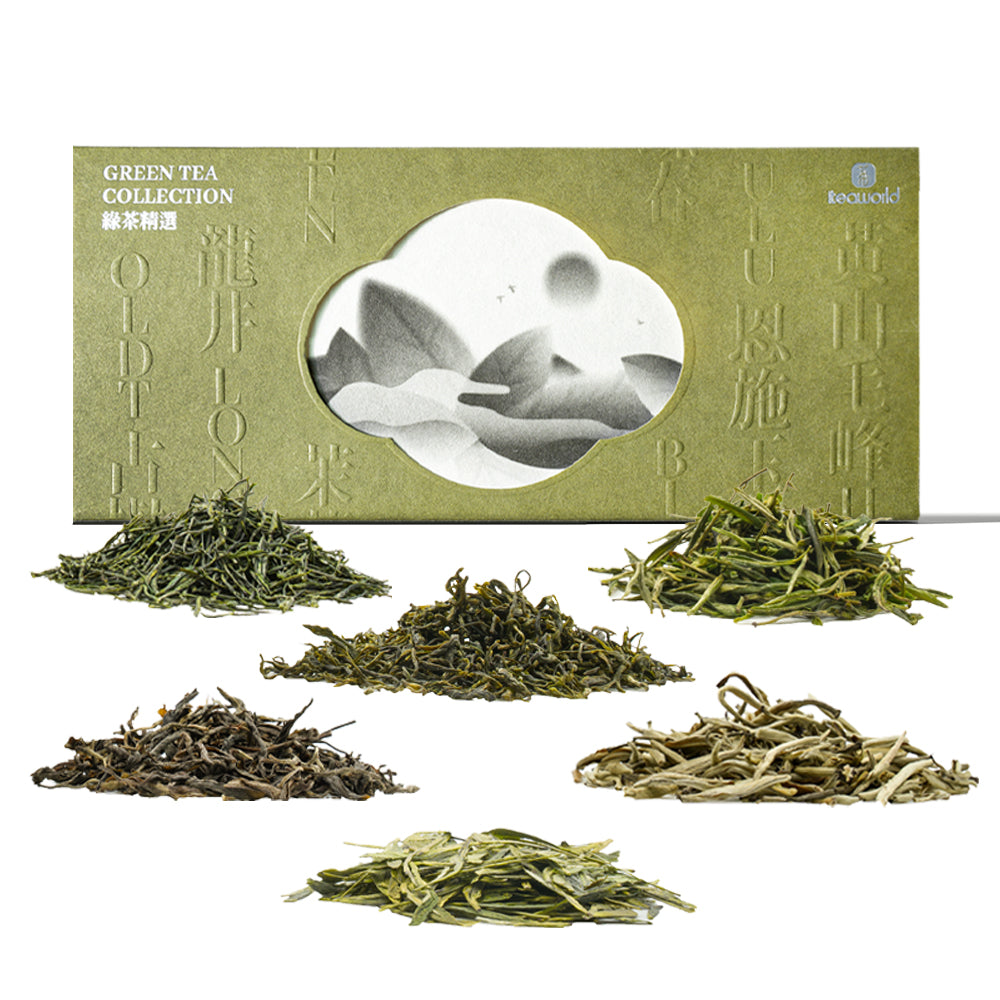

Chinese Green Tea Collection – 6 Premium Teas for Tea Lovers 100g
From $16.99 USD
Unit price perChinese Green Tea Collection – 6 Premium Teas for Tea Lovers 100g
From $16.99 USD
Unit price perSip Serenity: Six Exceptional Green Teas, Each a Poetic Journey. From Enshi to Huangshan, a tribute to tea farmers. Close your eyes, and feel nature's embrace. Featuring Enshi Jade Dew, Dragonwell, Biluochun, Jasmine Green Tea, Ancient Tree Green Tea, and Huangshan Maofeng. Experience Chinese green tea's essence, a cleansing calm like riverside willows in spring. Embrace serenity, and savor leisure with every cup.
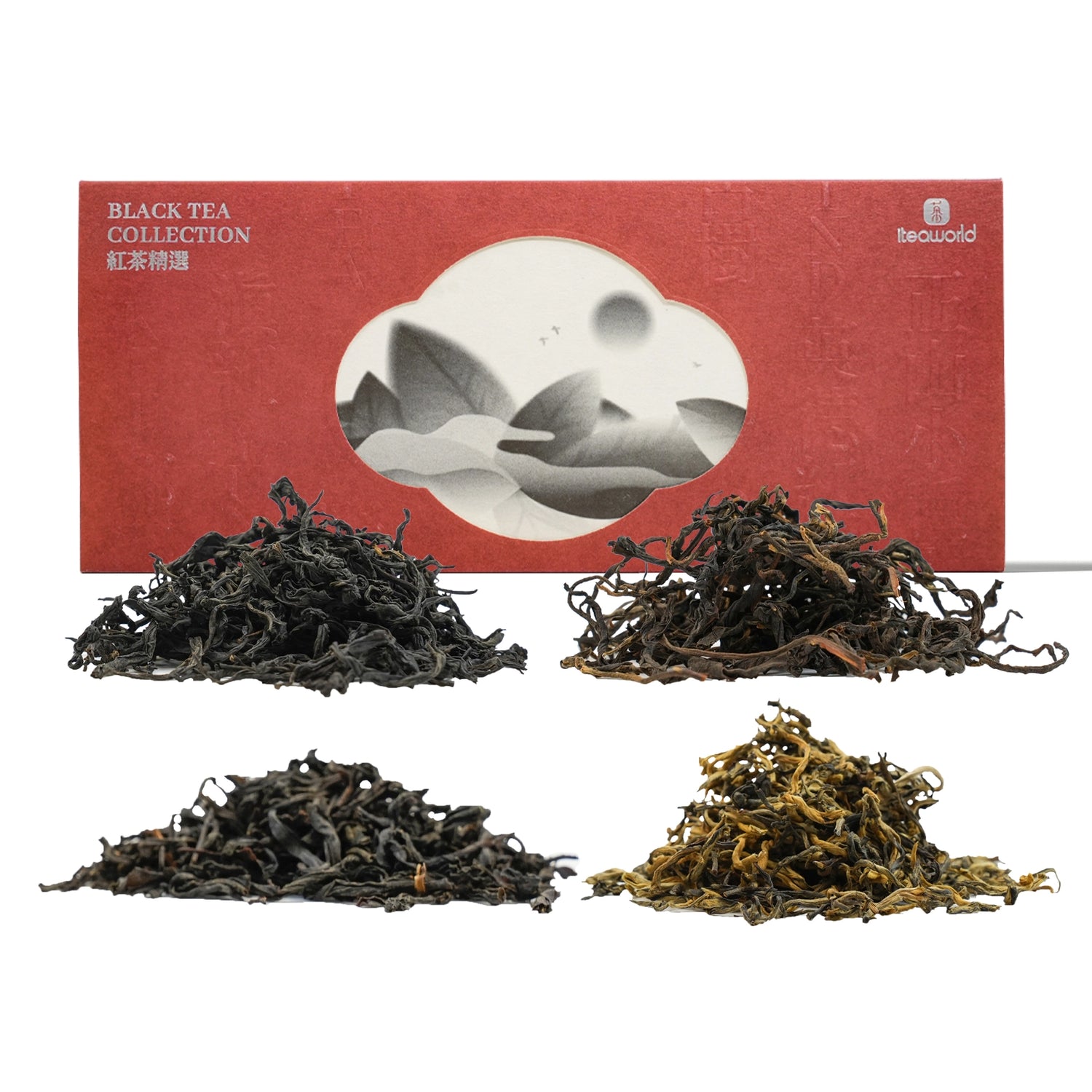

Chinese Black Tea Collection – 4 Premium Teas for Tea Enthusiasts & Gifting 100g
$39.99 USD
Unit price perChinese Black Tea Collection – 4 Premium Teas for Tea Enthusiasts & Gifting 100g
$39.99 USD
Unit price perDiscover Authentic Chinese Black Tea Collection
Chinese black tea has a 400-year heritage and remains deeply rooted in tradition. From the smoky pine notes of Tongmuguan’s classic Zhengshan Xiaozhong, to the refined, fruity aromas of Keemun prized by European royalty, to the full-bodied richness of Yunnan’s ancient-tree Gongfu black tea, each variety tells a unique story. What sets these teas apart is the dedication to traditional, hands-on methods: the leaves are handpicked, sun-wilted, and even slow-dried over charcoal or pinewood fires to preserve their natural shape and complexity. This commitment results in whole-leaf teas with a depth and character far beyond mass-produced, machine-processed black teas.
iTeaworld has curated this premium selection to showcase China’s finest and most diverse black teas, capturing varying fermentation levels and distinct terroir influences. Whether you’re a tea enthusiast looking to experience authentic Chinese flavors or seeking a unique gift, this collection offers a refined tasting journey through China’s rich tea-making legacy.
Note: Chinese high-quality black teas are best enjoyed on their own, without milk or sugar. If you prefer a stronger, milk-friendly tea, this may not be the ideal collection for you. But for those who appreciate nuanced, natural flavors, this set is an invitation to explore a truly exceptional tea experience.
Premium Chinese Black Tea Collection
Featuring the most authentic and popular black teas from China's top regions:
Wuyi Zhengshan Xiaozhong (Lapsang Souchong): 5 packs x 5g
Yunnan Golden Bud Black Tea: 5 packs x 5g
Keemun Black Tea: 5 packs x 5g
Yunnan Ancient Tree Black Tea: 5 packs x 5g
O U R T E A R E G I O N S
Lapsang Souchong (Pine-Smoked) : Tongmu Village, Xingcun Town, Wuyishan City, Fujian Province
Dianhong Golden Buds Black Tea: Fengshan Town, Fengqing County, Yunnan Province
Keemun Black Tea: Ruokeng Township, Qimen County, Anhui Province
Century-Old Tree Black Tea: Jingmai Mountain, Huimin Town, Lancang County, Yunnan Province
Discover the Essence of White Tea: A Tasting Collection
Are you curious about the differences between white teas? Our White Tea Tasting Collection is designed to guide you through the most popular types of white tea—all in one beautifully curated box. This set makes it easy to explore and savor the unique characteristics of each tea, helping you identify your favorite for future purchases.
Inside, you’ll find four distinct types of white tea, all sourced from Fujian’s Fuding region, the heart of authentic white tea production. Each tea is crafted using traditional sun-drying methods, ensuring they are perfect for long-term aging and enjoyment.
Your Journey Through White Tea: Fresh & Aged Favorites
White tea is as versatile as it is elegant. In China, premium white teas like Silver Needle and White Peony are often enjoyed fresh, while teas like Gongmei and Shoumei are treasured for their bold, rich flavors after years of aging. To showcase this tradition, we’ve included both fresh and aged teas in this collection, offering a complete white tea experience.
Here’s what’s inside:
Silver Needle (Baihao Yinzhen): Made from pure tea buds, this 2024 harvest is floral, smooth, and sweet—perfect for enjoying fresh and ideal for long-term storage.
White Peony (Bai Mudan): With one bud and one leaf, this 2024 spring tea balances freshness with soft fruity notes. Enjoy it now or save it for later.
Gongmei: Aged for 4 years (2021), this tea features one bud and two leaves, offering a richer body and a honey-like sweetness. Best enjoyed steeped or simmered for a cozy brew.
Shoumei: Also aged for 10 years (2014), this tea is made from larger leaves, delivering a full-bodied, bold flavor that truly shines when simmered.
As the Chinese saying goes, “One year tea, three years medicine, seven years treasure.” This highlights the magic of white tea—it’s delightful fresh and transforms into something extraordinary with age.
Whether you’re new to white tea or a lifelong enthusiast, this collection offers a thoughtful way to explore its diversity. It’s perfect for personal discovery or as a special gift for any tea lover!
How to Brew Silver Needle and White Peony :
Water Temp: 194–203°F (or 90-95℃)
Tea-to-Water: 1g per 25ml
Steep Time: 30 sec first steep, add 5 sec each time
Teaware: White porcelain gaiwan
Re-Steep: 5-7 times
Pour Tip: Pour along the gaiwan’s side, not directly on leaves
How to Brew Shou Mei and Gong Mei White Tea:
Thermos Brewing
1g tea per 100ml (3.4oz) water.
Boiling water (212°F).
Steeping Time: 1-2 hours.
Recommended Tool: Insulated thermos.
Boiling Method:
Add 1g of tea per 100ml (3.4oz) water.
Boil for 1-2 minutes, then let it sit for 2-3 minutes.
For each rebrew, boil 3 minutes longer.
Use a glass or ceramic teapot.
Enjoy up to 3 brews.
Origin:
Diantou Town, Fuding City, Fujian Province
Storage Tips:
Keep tea dry, with moisture below 8.5%.
Store at a temperature around 77°F (25°C) and relative humidity under 45%.
Avoid light, odors, and exposure to air.
White tea aged three years or more can be classified as "aged white tea," offering even more complex flavors for collectors and enthusiasts.
Savor the Essence of Iced Tea with iTeaworld's Loose Leaf Cold Brew Tea Sampler. Click to Chill Now! Free Shipping on First Order. Shop iTeaworld!
It includes Jasmine Green Tea, Jasmine Black Tea, Rose Black Tea, and Fenghuang Dancong Oolong Tea.
Why this product?
Many people are unclear about what qualifies as aged tea and how to tell the age of tea. iTeaworld has been working with aged tea in the Chinese market for 20 years. We believe that for tea to be considered "aged," it should meet these three criteria: 1. It should have an aged or woody aroma. 2. The tea liquor should be smooth, rich, and sweet. 3. There should be a noticeable warm sensation in the body, especially in the hands and feet, after drinking.
Based on this standard, we’ve selected 10 aged teas, including Oolong, black tea, white tea, dark tea, Pu-erh, and green tea, to help tea lovers understand what aged tea really is.
The product includes:
1995 Shui Xian Oolong Tea: 2 packs of 5g each
1998 Tie Guan Yin Oolong Tea: 2 packs of 5g each
1995 Fenghuang Dancong Oolong Tea: 2 packs of 5g each
1998 Raw Pu-erh Tea : 2 packs of 5g each
2003 Ripe Pu-erh Tea : 2 packs of 5g each
2008 Shuangzheng Liu Bao Dark Tea: 2 packs of 5g each
2014 Shou Mei White Tea: 2 packs of 5g each
2014 Lapsang Souchong Black Tea: 2 packs of 5g each
1998 Jasmine Green Tea: 2 packs of 5g each
1980s Aged Fu Brick Dark Tea: 2 packs of 5g each
How to brew:
Brewing utensils: White porcelain Gaiwan or Zisha teapot.
Water temperature: 95°C-100°C
Tea-to-water ratio: 1:15-25
Brewing time: 10-20seconds
Number of brews: 5-7 times
Why Aged Tea is Still Drinkable:
The reason aged tea can still be consumed safely lies in the unique chemistry of tea leaves and traditional storage methods. Tea contains powerful antioxidants like catechins and polyphenols, which naturally help slow oxidation, keeping tea consumable for extended periods. Dried tea absorbs only minimal moisture and oxygen, meaning it doesn’t provide the damp environment that bacteria need to grow. As long as tea is stored properly—dry, cool, and sealed against odors—it won’t spoil easily, and you can enjoy it without worries if there’s no mold or strange smells.
How Different Types of Tea Age:
Dark Tea (Hei Cha)
Dark tea, when properly aged, undergoes microbial transformations that mellow its flavor. Over time, compounds like caffeine and polyphenols break down, shifting the taste from bitter to smooth and rich. Dark tea requires specific storage conditions: dry, airy, and cool, to support this mellowing process.
White Tea
In China, there’s a saying about white tea: "One-year tea, three-year medicine, seven-year treasure." Aging for three years or more brings out richer flavors and enhances its perceived medicinal value. As white tea ages, the leaves soften in flavor and aroma, creating a more layered drinking experience.
Black Tea
Black tea generally maintains its natural sweetness and fragrance over time, and since its flavor doesn’t improve with aging, most black teas are best enjoyed fresh. However, certain types of compressed black teas, like Hunan's Fu Brick, can develop deeper flavors with storage due to gradual microbial changes.
Oolong Tea
Roasted Oolong teas like Wuyi Rock Tea (Yan Cha) gain complexity as they age. The roasted notes soften, and the tea develops a distinctive “aged aroma,” adding richness and hints of sweetness. Proper storage is essential to preserve its unique characteristics: keep it dry, away from direct sunlight, and sealed to maintain freshness.
Jasmine Green Tea
Jasmine Green Tea, infused with fresh jasmine flowers, has a unique floral aroma that is best enjoyed within one or two years. Over time, the green tea component oxidizes, leading to a darker color and a softer floral note. To preserve the jasmine aroma and freshness, it’s ideal to store it sealed, in a cool, dry place, or even refrigerate it if possible.
Why We Made This Tea:
Biluochun is one of China's most famous green teas, cherished by tea enthusiasts worldwide for its unique flavor and aroma. However, many people often feel confused when choosing Biluochun: Is a higher grade more suitable, or is a lower grade enough? To help you better understand this, we have introduced this set of nationally recognized Biluochun teaching samples.
Product Introduction:
This Biluochun grade series includes five grades: Special Grade One, Grade One, Special Grade Two, Grade Two, and Grade Three. Each tea has been certified by the China Tea Association and is a nationally recognized Biluochun grade teaching sample. By tasting Biluochun of different grades, you will be able to systematically understand their characteristics and flavor differences, thus finding the tea that best suits your taste and needs. In addition, this series of products comes from the Biluochun Tea Factory in West Mountain, Wuzhong District, Suzhou City. The tea leaves grow in an environment with distinct seasons and a suitable climate, ensuring their authenticity in origin, variety, and flavor, as well as high quality and unique natural floral and fruity aroma.
We hope that through this series, we can help tea friends who wish to delve into Biluochun to provide a comprehensive tasting experience. It's not just a taste enjoyment, but also an in-depth exploration of Chinese tea culture.
Reasons to Recommend This Tea:
This series is designated by the China Tea Science Society as a teaching sample.
It is the most authentic Biluochun, coming from the core area of Biluochun in West Mountain, Taihu Lake, Suzhou City, Jiangsu, which is the core origin of the authentic Dongting Biluochun, surrounded by Taihu Lake on all sides.
Excellent natural environment: Taihu Lake surrounds West Mountain, where both tea and fruit are grown. The island is planted with loquat trees, plum blossom trees, and plum trees, giving the tea a unique natural flavor all year round. Geese are raised on the island, forming natural fertilizer.
The most authentic Biluochun tea plant varieties are used, which are local to Dongting Mountain, including "Jiang Ban Tou," "Liu Ye Tiao," and "Chu Ye Zhong."
Each tea goes through a strict selection and production process, including hand-picking and hand-firing, making it a pure handcrafted tea.
Suitable for:
Those who like Biluochun and want to experience the authentic flavor.
Those who want to delve into the flavor differences of different grades of Biluochun.
Those who want to systematically understand the Chinese green tea system.
Not suitable for:
Those who don't care much about subtle flavor differences.
Those who don't like the elegant and delicate flavor of green tea.
Groups sensitive to tea prices.
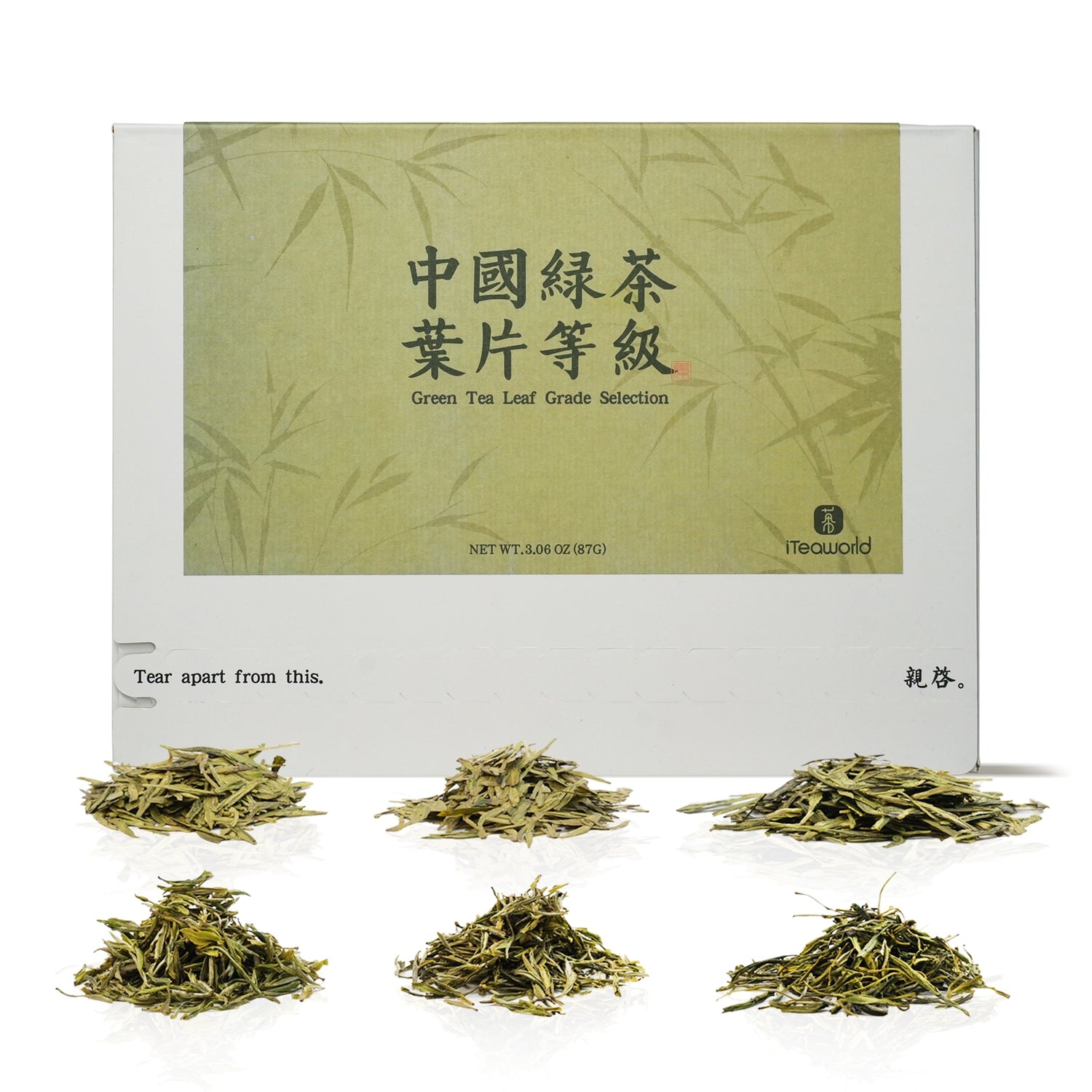
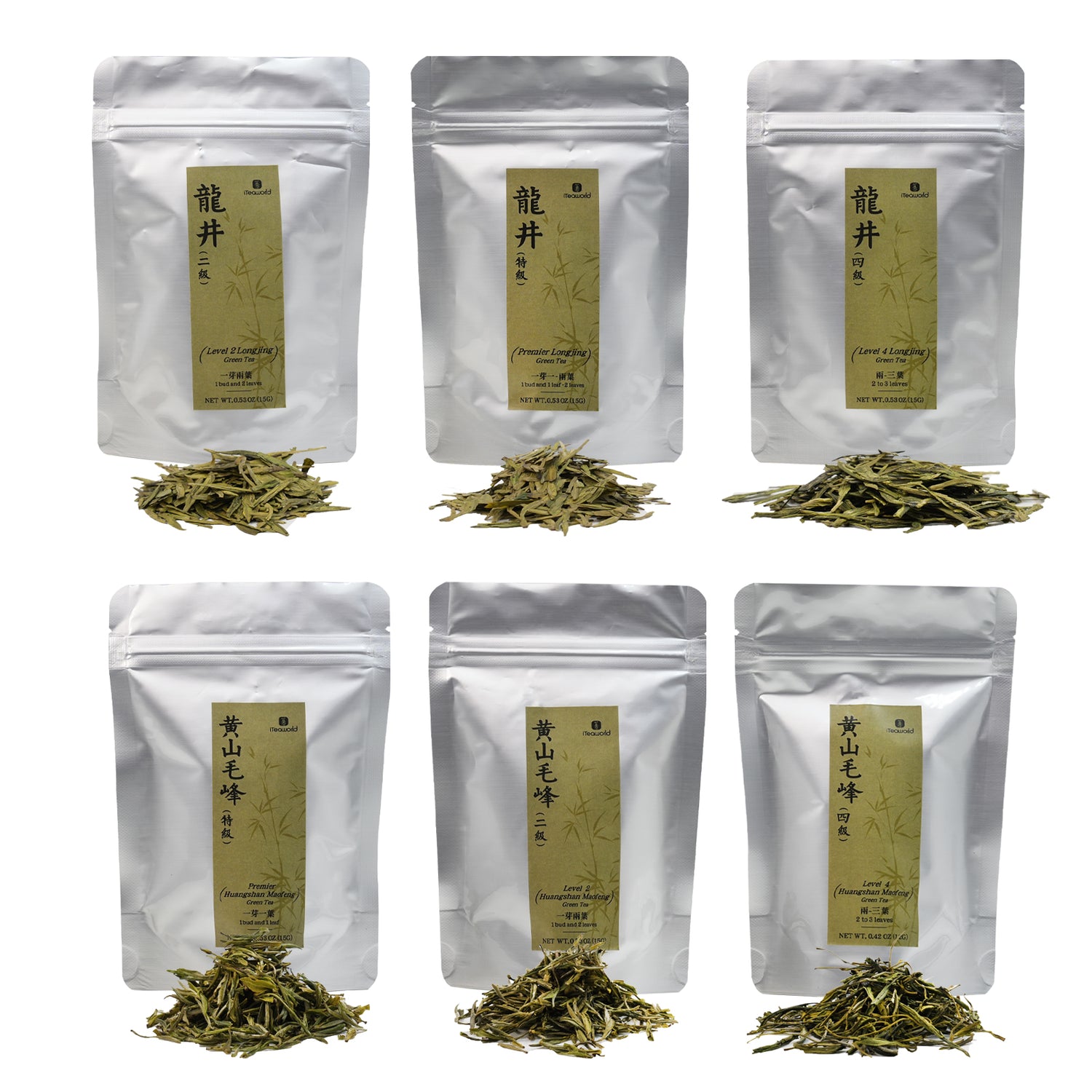
Chinese Green Tea Comparison Set: Longjing & Huangshan Maofeng Grades 90g
$34.99 USD
Unit price perChinese Green Tea Comparison Set: Longjing & Huangshan Maofeng Grades 90g
$34.99 USD
Unit price perIntroducing our Green Tea Leaf Grade Collection, a specially curated collection designed to help you discover how the picking grade of green tea leaves affects its flavor, aroma, and overall tea-drinking experience. This set includes two renowned Chinese green teas—Dragon Well (Longjing) and Huangshan Maofeng—both made from traditional heirloom varietals. The only difference? The picking grade of the leaves. You’ll be able to taste three distinct grades:
One bud, one leaf
One bud, two leaves
One bud, three leaves
Each tea is handpicked and processed by the same experienced tea master to ensure consistency in craftsmanship. By tasting the subtle variations from these different leaf grades, you'll develop a deeper understanding of green tea and find the perfect grade for your personal preferences.
Reasons for Recommendation:
Learn and explore – This set allows tea lovers to understand the direct impact of leaf grade on the tea’s taste, texture, and aroma.
Personalized tea experience – After trying different grades, consumers can better choose the perfect tea for their own palate.
Curated craftsmanship – The teas are crafted by the same master, so the only difference is the picking grade, ensuring a true comparison experience.
High-quality varietals – Made from traditional heirloom tea trees, these teas offer an authentic Chinese tea experience, highlighting the care and expertise in production.
This set is perfect for anyone curious about the nuances of green tea or those who wish to refine their tea selection skills. Whether you're a tea enthusiast or just getting started, this collection will guide you through the art of green tea grading and tasting.
Introduction:
This collection offers a unique opportunity to explore the subtle differences in flavor, aroma, and texture created by three distinct tea tree varietals, all using the same harvesting grade: one bud and two leaves. You’ll experience Longjing (Dragon Well) green tea made from three renowned tea tree varietals: Wu Niu Zao, Longjing #43, and the heritage Longjing Qunti. Though harvested and processed in the same way, each tea reflects its unique tree’s characteristics. This collection allows tea lovers to discover their preferred varietal of this classic green tea.
Net weight of tea: 45g, including:
Longjing Green Tea (Wuniuzao variety): 15g
Longjing Green Tea (Qunti variety): 15g
Longjing Green Tea (Longjing 43 variety): 15g
The origins of the 3 types of Longjing tea: Tianmu Mountain, Shengzhou City, Shaoxing, Zhejiang Province, China.
Key Benefits:
Explore Different Varietals: Taste the difference between three tea tree types that shape the final flavor and texture of Longjing tea.
Educational Tasting Experience: Perfect for tea enthusiasts looking to learn about how different varietals affect tea’s character.
Authentic Craftsmanship: Each tea is crafted using traditional methods to retain the unique characteristics of each varietal.
Heritage and Innovation: From the traditional Qunti varietal to the newer Longjing #43, this collection offers a blend of tradition and modern cultivation.
Recommendation Reasons:
Understand Varietal Differences: This collection is designed for those who want to explore how tea tree varietals influence the taste and mouthfeel of Longjing tea.
Same Harvesting Grade, Different Flavors: You get to compare teas made from the same harvesting standard (one bud and two leaves) but from different varietals, highlighting subtle yet meaningful differences in flavor.
Quality and Expertise: Made by experienced tea masters, this collection brings the highest quality Longjing green tea directly to your cup.
Value for Tea Enthusiasts: This curated set offers a chance to taste and compare teas that are not always easy to find in Western markets.
Someone asked, "I'm new to Chinese green tea and want to try some well-known varieties without compromising on quality." This collection is curated just for that. We've handpicked the top 4 out of China's 10 famous green teas: Longjing, Biluochun, Huangshan Maofeng, and Lu'an Guapian. We've sourced these directly from authentic growers in the classic production areas, offering great value for money. Additionally, we've chosen high-altitude teas from seed-propagated group plantations and crafted by tea masters with over 20 years of experience. Each tea is a spring harvest from 2024. Here's a brief introduction to each:
Lu'an Guapian: A Unique Green Tea 15g
Lu'an Guapian is a historic Chinese tea that was once a tribute to the royal family. This precious green tea still maintains its unique traditional craftsmanship and flavor. Our gourmet Lu'an Guapian is handcrafted by a master with 30 years of experience, using leaves from the small-leaf tea plants in Qi Mountain, Lu'an, Anhui, grown at an altitude of 600 meters. Picked at the end of spring, the leaves are tender with a rich aroma and a refreshing taste. The end-of-spring tea is more affordable than early spring tea, with a more pronounced tea flavor and a slightly reduced aroma. Lu'an Guapian is picked by selecting only the second leaf from the bud and two leaves, discarding the stem and tender leaves, retaining the essence of the tea to ensure the purity and delicate freshness of the tea soup.
Biluochun: A Premium Green Tea from China 15g
Biluochun is one of China's most famous green teas, known for its high-temperature killing and initial pan-frying followed by slow low-temperature drying. Unlike Longjing's pan-frying, dried green tea has a distinct bean flavor, but Biluochun's frying aroma is not prominent, offering a more refreshing taste. This high-grade Biluochun has a slight floral and fruity fragrance, slightly sweet without bitterness, and abundant downy hairs. Despite its high grade and flavor, it's affordably priced because it's made from tea plants in Sichuan, not the authentic Dongting Biluochun from Suzhou, Zhejiang.
Huangshan Maofeng: A Delightful Green Tea 12g
Huangshan Maofeng represents the high-mountain green teas of China, grown from 60-year-old tea trees in loamy soil at an altitude of 800 meters. Crafted by experienced tea masters using traditional drying techniques, this tea offers a perfect balance of quality and value. It's rich in minerals and exudes a refreshing green tea aroma with a subtle orchid fragrance. Its sweet and gentle flavor is endlessly memorable, making it ideal for daily drinking, especially for those who prefer a sweet taste without bitterness. The spring-picked high-mountain leaves add to its unique sweet taste and soft texture.
Longjing: A Famous Green Tea 15g
We're committed to providing an authentic Longjing tea, different from the popular low-grade "machine-cut Longjing." Our tea is selected from the traditional Longjing variety in Lishui, Zhejiang, crafted semi-manually by Longjing masters with over 30 years of experience, combining traditional techniques with modern conveniences. We choose to pick our tea after Grain Rain and before the beginning of summer, when the flavor is similar to pre-Grain Rain tea, but more affordable. Our tea comes from high-altitude gardens (900-1000 meters), where the climate and altitude provide an environment similar to West Lake, ensuring superior quality and value.
Our Longjing tea is of a high grade, carefully selected from one bud and two leaves to one bud and three leaves, offering complete leaves in contrast to the machine-cut tea with more stems and incomplete leaves. Our goal is to offer a genuine variety and craftsmanship of high-quality Longjing tea at an entry-level price, ensuring every cup exudes the pure aroma and elegant taste of traditional Longjing
You may have tried various green teas, like Longjing, Zhucha, and Jasmine tea, but you're looking to explore more high-quality, reasonably priced Chinese teas. To ensure value, we've carefully selected premium teas from China's top ten famous varieties, following these key principles:
Collaborating with experienced tea masters to ensure traditional and skilled craftsmanship.
Choosing high-grade leaves—one bud and one or two leaves—while hand-picking out stems and dust to ensure purity.
Sourcing directly from tea farmers to maintain freshness and quality, cutting out the middleman.
Ensuring our selections are fresh spring teas from 2024 to capture vibrant flavors and aromas.
Picking high-quality leaves from authentic tea varietals to guarantee unique taste.
Balancing quality with affordability to meet consumer needs.
Sourcing from core production areas or nearby regions to ensure consistency in terroir.
Avoiding lower-grade flatland teas, focusing on those grown at altitudes above 600 meters to enhance flavor complexity.
Net weight: 90g, including:
Premium Biluochun: 15g
Premium Enshi Yulu: 15g
Premium Xinyang Maojian: 15g
Premium Lu'an Guapian: 15g
Premium Taiping Houkui: 15g
Premium Huangshan Maofeng: 15g
Here’s a brief overview of each tea:
Huangshan Maofeng: This tea is sourced from a renowned high mountain region, featuring tea trees over 60 years old grown in gravelly soil at 800 meters elevation. Recognized as a national intangible cultural heritage, Huangshan Maofeng boasts a distinctive aroma with floral and sweet notes, producing a clear, bright green-yellow tea that offers a pure high mountain experience.
Liu'an Guapian: This historic royal tribute tea was once reserved for the imperial family. Our premium Liu'an Guapian is hand-crafted by a master with decades of experience, sourced from high-altitude tea plants at 600 meters. The spring-harvested leaves ensure a rich fragrance and refreshing flavor, resulting in a pure, lingering aftertaste.
Taiping Houkui is a famous green tea from the Taiping area of Huangshan, Anhui Province, China. It comes from the core production region—Qiaoshan Village in Xinming Township—known for its cool, humid climate and fertile soil, perfect for growing tea. Our premium Taiping Houkui is made from one bud and three leaves, usually harvested around the Grain Rain season, with fine white fuzz on the leaves indicating top quality. The tea is grown from the traditional seed-propagated ‘Shi Da Shu’ variety, which matures later than usual. Due to the high altitude in Huangshan, the first harvest also takes place around Grain Rain. We work with Master Yu Jianguo, a tea farmer with over 20 years of experience, to produce this tea, which has a fresh flavor and aroma.
Biluochun: As one of the most iconic green teas in China, Biluochun is renowned for its unique floral and fruity aroma. Our premium Biluochun is sourced from Liyang, Jiangsu Province, crafted using traditional methods, and picked at the pre-rain period, ensuring a fresh, delicate flavor with minimal bitterness. This high-quality tea offers excellent value, priced at half to a third of similar products from core regions.
Xinyang Maojian: A top Chinese green tea, Xinyang Maojian comes from the core production area in Shihe District, Xinyang, located in high-altitude mountains at 900 meters. The significant temperature difference between day and night creates a unique elegant aroma and a fresh, flavorful taste. Our 2024 spring harvest features the highest quality leaves, with fine white hairs indicating superior quality.
Enshi Yulu: This historic steamed green tea is the only one in China that retains this traditional crafting method. Our Enshi Yulu comes from the core area in Enshi, Hubei, handpicked and crafted by a tea farmer with over 20 years of experience. Using high-grade leaves, this tea is fresh, rich, and slightly reminiscent of seaweed, while also being rich in natural selenium, known for its immune-boosting and antioxidant properties.
Looking for a Caffeine-Free Green Tea Alternative?
While we don’t offer caffeine-free green tea, we’ve carefully selected three herbal teas processed in a similar way to green tea—offering comparable freshness and aroma. These unique teas have been valued in traditional Chinese tea culture for centuries.
Jin Qian Liu – Sweet Tea Tree (Cyclocarya Paliurus)
Grown in the lush regions of southern China, this naturally sweet herbal tea is made from the leaves of the Cyclocarya Paliurus tree. Its smooth, mellow flavor makes it a perfect choice for anyone looking for a gentle, caffeine-free infusion. Traditionally, it has been appreciated for its balance and calming taste.
Wild Cliff Tea (Shi Ya Cha)
Harvested from wild tea trees on the rocky cliffs of Guangxi, this rare herbal tea delivers a robust, aromatic experience. With a rich profile and sweet finish, it’s known as “tea of the immortals” in local folklore. It is naturally high in flavonoids, which contribute to its full-bodied taste.
Vine Tea – Zhangjiajie Mei Tea (Ampelopsis grossedentata)
Thriving in the misty highlands of Zhangjiajie, Vine Tea is celebrated for its vibrant, refreshing flavor. Known as the “King of Flavonoids,” this herbal infusion contains a naturally high concentration of flavonoids, offering a satisfying, clean finish with every sip.
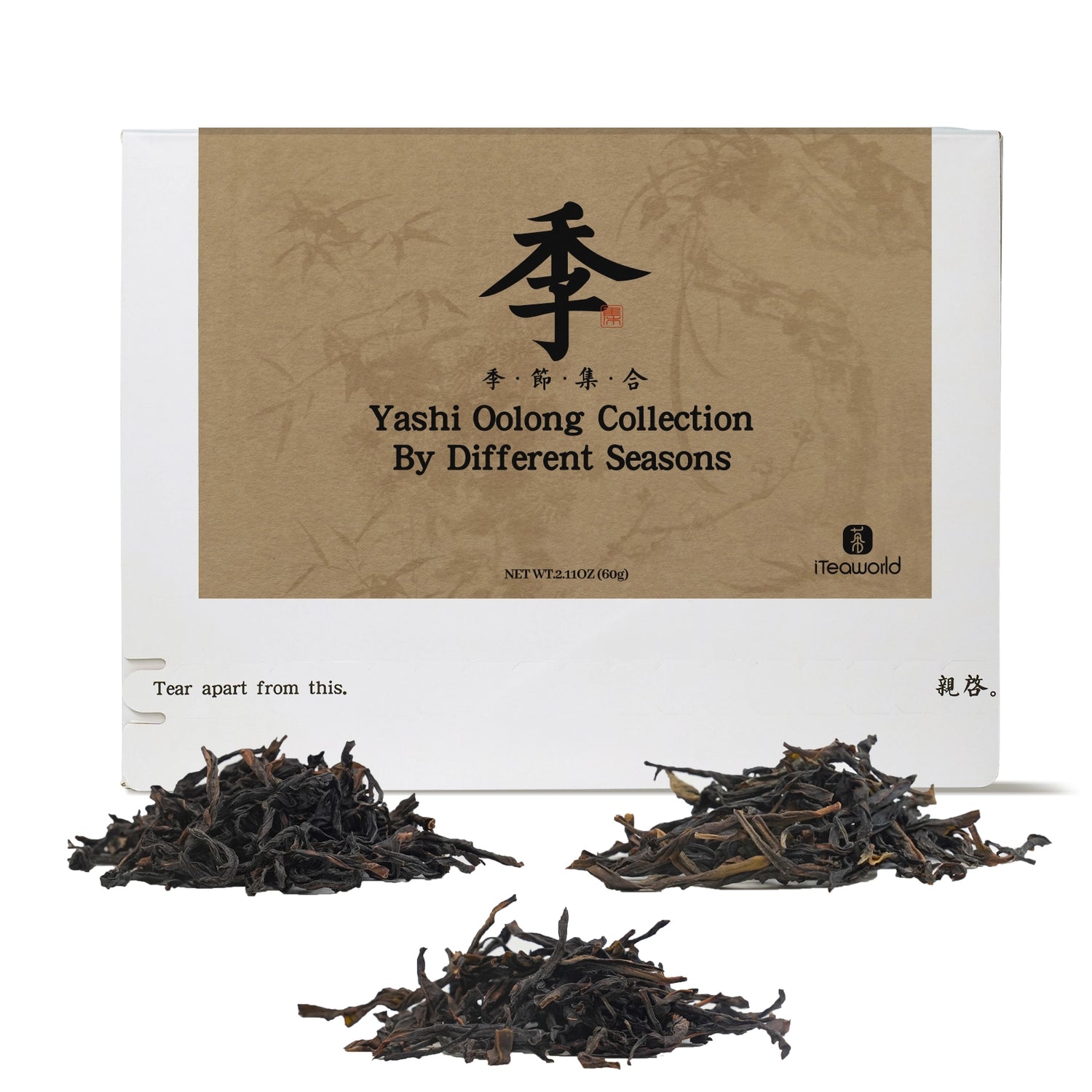
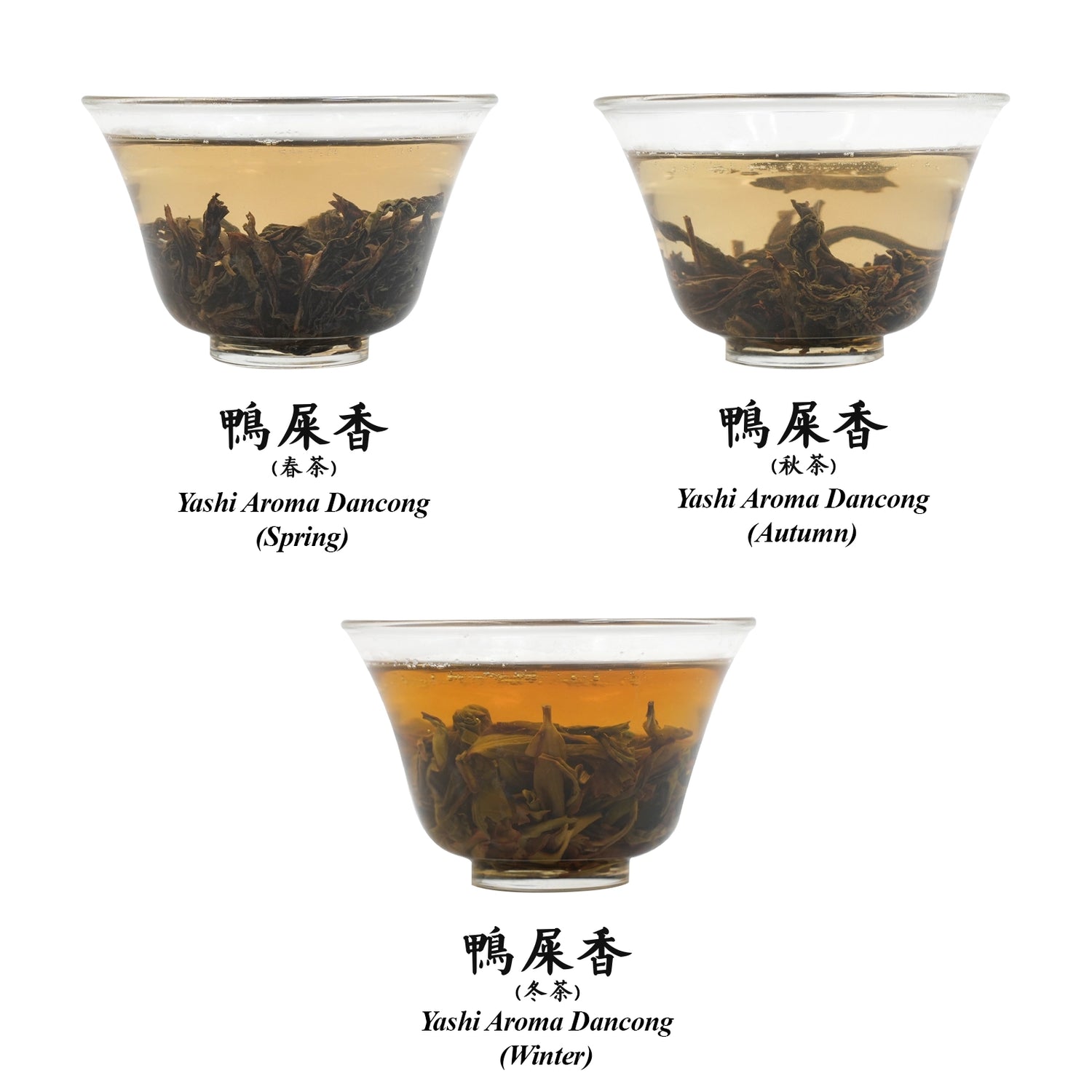
Ya Shi Xiang oolong Comparison Set – Spring, Autumn & Winter Varieties 60g
$19.99 USD
Unit price perYa Shi Xiang oolong Comparison Set – Spring, Autumn & Winter Varieties 60g
$19.99 USD
Unit price perSeasonality of Oolong Tea
Oolong tea can be harvested in all four seasons: spring, summer, autumn, and winter. However, Wuyi rock tea is only harvested in the spring. Oolong teas picked in the midday usually have the most pronounced aroma. Summer teas are mostly used in milk tea and are less common in loose leaf tea markets.
Spring teas tend to grow slower, resulting in higher levels of amino acids and tea polyphenols, with a lower ratio of phenols to amino acids. However, due to the frequent rainy weather in tea-growing areas like Fujian and Guangdong, spring teas may have less aromatic compounds than autumn or winter teas. Therefore, autumn and winter oolongs tend to have a stronger aroma. Winter oolongs, in particular, may even have a crisp, cold-like fragrance. Spring oolongs, on the other hand, tend to be richer in substances, offering a sweeter and fresher taste.
This product features three different seasonal Duck Shit Aroma teas from the same tea master in Hutou Village, Fenghuang Town. The oxidation and roasting levels are different for each, as oolong tea is all about adjusting to the leaves' conditions. Winter leaves are thinner, so oxidation and roasting are usually lighter. Try these three teas to see if you can notice the flavor differences between the seasons.
Products Included:
- Ya Shi Xiang (Duck Shit) Dan Cong Oolong(Spring) 20g
- Ya Shi Xiang (Duck Shit) Dan Cong Oolong(Autumn) 20g
- Ya Shi Xiang (Duck Shit) Dan Cong Oolong(Winter) 20g
Origin:Hutou Village, Fenghuang Town, Chaoan District, Chaozhou City, Guangdong Province, China
Master Blender:Lin Shupeng
Processing Time:November 20, 2024
Best Before Date:36months
Tea Variety:Ya Shi Xiang (Duck Shit) Dan Cong variety
Altitude:300-400 meters
Soil Type:yellow soil
Oxidation Level: Medium oxidation (40-50%)
Roasting Level:
- Spring: Two roasts, medium fire, around 100°C (212°F)
- Autumn: Two roasts, medium fire, around 100°C (212°F)
- Winter: One roast, light fire, around 80°C (176°F)Very light roast, 70-80°C (158-176°F)
Roasting Method (Charcoal or Electric):charcoal briquetting
Brewing Recommendations:
Chinese-Style Oolong Brewing
- Teaware: Gaiwan or clay teapot
- Water Temp: 212°F (100°C)
- Tea-to-Water Ratio: 1g per 0.7 oz (20ml)
- Steep Time: 15 sec (1-3 steeps), add 5-10 sec after
- Re-Steep: Up to 7 times
Western-Style Oolong Brewing
- Teaware: Teapot, infuser, or French press
- Water Temp: 212°F (100°C)
- Tea-to-Water Ratio: 1 tsp (2-3g) per 8 oz (240ml)
- Steep Time: 3-5 minutes
- Re-Steep: Up to 3 times, adding 1minutes each time
Soil Environment
In The Classic of Tea by Lu Yu, it’s mentioned that tea trees grow best in different types of soils: “the best grow in rotten rocks, the middle in gravelly soil, and the worst in yellow earth.” Soil with rocks provides good drainage and airflow, preventing both waterlogging in heavy rain and dryness during droughts. It’s rich in minerals, and tea trees thrive in soil that’s both moist and acidic. For example, the finest Wuyi rock teas grow in soil made up of rotten rocks and gravel. On the other hand, lower-grade Wuyi teas, which mainly grow in yellow earth, lack the signature rocky flavor and have simpler, less complex aromas and tastes.
If you want to experience how different soil types affect the flavor of oolong tea, the best example would be a collection of Wuyi Rock Teas from various environments. This includes:
Core Zhengyan Wuyi Tea: Known for its rocky, gravelly soil, represented by the famous Three Pits and Two Streams (San Keng Liang Jian).
Wuyi Zhengyan Tea: Grown in soils rich in sandy gravel rocks.
Wuyi Ban Yan Tea: Grown in thicker layers of rocky red soil.
Wuyi Zhou Tea: Grown in soils dominated by loess (yellow earth).
Products Included:
- Core Zhengyan Wuyi Tea(Core Zheng Yan)10g
- Wuyi Rou Gui (Zheng Yan) 10g
- Wuyi Rou Gui (Ban yan Tea) 20g
- Wuyi Rou Gui (Zhou Cha) 20g
Origin:
- Core Zheng Yan:Wuyuan Jian, Tianxin Village, Wuyi Town, Wuyishan City, Fujian Province
- Zheng Yan:Tianxin Village, Wuyi Town, Wuyishan City, Fujian Province
- Ban yan Tea:Jingshui Village, Xingcun Town, Wuyishan City, Fujian Province, China
- Zhou Cha:Xingtian Town, Wuyishan City, Fujian Province, China
Master Blender:
- Chen Hui
Processing Time:
- October 2024
Best Before Date:
- 36 months
Tea Variety:
- Wuyi Cinnamon Varieties
Altitude:
- Core Zheng Yan:342 meters
- Zheng Yan:400-500 meters
- Ban yan Tea:about 400 meters
- Zhou Cha: about 200 meters
Soil Type:
- Core Zheng Yan:Gravel Soil
- Zheng Yan:sandy gravelly soil
- Ban yan Tea:red soil dominated by thickly bedded rock
- Zhou Cha: yellow soil
Oxidation Level:Medium oxidation (45-55%)
Roasting Level:
- Core Zheng Yan:Three roasts, heavy fire, 105-110°C (221-230°F)
- Zheng Yan:Three roasts, heavy fire, 105-110°C (221-230°F)
- Ban yan Tea:Three roasts, heavy fire, 105-110°C (221-230°F)
- Zhou Cha: Two roasts, medium-heavy fire, around 115°C (239°F)
Roasting Method (Charcoal or Electric):
- charcoal briquetting
Brewing Recommendations:
Chinese-Style Oolong Brewing
Teaware: Gaiwan or clay teapot
Water Temp: 212°F (100°C)
Tea-to-Water Ratio: 1g per 0.7 oz (20ml)
Steep Time: 15 sec (1-3 steeps), add 5-10 sec after
Re-Steep: Up to 7 times
Western-Style Oolong Brewing
Teaware: Teapot, infuser, or French press
Water Temp: 212°F (100°C)
Tea-to-Water Ratio: 1 tsp (2-3g) per 8 oz (240ml)
Steep Time: 3 minutes
Re-Steep: 3 times, adding 1 minutes each time
Should You Really Buy High-Altitude Tea? This Product Might Help You Decide
High-altitude tea is grown in regions with big temperature differences between day and night, cooler temperatures, and frequent cloud cover. These conditions slow down the tea’s growth, keeping the leaves tender and rich in amino acids. This results in teas that are naturally sweeter, fresher, and more aromatic. High-altitude teas are perfect for light to medium oxidation and roasting levels. Examples of high-altitude oolongs include Taiwan High Mountain Tea and Phoenix Dan Cong.
Low-altitude teas, on the other hand, generally have higher levels of tea polyphenols, but tend to have a weaker aroma and lower endurance for multiple infusions.
This product features three Duck Shit Oolong teas, all crafted by the same tea master in Fenghuang Town with similar oxidation and roasting levels. The only difference is the altitude where they were grown, making it easy to compare how altitude affects the tea's flavor.
Products Included:
- Ya Shi Xiang (Duck Shit) Dan Cong Oolong (Low-Mountain) 20g
- Ya Shi Xiang (Duck Shit) Dan Cong Oolong (Medium-Mountain) 20g
- Ya Shi Xiang (Duck Shit) Dan Cong Oolong (High-Mountain) 20g
Origin:
- Lower Hill:Hutou Village, Fenghuang Town, Chaozhou City, Guangdong Province, China
- Middle Mountain:Fengxi Reservoir, Fenghuang Town, Chaozhou City, Guangdong Province, China
- High Mountain:Dongjiao Village,Fenghuang Town,Chaoan District,Chaozhou City,Guangdong Province,China
Master Blender:Lin zhiqiang
Processing Time:June 2023
Best Before Date:36 months
Tea Variety:Ya Shi Xiang variety
Altitude:
- Low-Mountain:300-400 meters
- Medium-Mountain:600 meters
- High-Mountain:800-900 meters
Soil Type: yellow soil
Oxidation Level:30-40%
Roasting Level:
- Low-Mountain:Two roasts, medium-light fire (95-105°C / 203-221°F)
1st roast: June-July 2023,2nd roast: After Mid-Autumn Festival 2023 - Medium-Mountain:Two roasts, medium-light fire (95-105°C / 203-221°F)
- High-Mountain: Three roasts, medium-light fire (95-105°C / 203-221°F),1st roast: June-July 2022,2nd roast: After Mid-Autumn Festival 2022,3rd roast: After Chinese New Year 2023
Roasting Method (Charcoal or Electric):charcoal briquetting
Brewing Recommendations:
Chinese-Style Oolong Brewing
Teaware: Gaiwan or clay teapot
Water Temp: 212°F (100°C)
Tea-to-Water Ratio: 1g per 0.7 oz (20ml)
Steep Time: 10-15 sec (1-3 steeps), add 5-10 sec after
Re-Steep: Up to 7 times
Western-Style Oolong Brewing
Teaware: Teapot, infuser, or French press
Water Temp: 190-200°F (88-93°C)
Tea-to-Water Ratio: 1 tsp (2-3g) per 8 oz (240ml)
Steep Time: 3-5 minutes
Re-Steep: Up to 3 times, adding 1-2 minutes each time
FAQs
A Tea Sampler is a curated collection of diverse tea varieties, allowing you to explore different flavors. Our Loose Leaf Tea Sampler offers a selection of premium loose leaf teas. It's the perfect introduction to discover your favorite blends or to gift a tea enthusiast.
Our Loose Leaf Tea Sampler is crafted with care, featuring a variety of handpicked loose leaf teas. Each sampler is designed to showcase the richness of our tea collection, providing a delightful experience for tea lovers. It's an ideal way to enjoy the quality and diversity of our teas.
Absolutely! Our Chinese Tea Sampler makes delightful gifts for any occasion. Whether it's a birthday, holiday, or special event, sharing the joy of unique tea blends is a thoughtful and appreciated gesture.
iTeaworld takes pride in offering a diverse range of Tea Samplers to cater to various preferences. Our collection includes Loose Leaf Tea Sampler sets featuring premium varieties of Oolong Tea, Black Tea, and Green Tea. Additionally, we offer specialized Tea Samplers for Cold Brew Teas, providing a refreshing twist on traditional brewing methods. Explore our selection to discover the rich tapestry of flavors in each category.
Tea sampler can bring convenience to your life. You can enjoy the tea provided by iTeaworld at any time. You don't need to set up and clean your tea set.
A Chinese loose leaf tea sampler can brew 1-2 cups of tea. You can adjust it to your taste and habits. Don't let the tea sample steep for too long or it will taste bitter.
iTeaworld offers an extensive selection of tea gifts to satisfy all your Chinese tea needs!
Chinese Tea Sampler: Ideal for newcomers to Chinese tea, this sampler features the classic representative teas of the six major types of tea in China.
Classic Tea Sampler: Featuring four oolong teas and four black teas, perfect for those new to tea tasting.
Black Tea Sampler: Explore the rich flavors of classic black teas with four varieties in one box.
Oolong Tea Sampler: Delve into premium oolong teas with four carefully selected varieties.
Green Tea Sampler: Discover the diversity of Chinese green teas with six exquisite options.
Cold Brew Tea Sampler: Enjoy four top-notch teas specially curated for cold brewing.
Dark Tea Sampler: Venture into the world of dark teas with ripe Puerh, Six Burger Tea, and four other black tea varieties included!
Explore our tea samplers today and embark on a flavorful journey through the world of Chinese tea!"
Absolutely! Our Tea Sampler sets make excellent tea gift options for friends or loved ones who appreciate the rich flavors of Chinese tea. With a variety of sampler options to choose from, including Chinese tea varieties, you can select the perfect set that matches their preferences and introduces them to the diverse world of tea. Whether they're new to tea tasting or seasoned enthusiasts, our Tea Samplers are sure to delight and make for a thoughtful and memorable gift.





